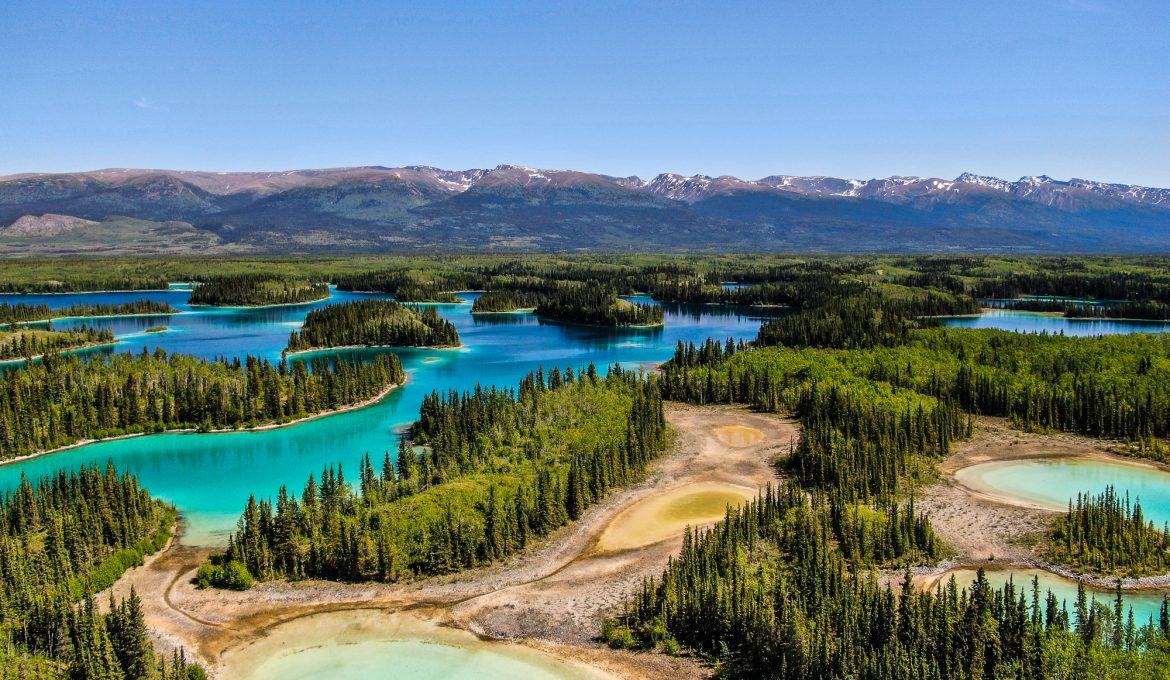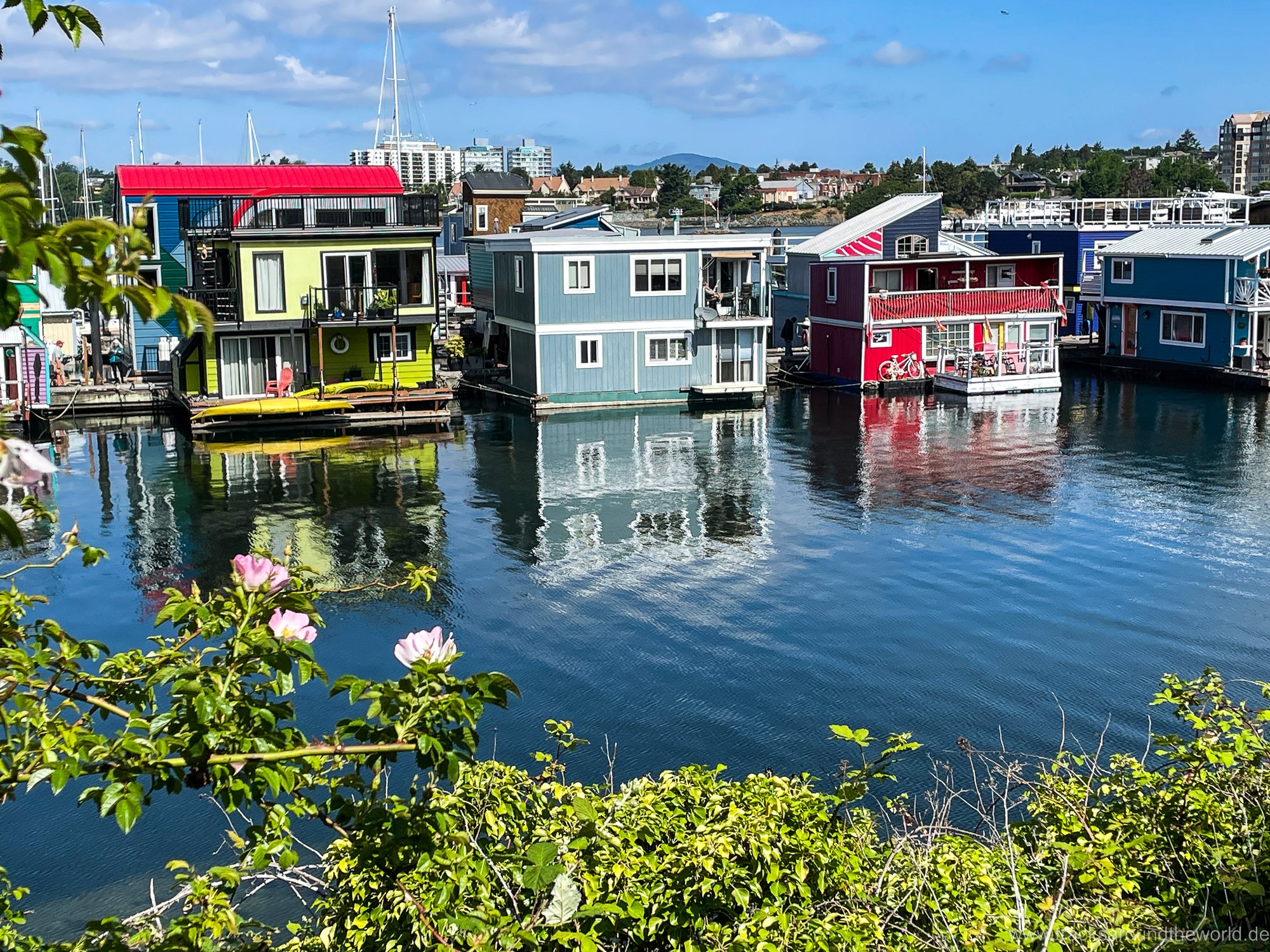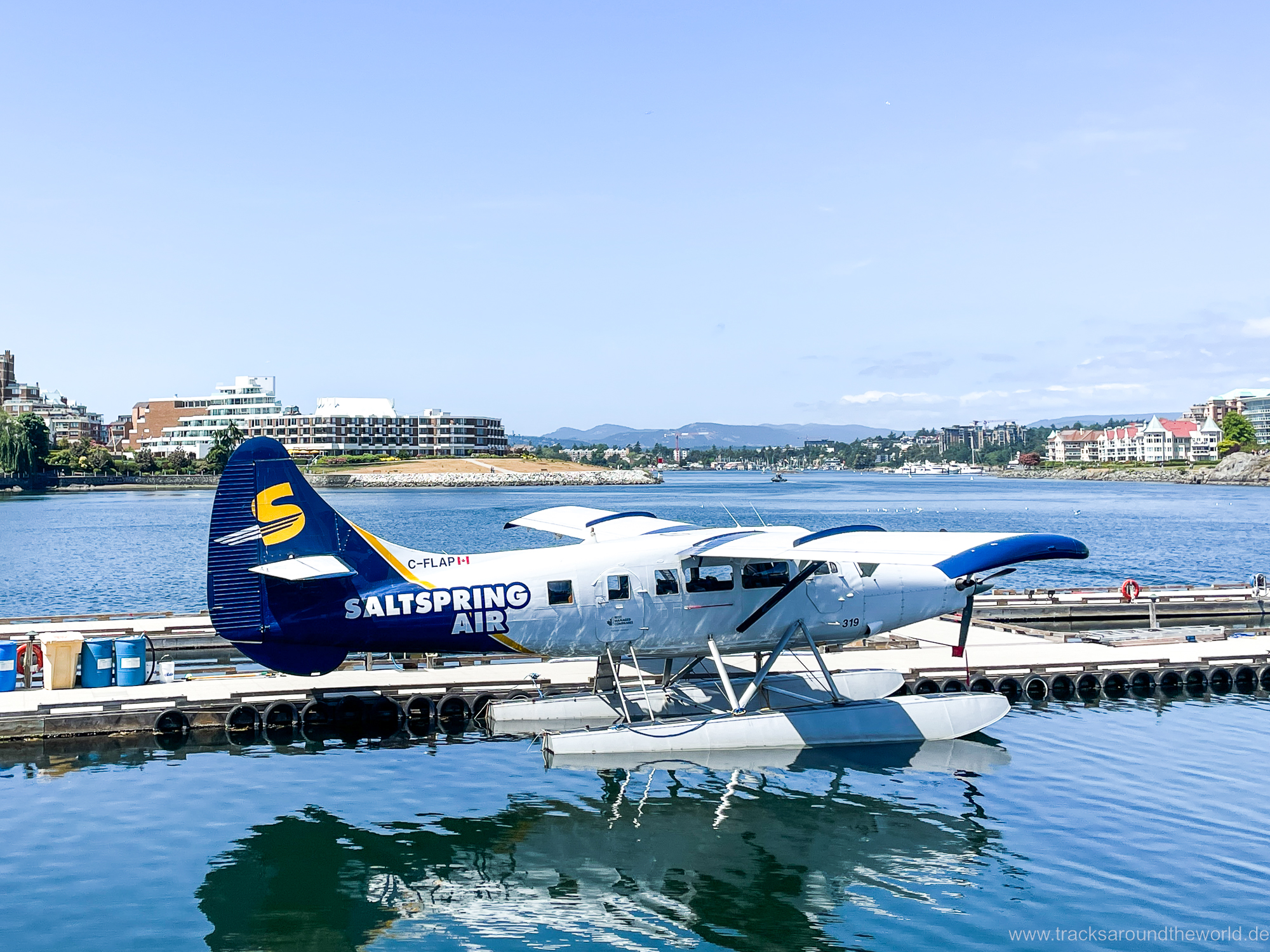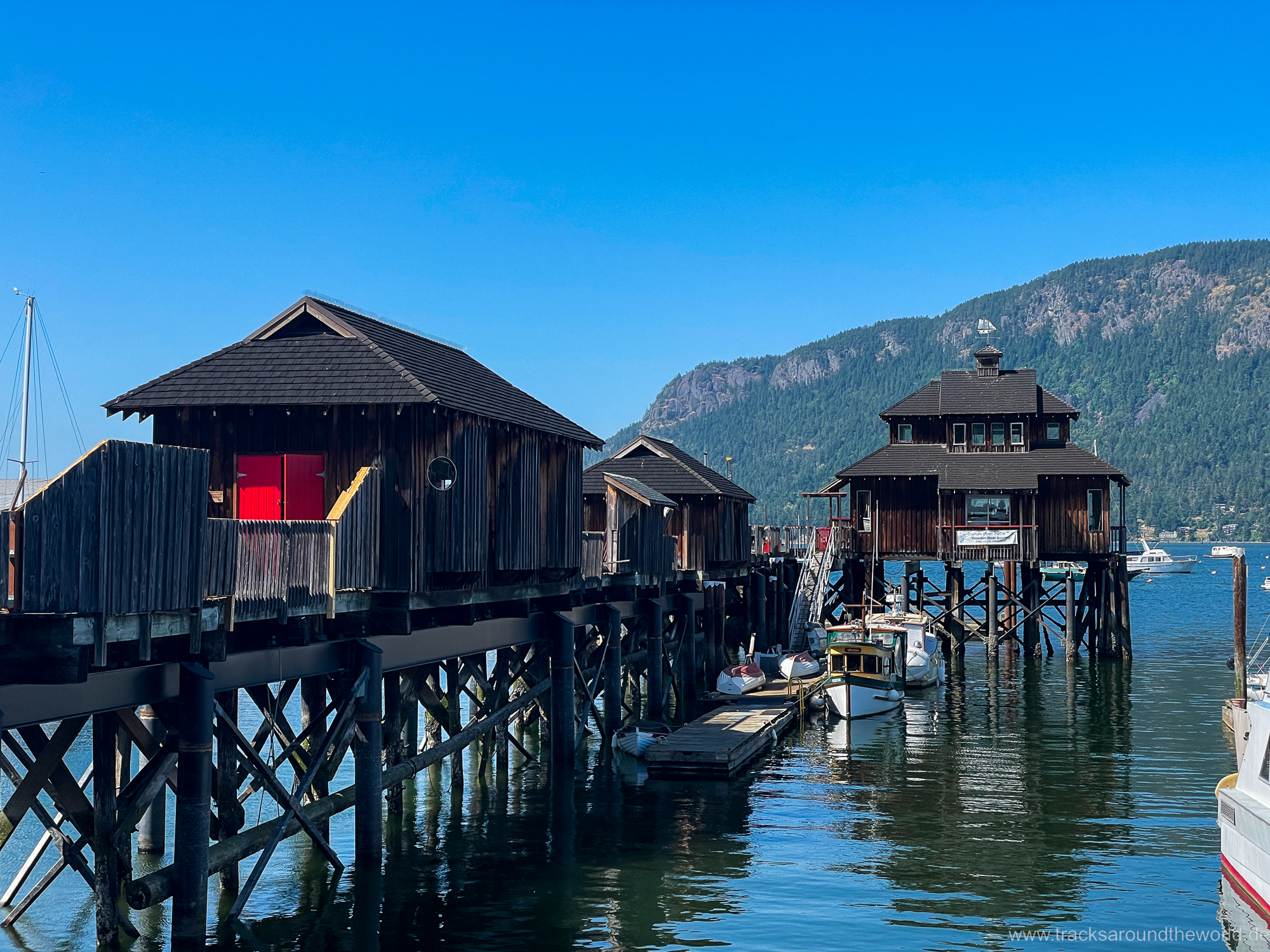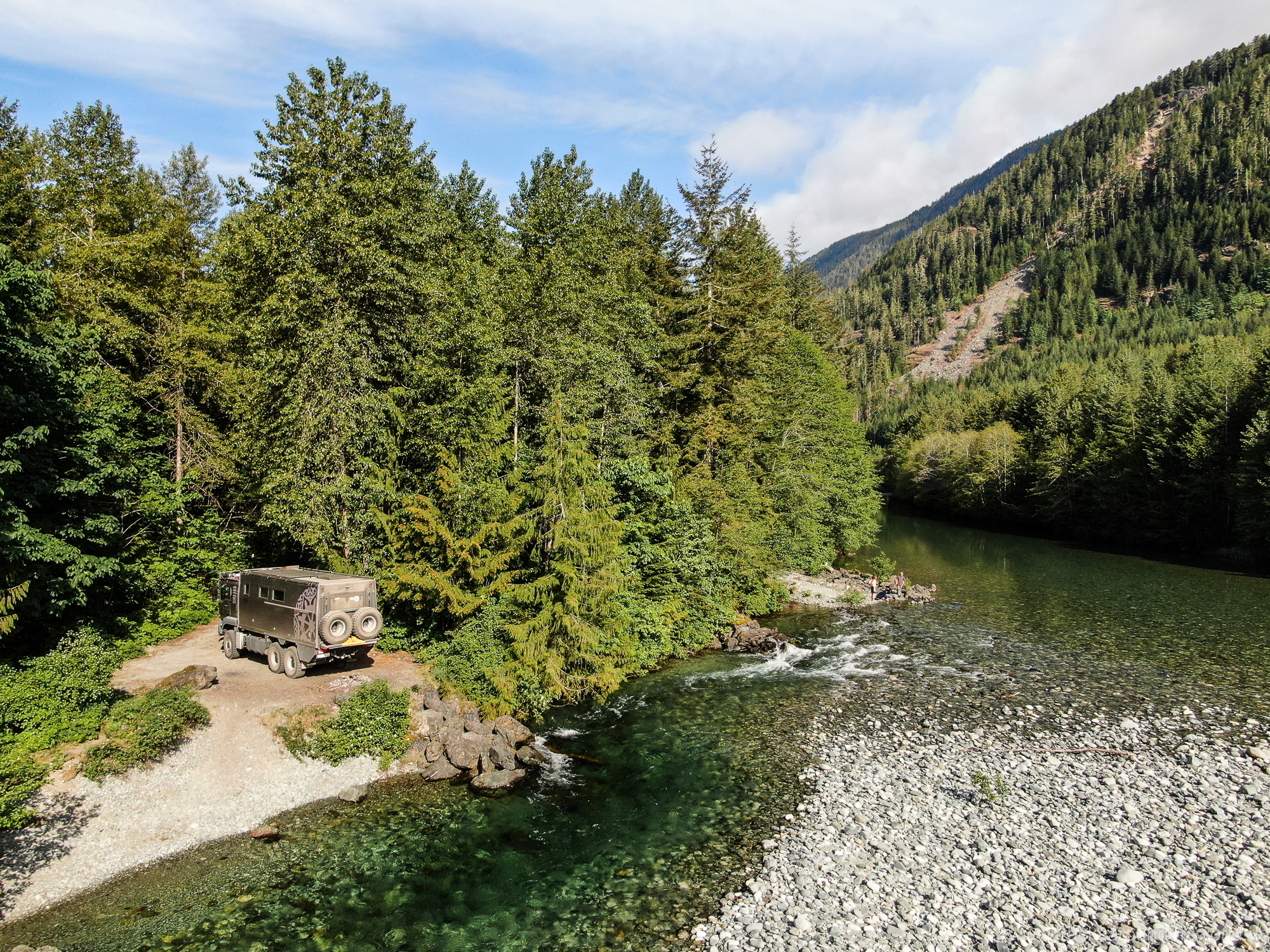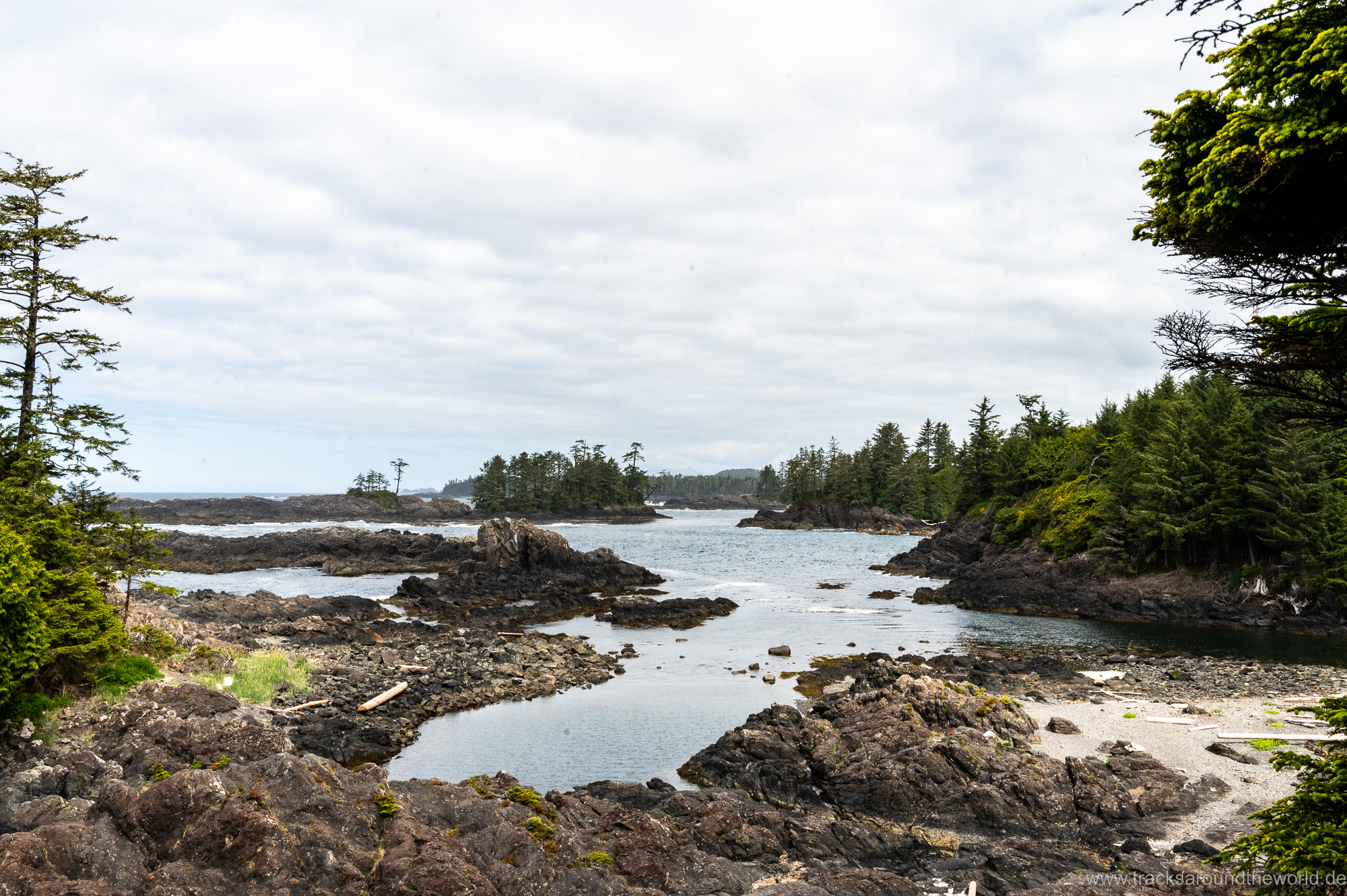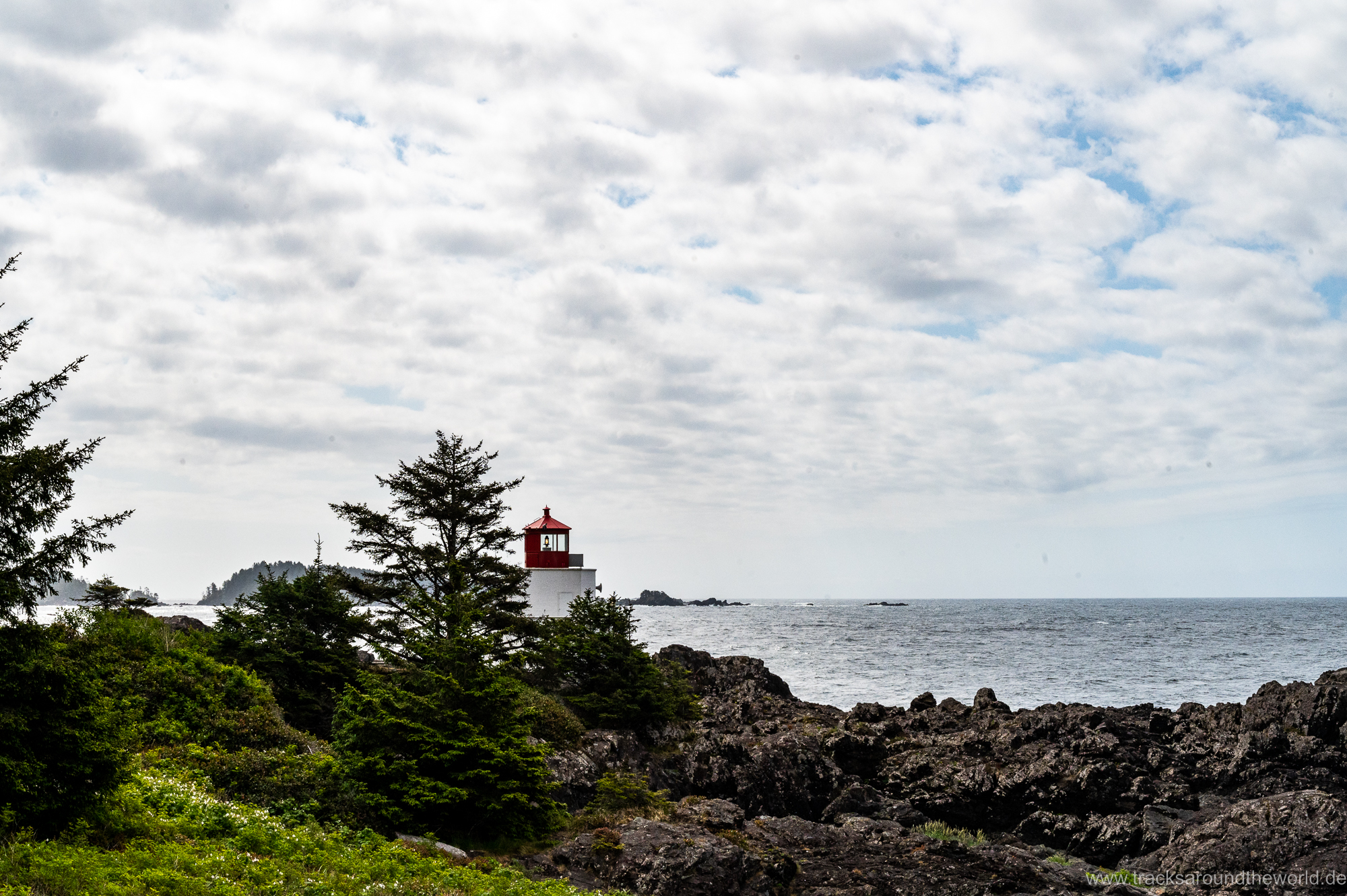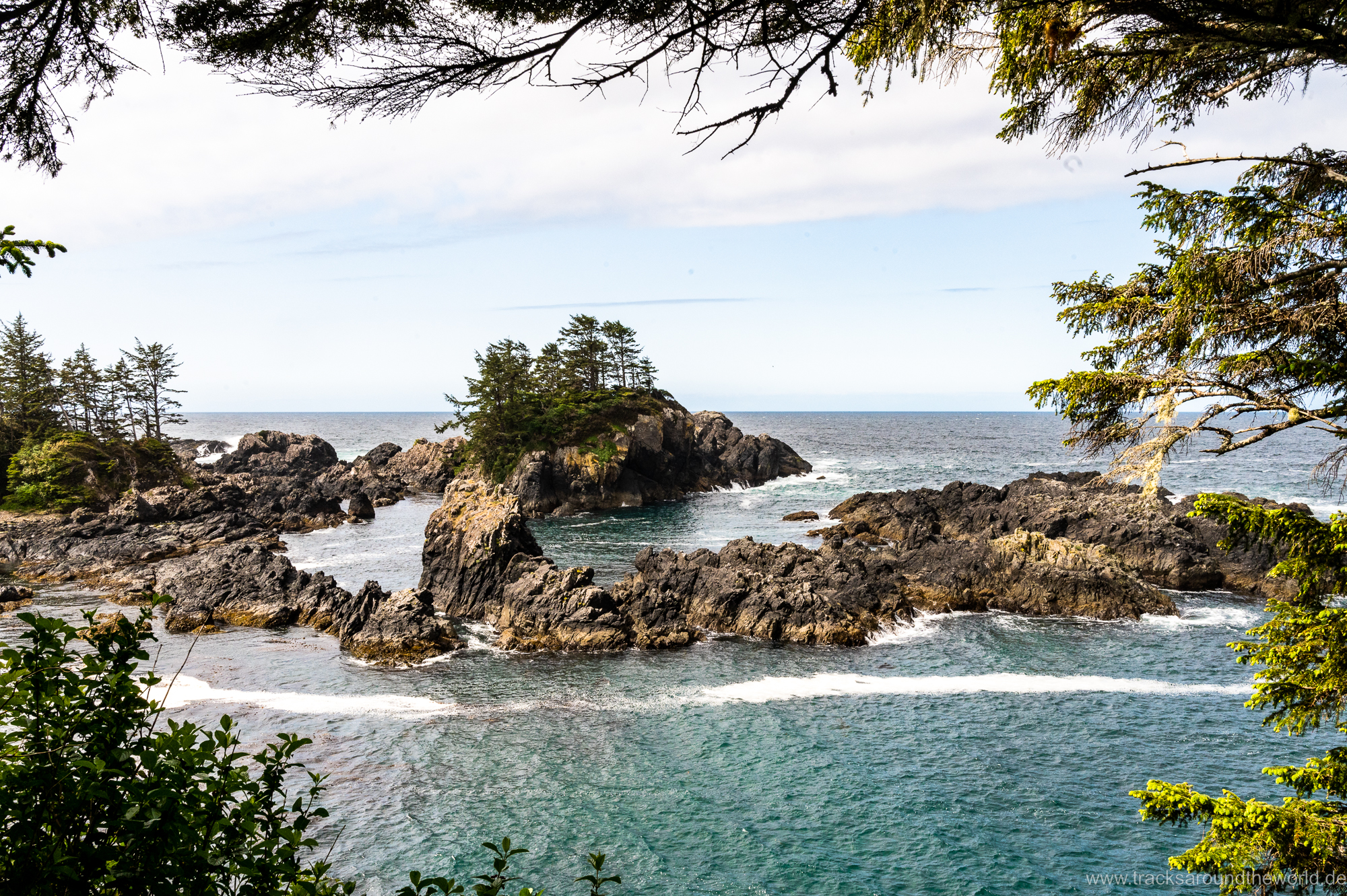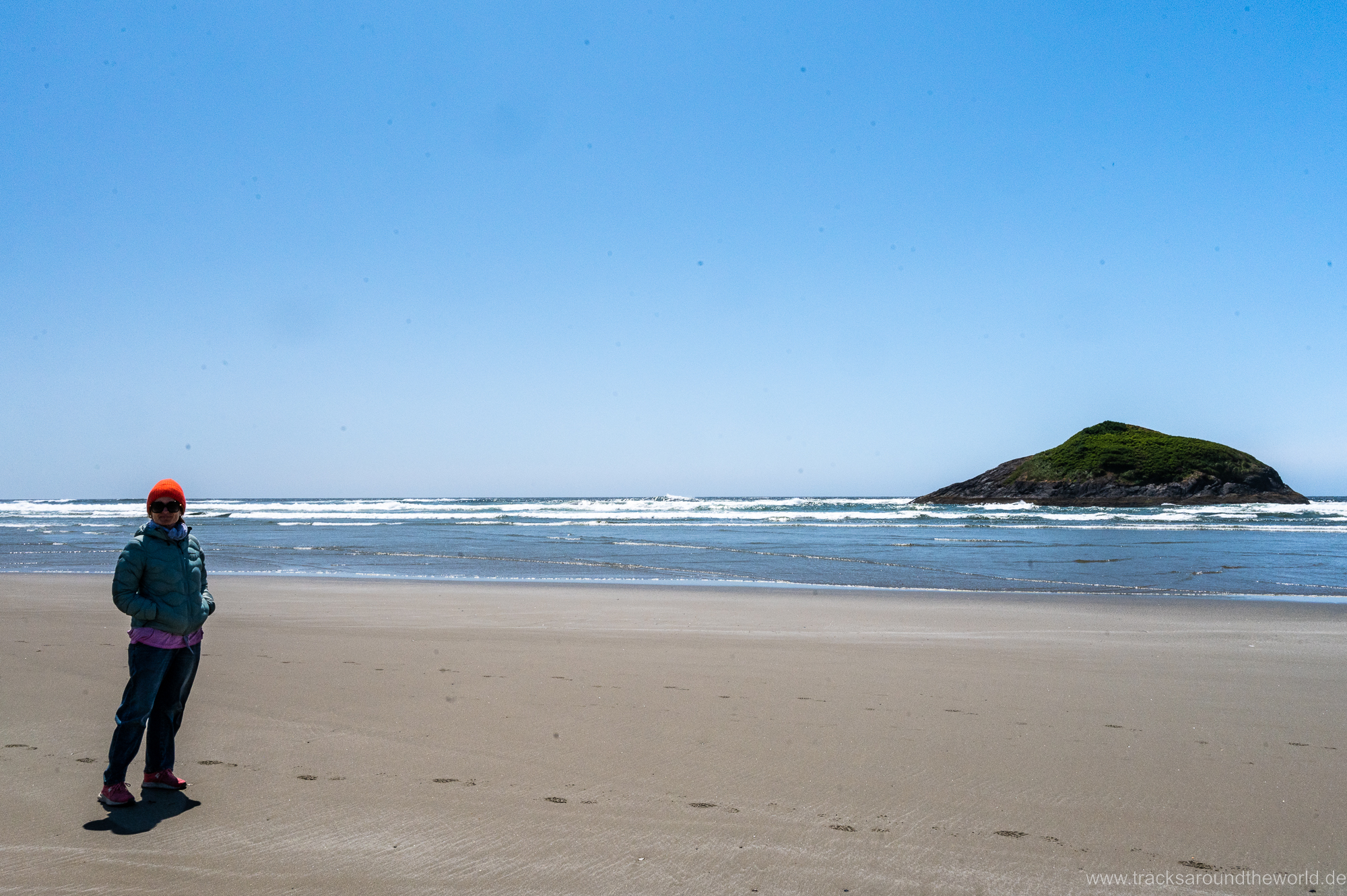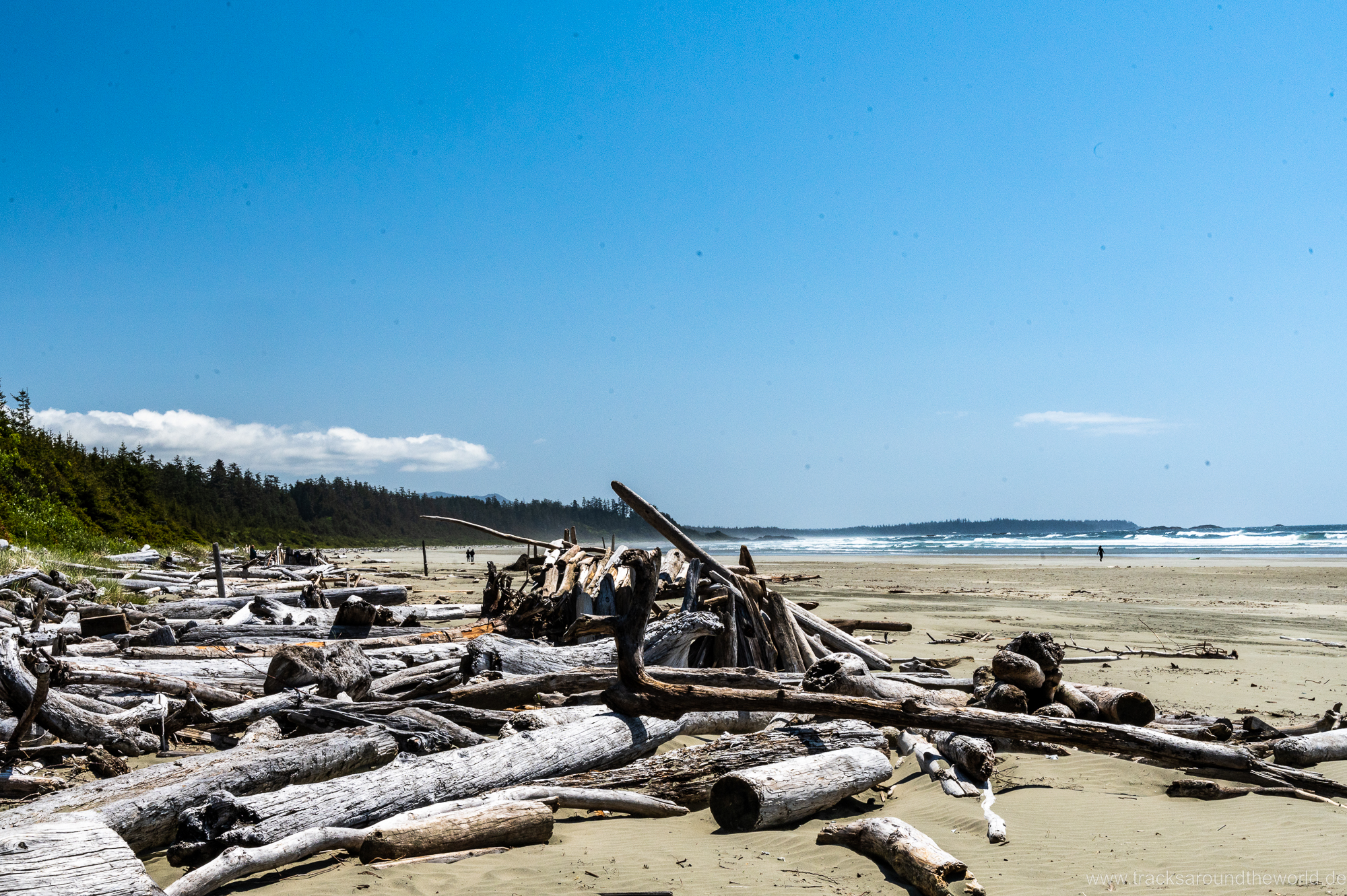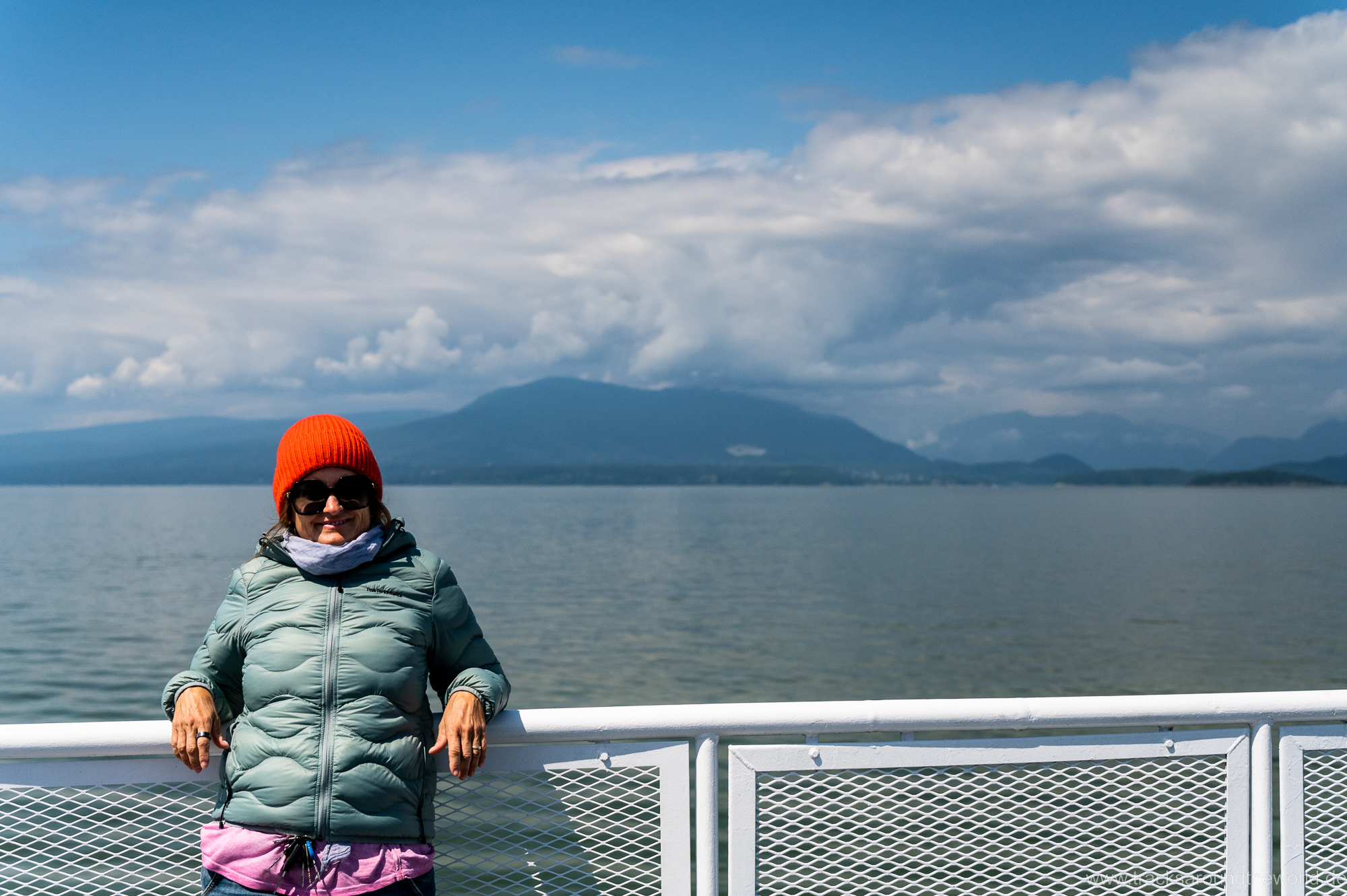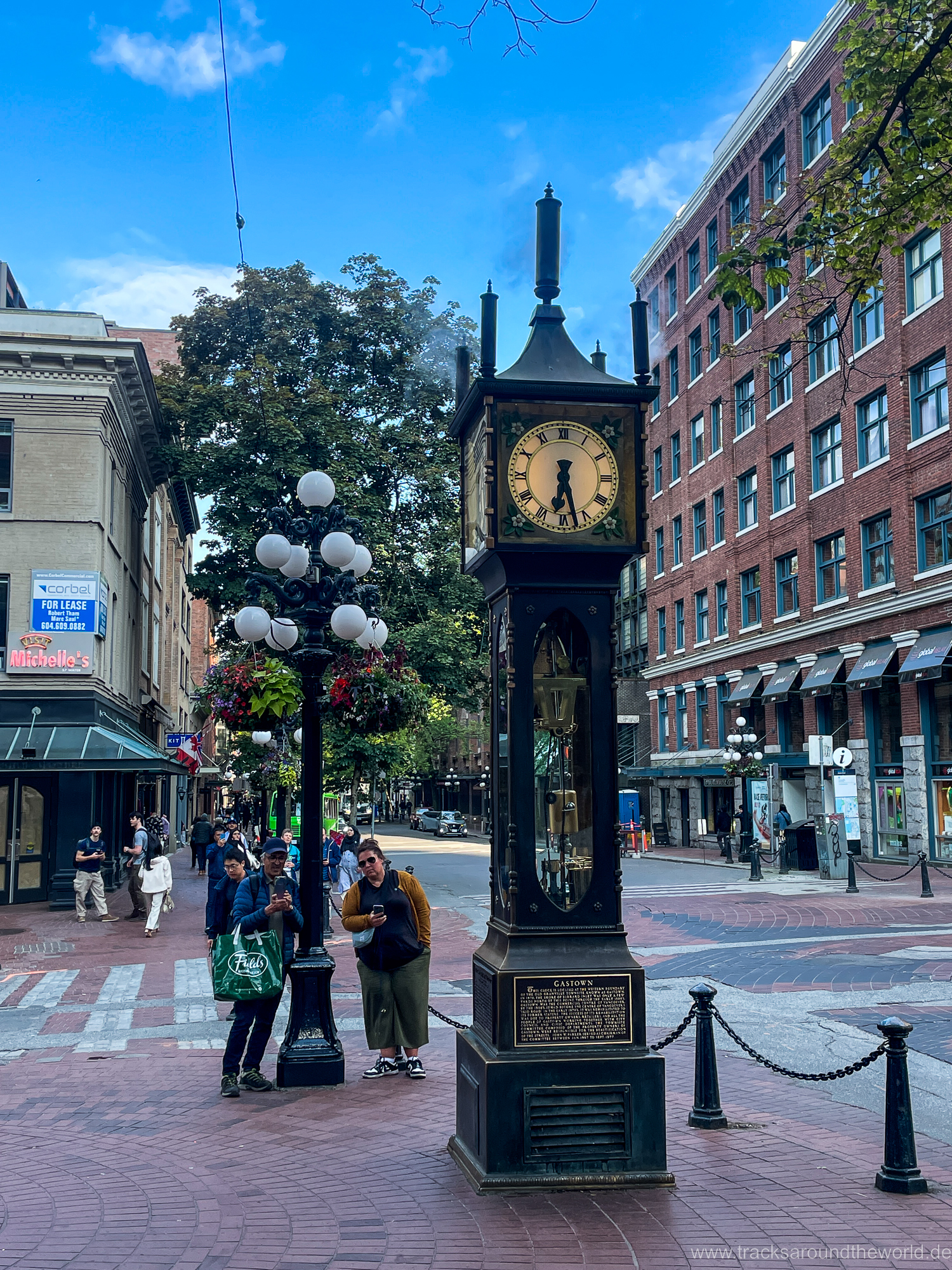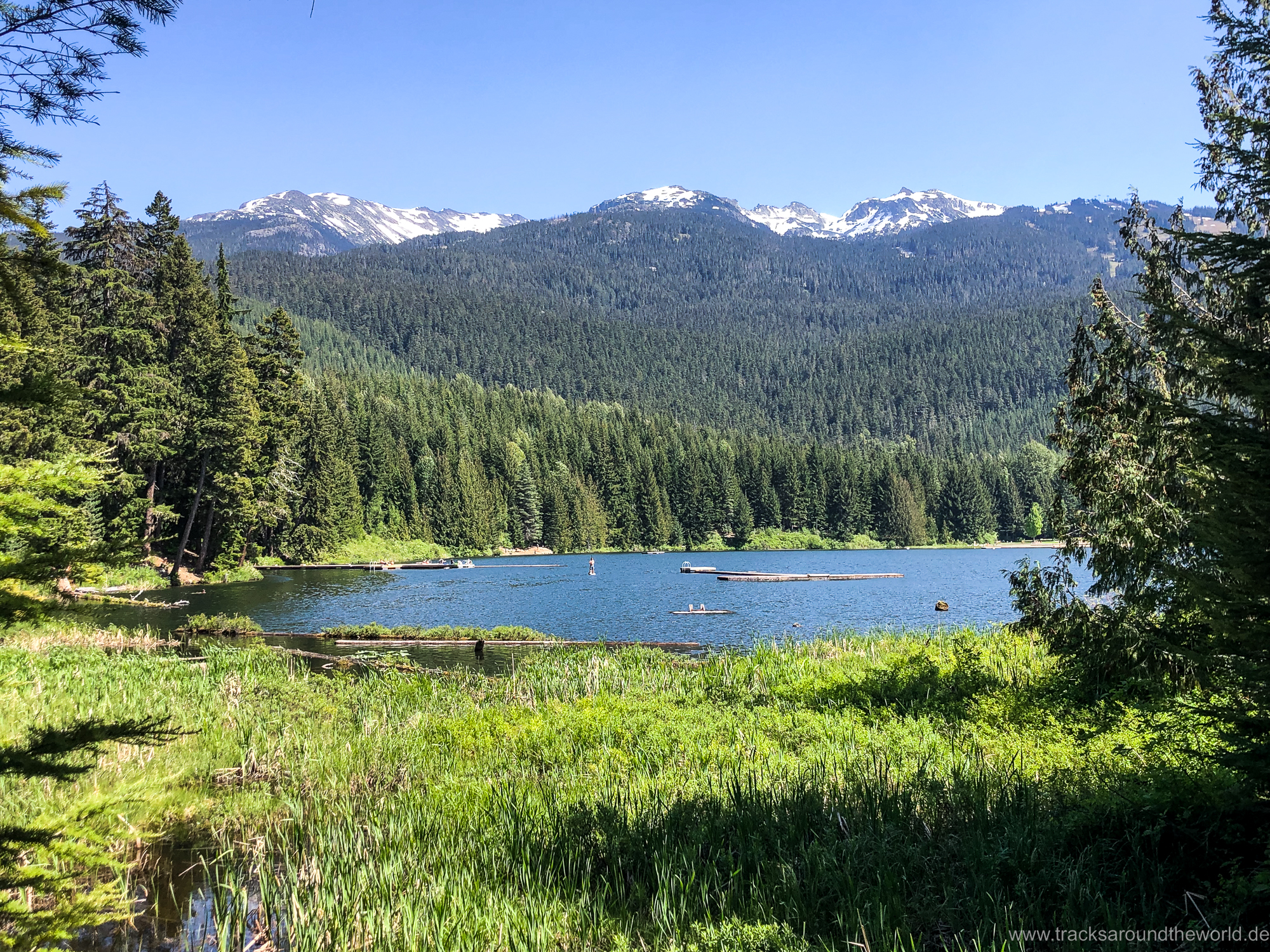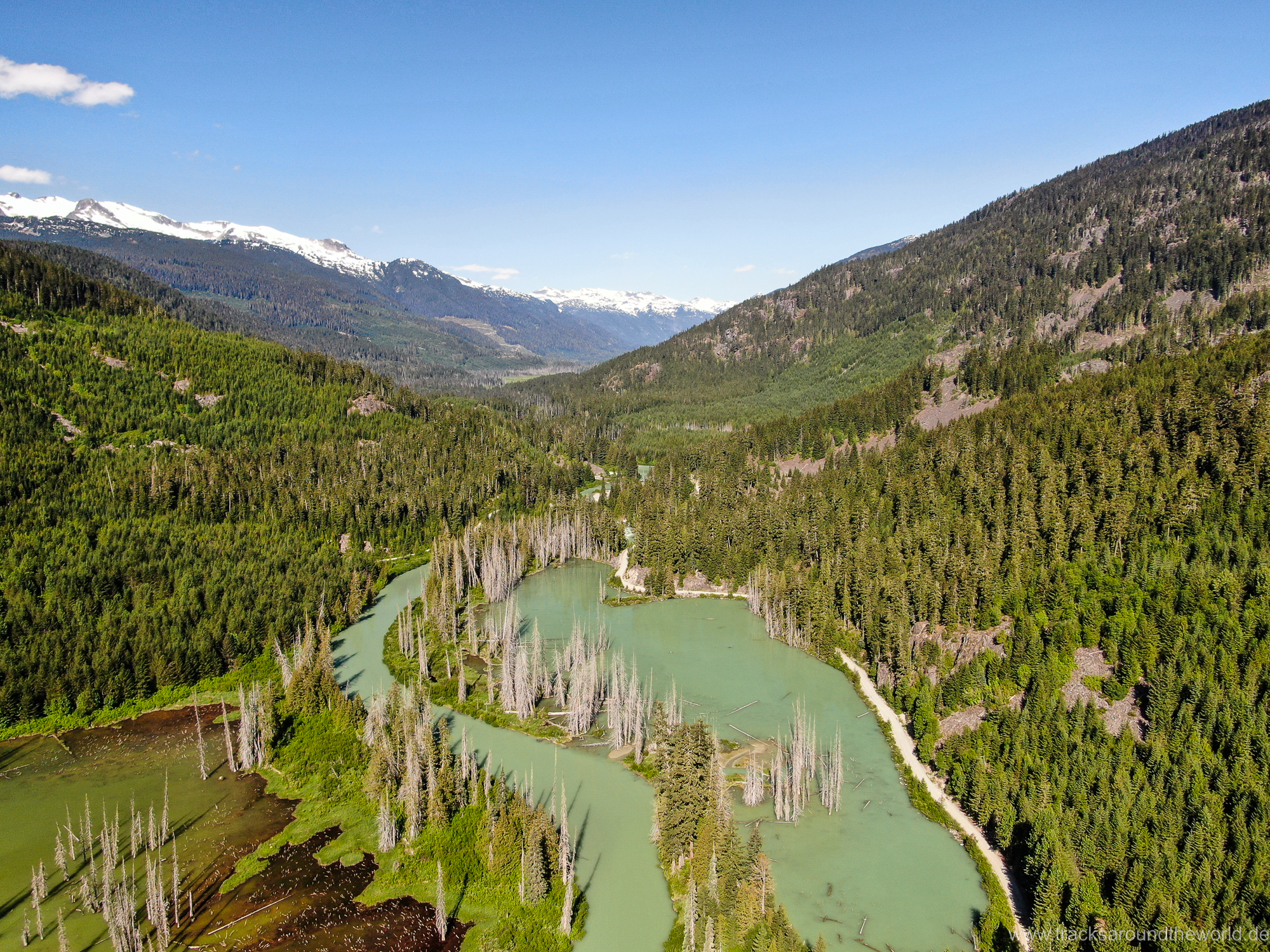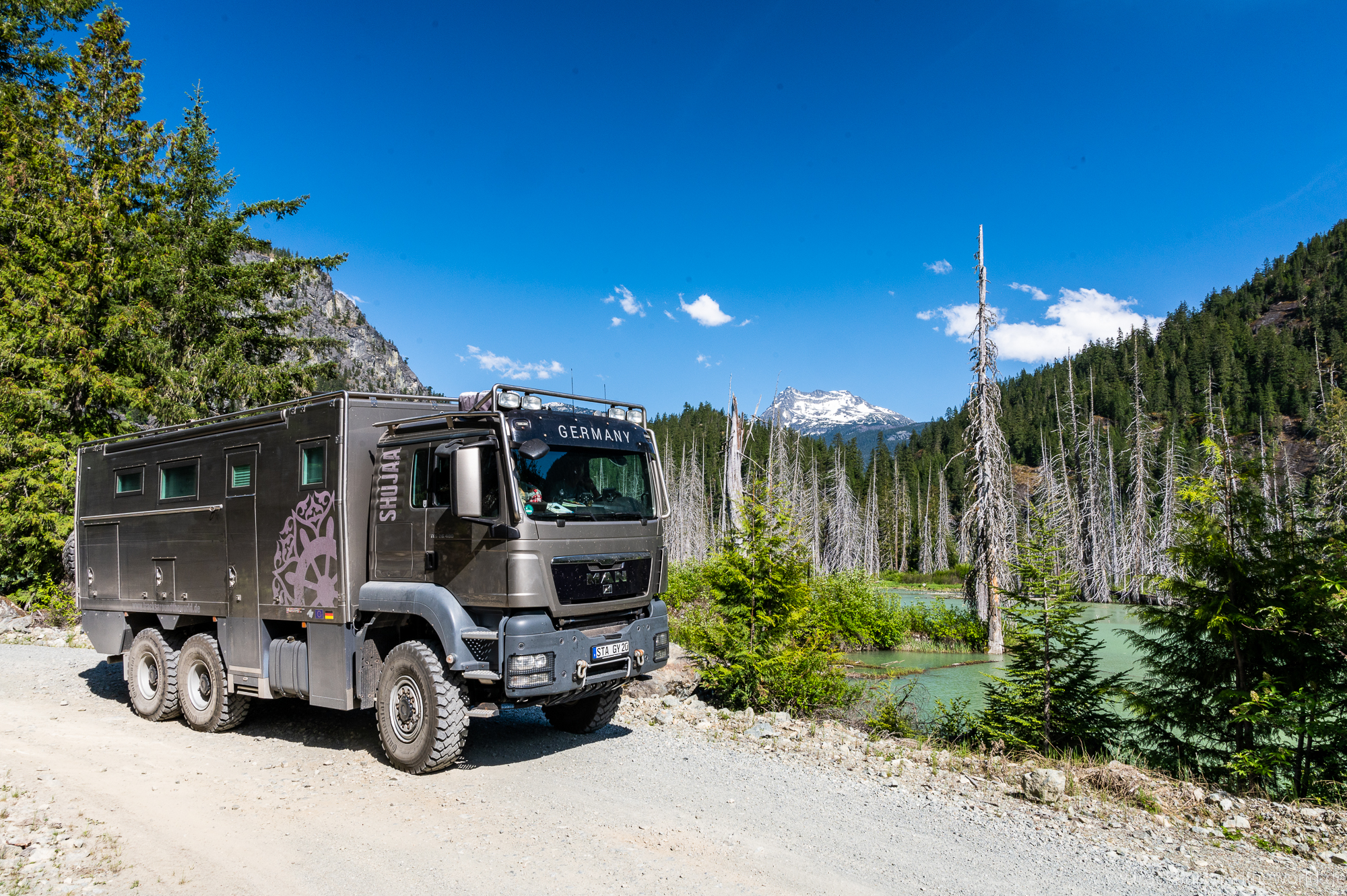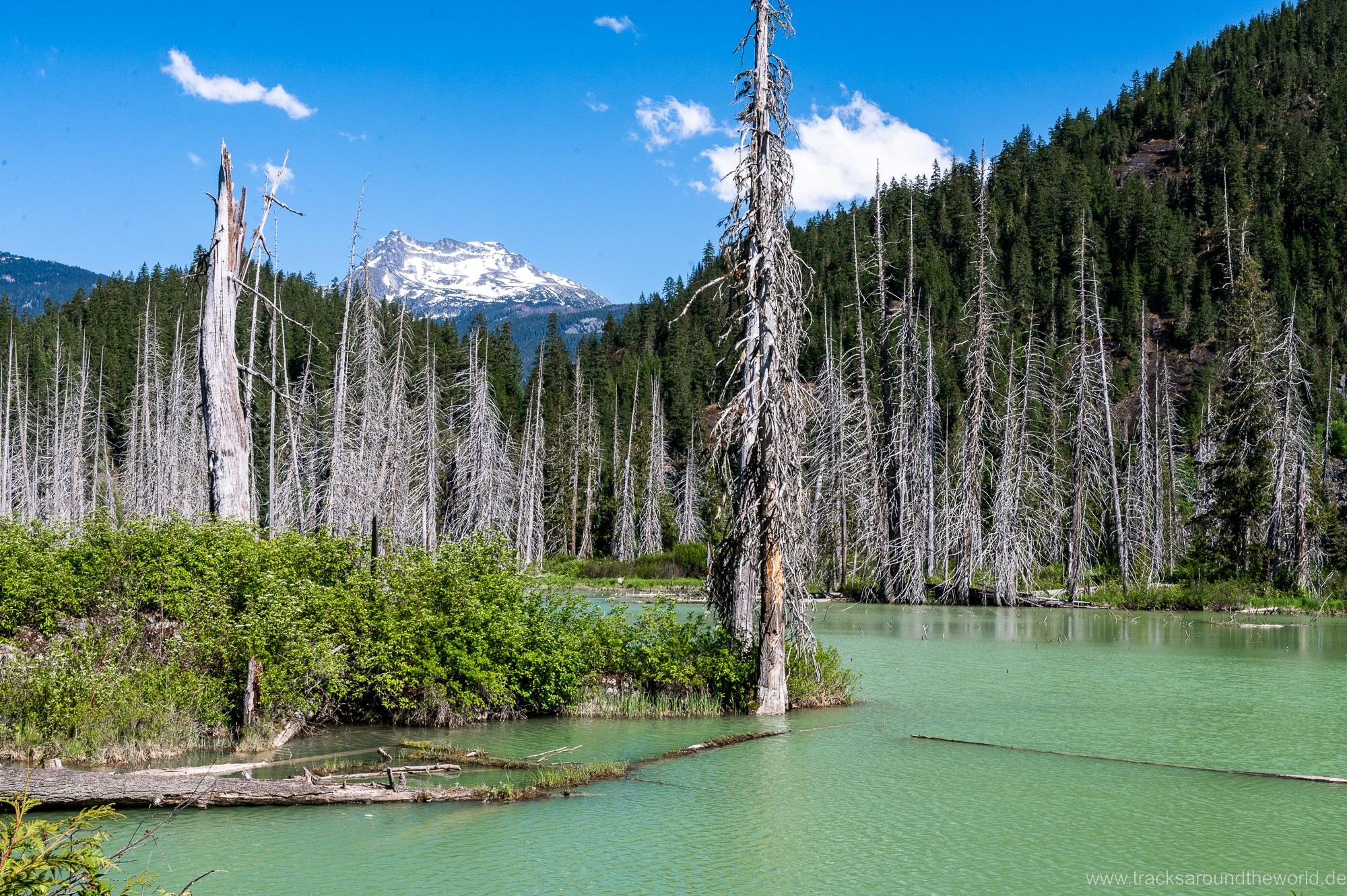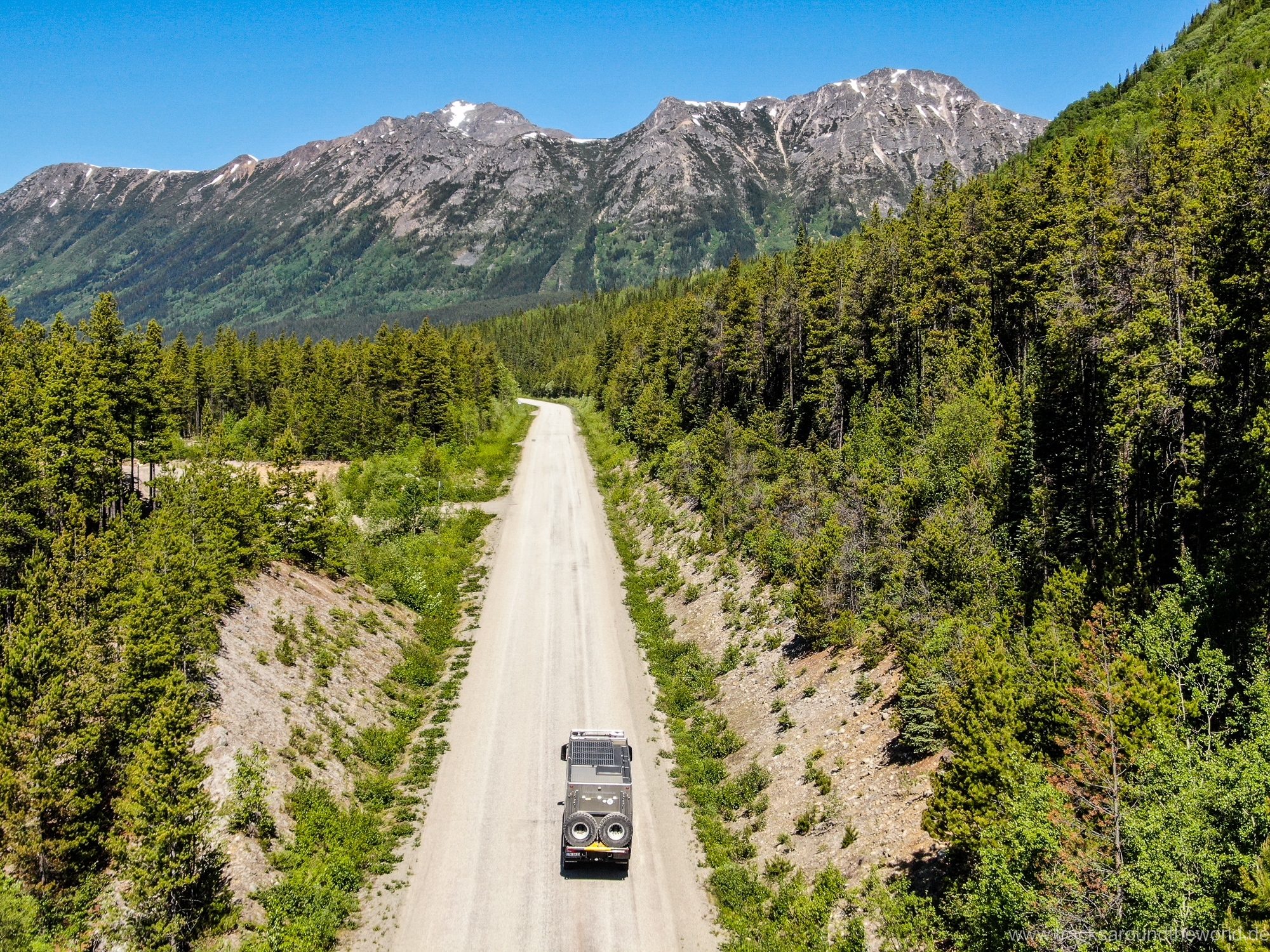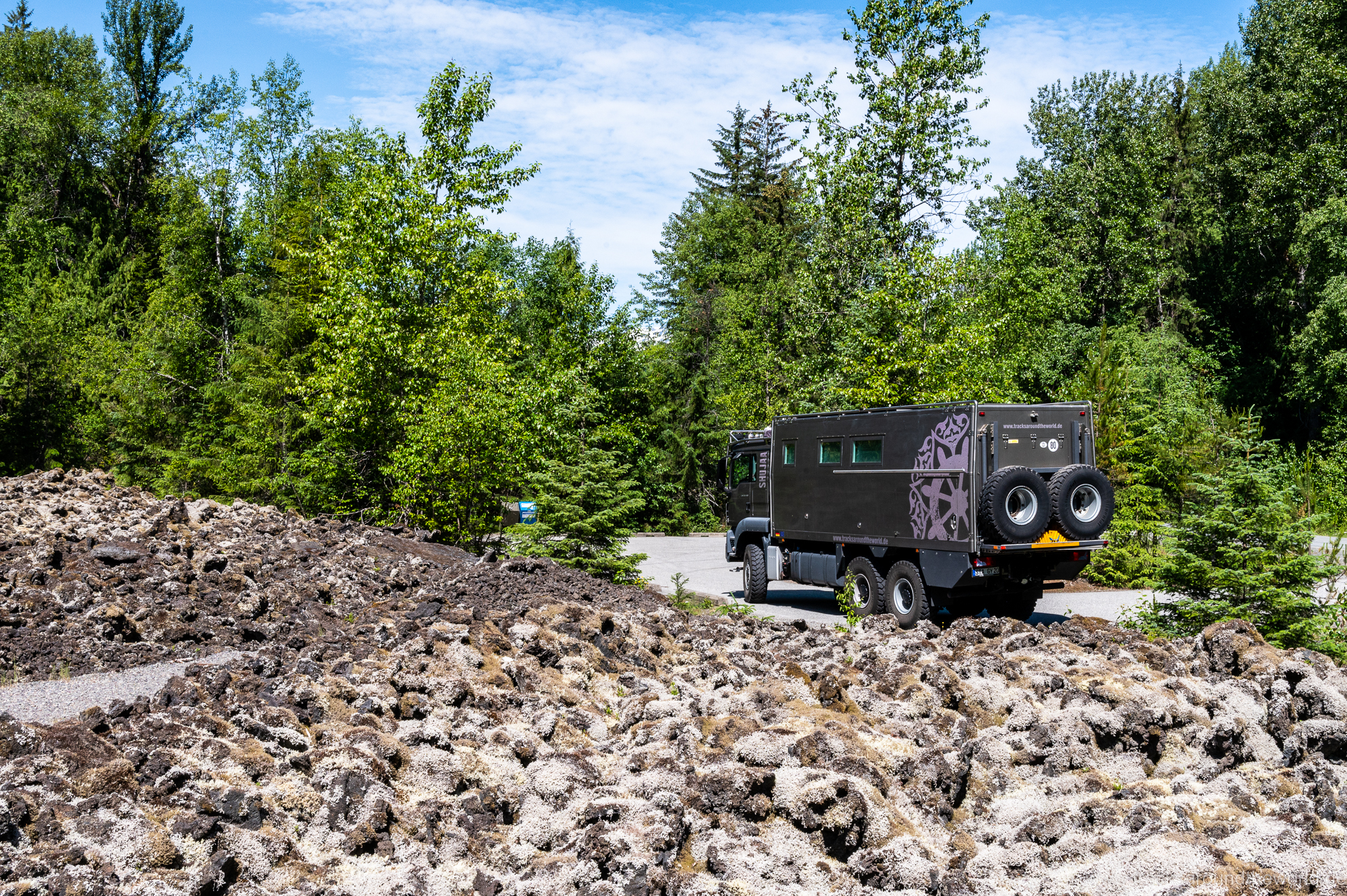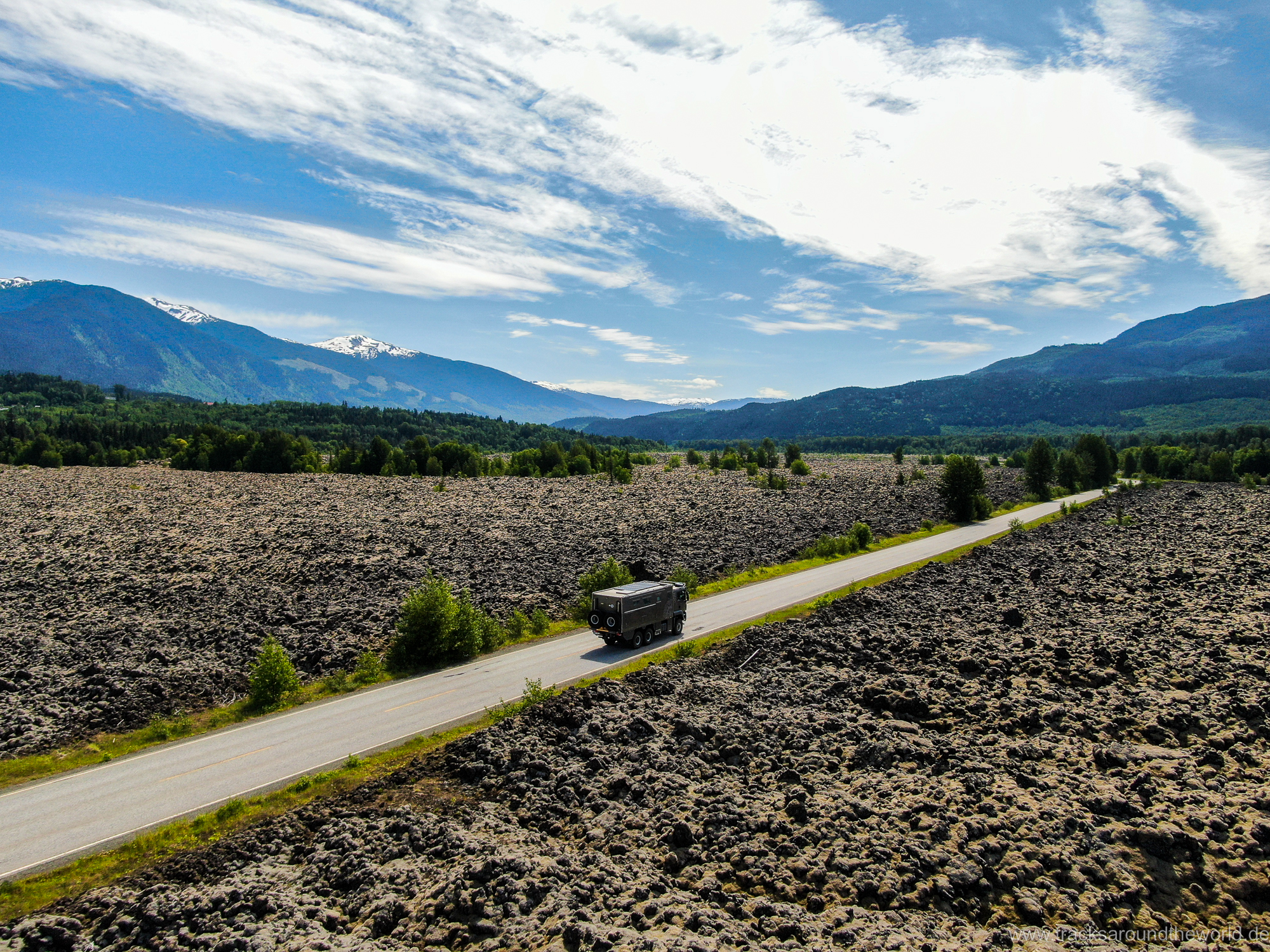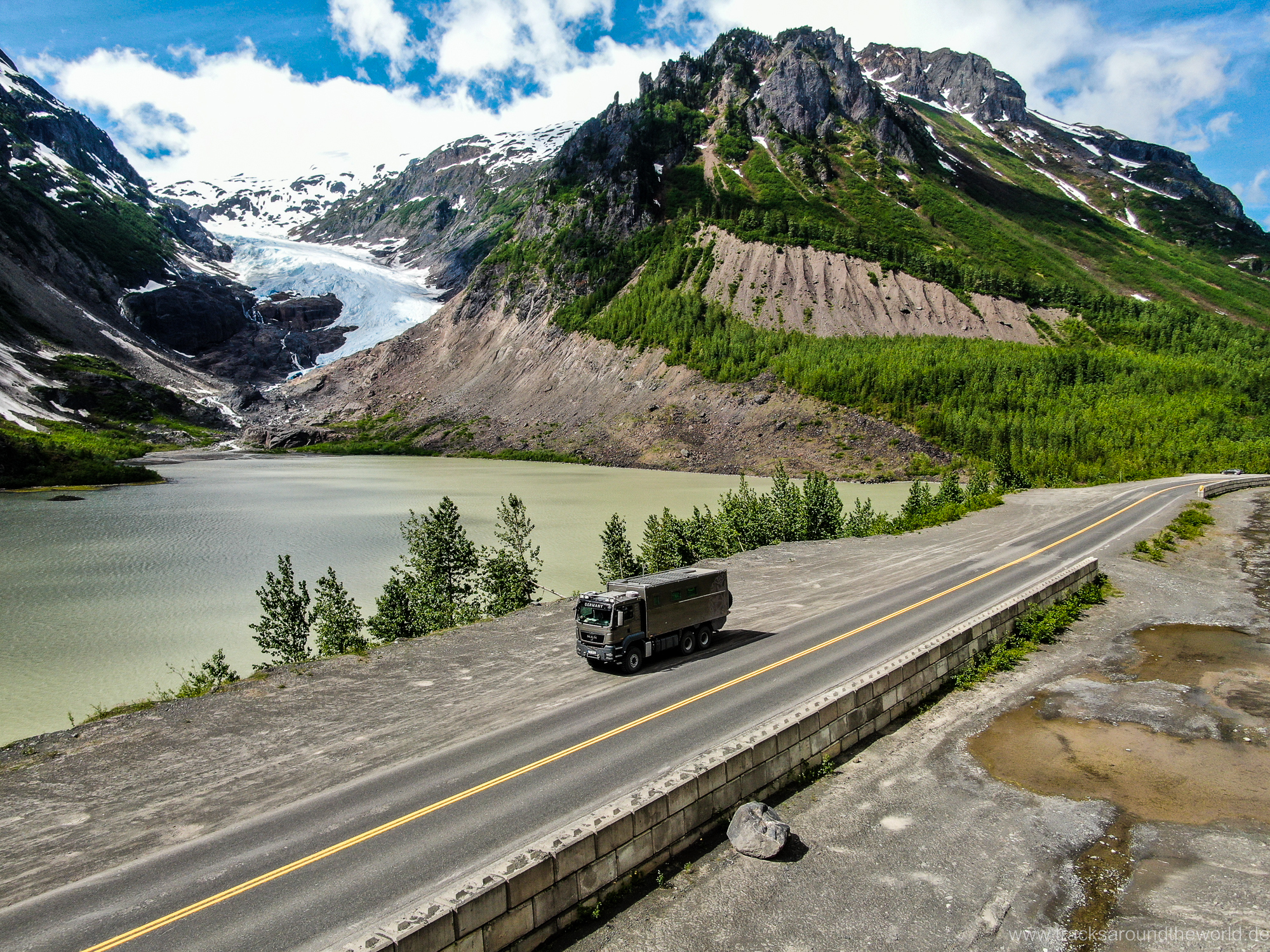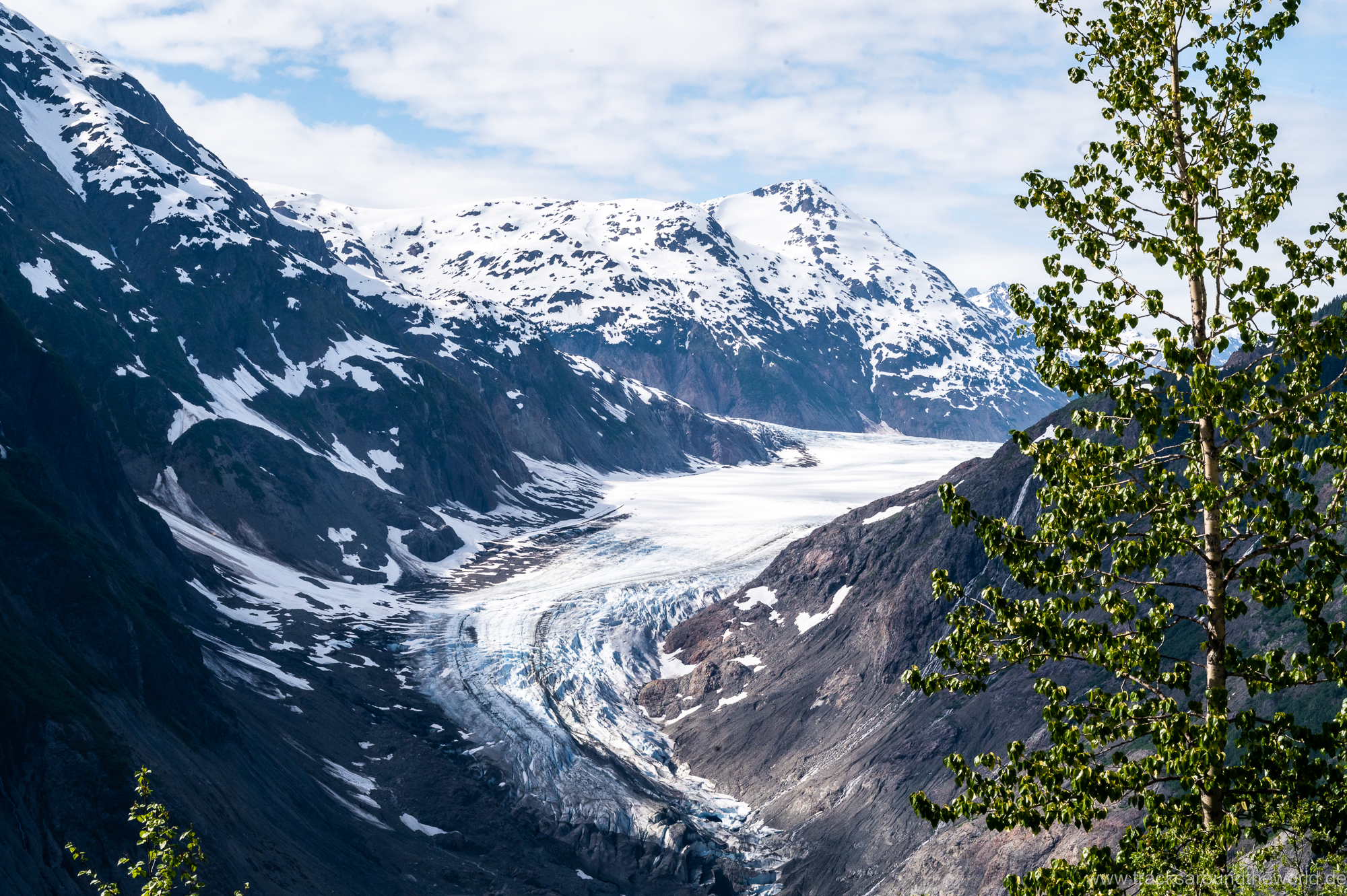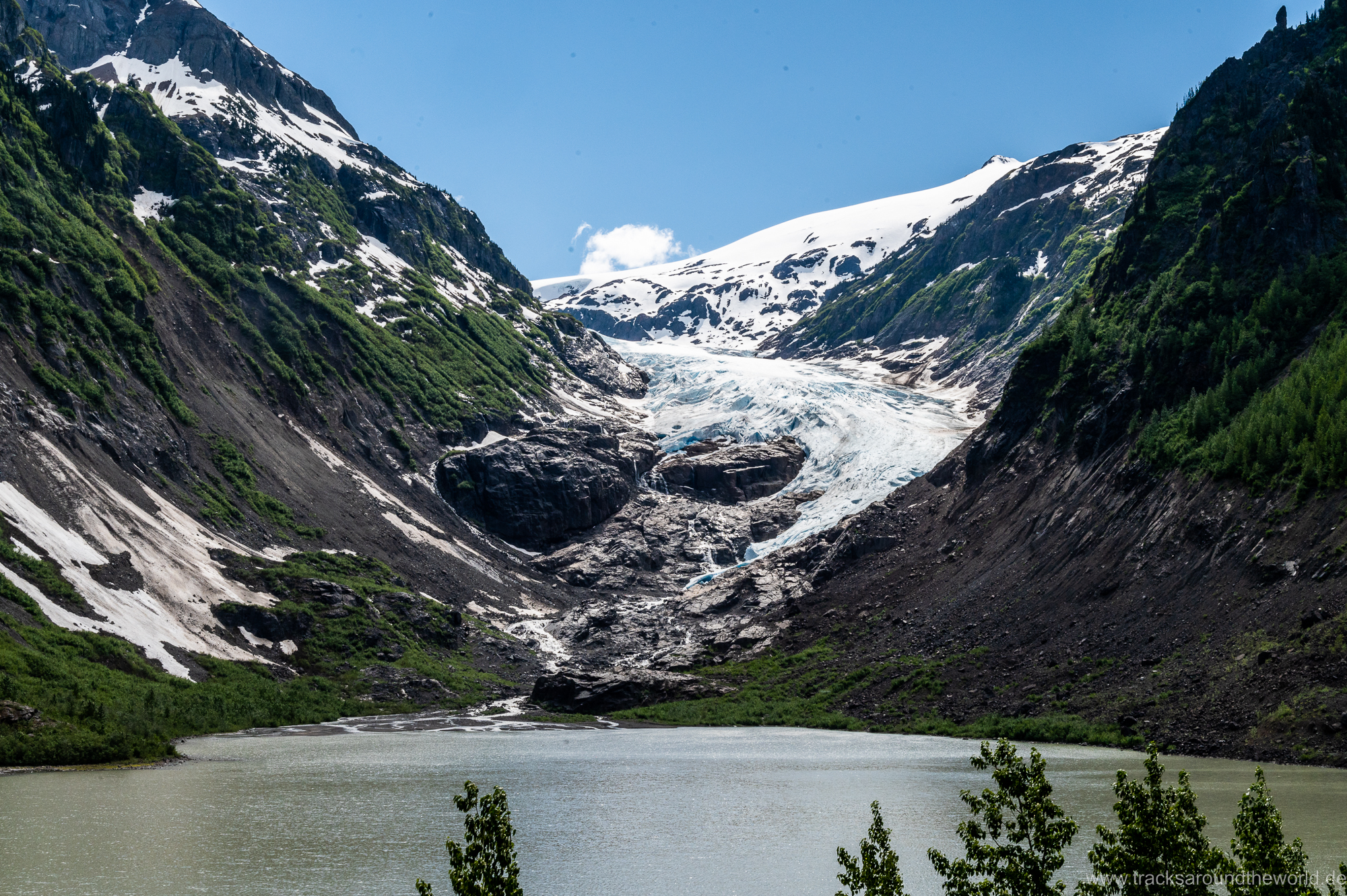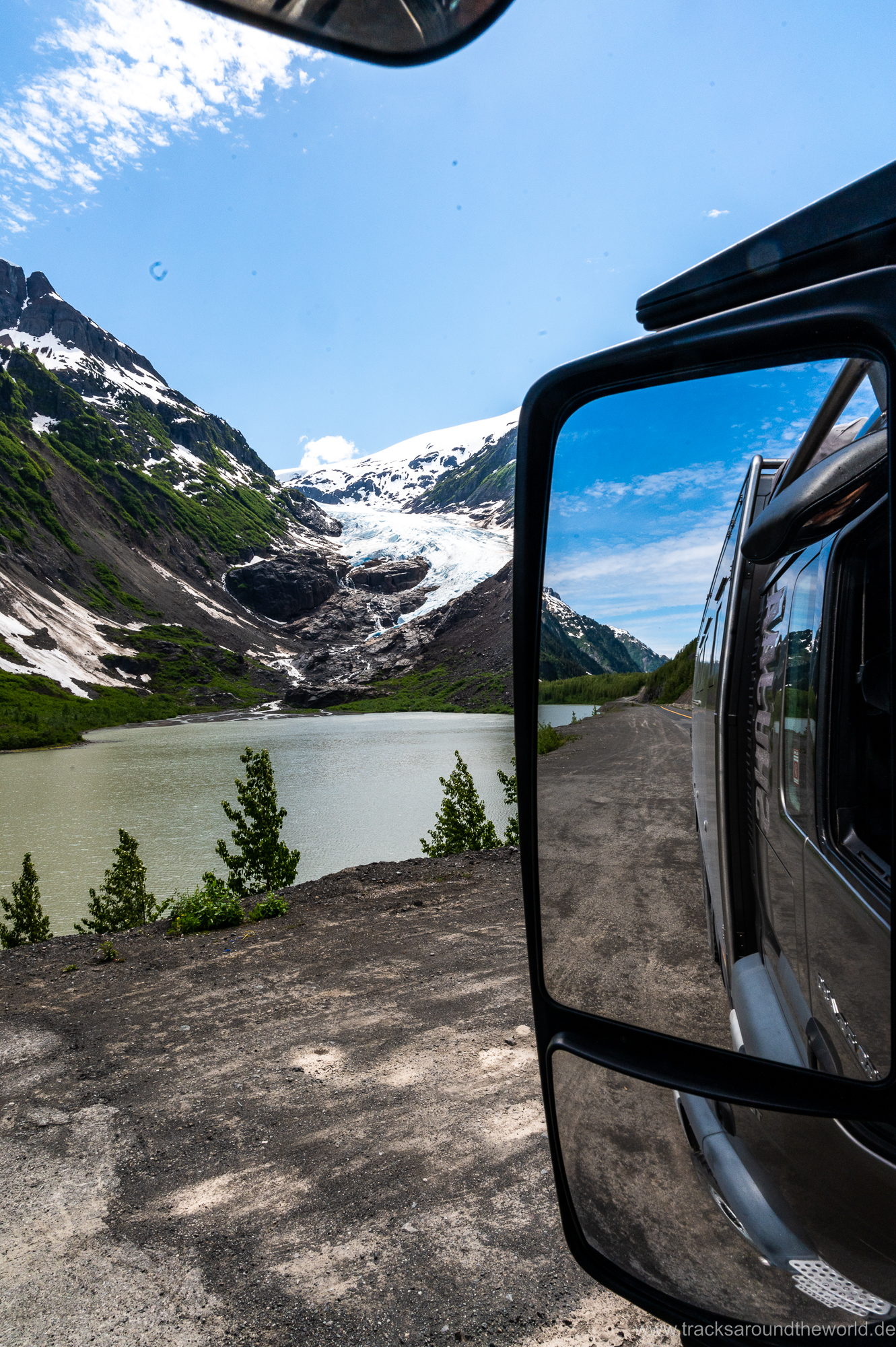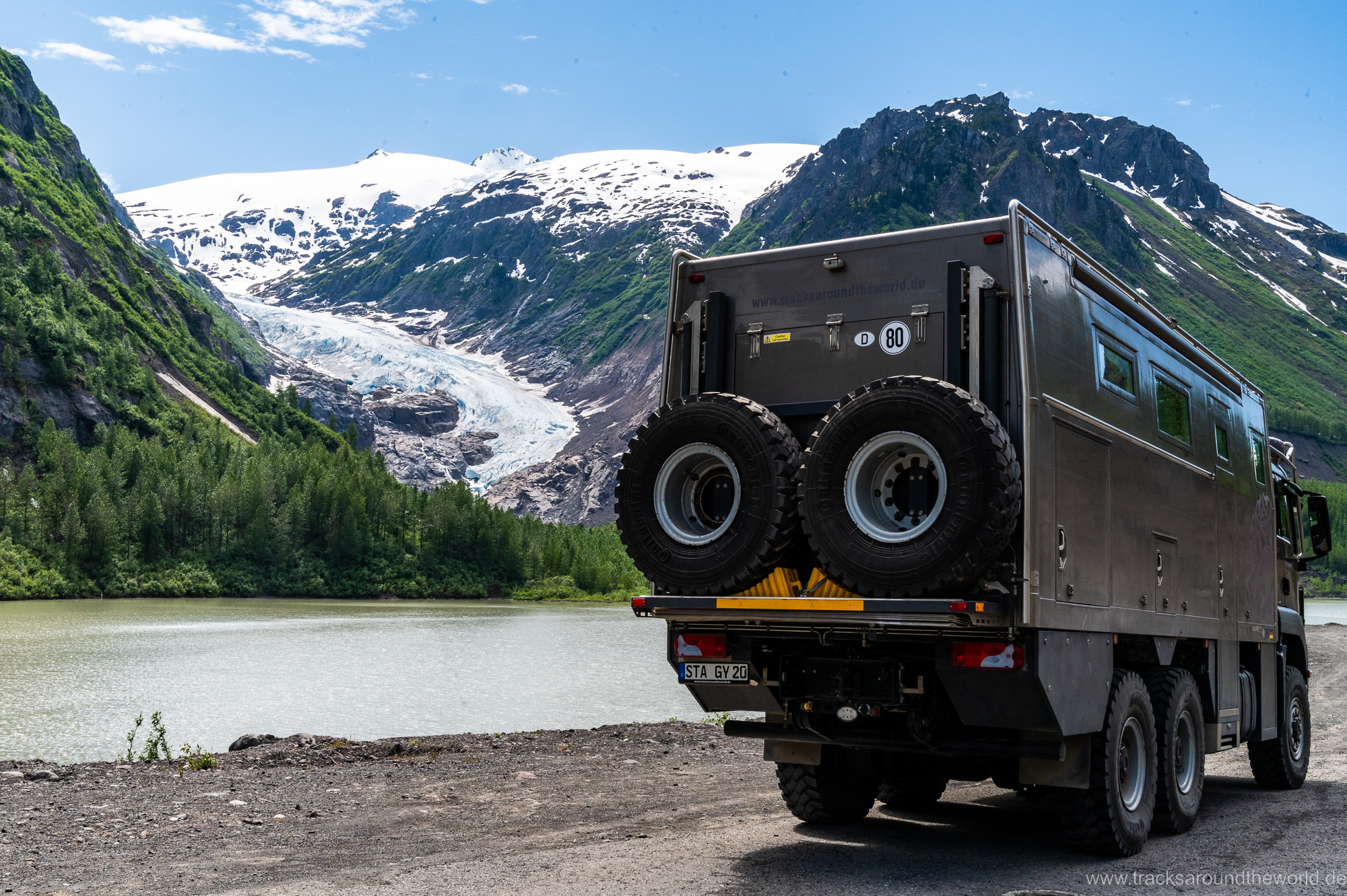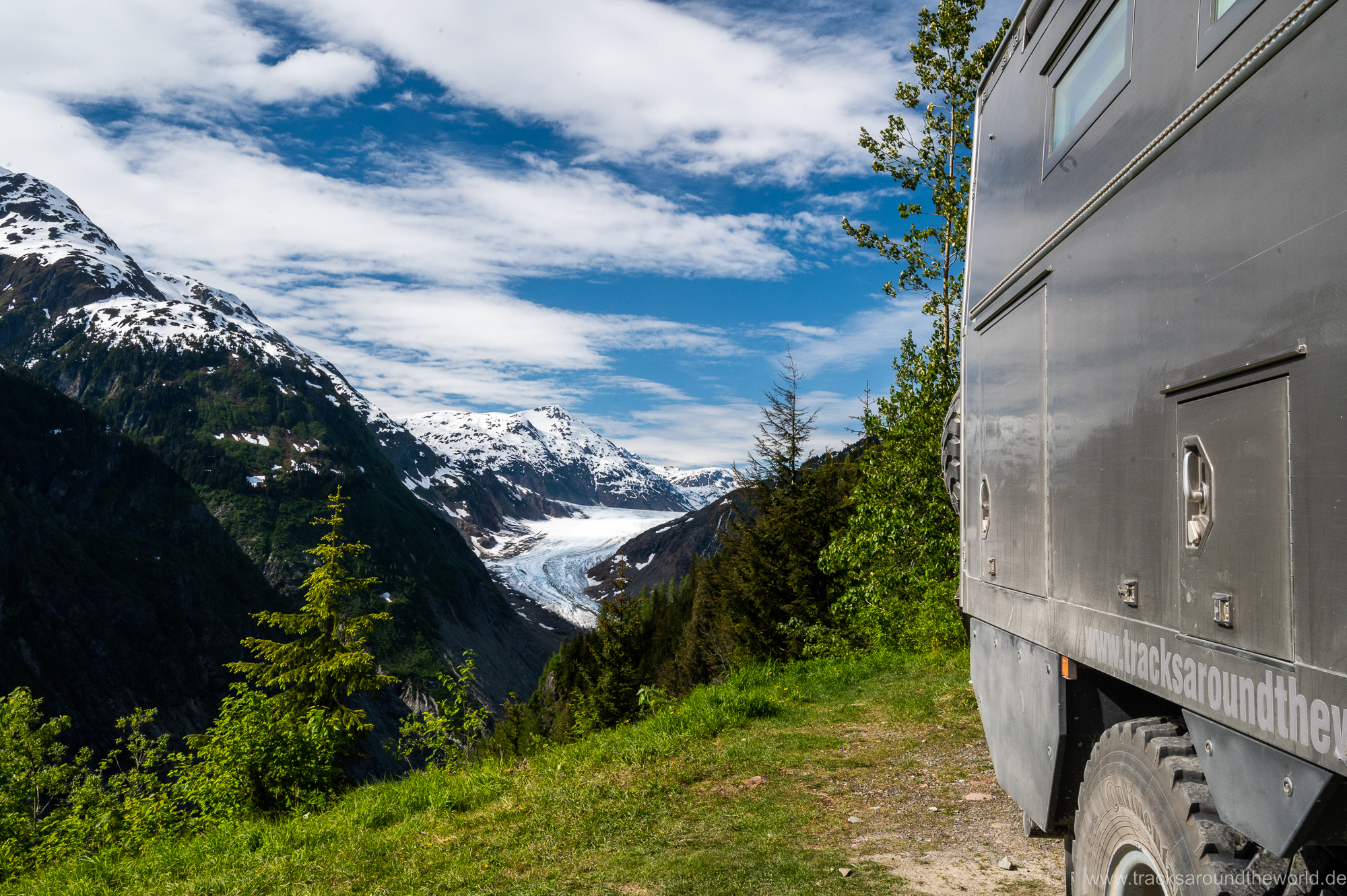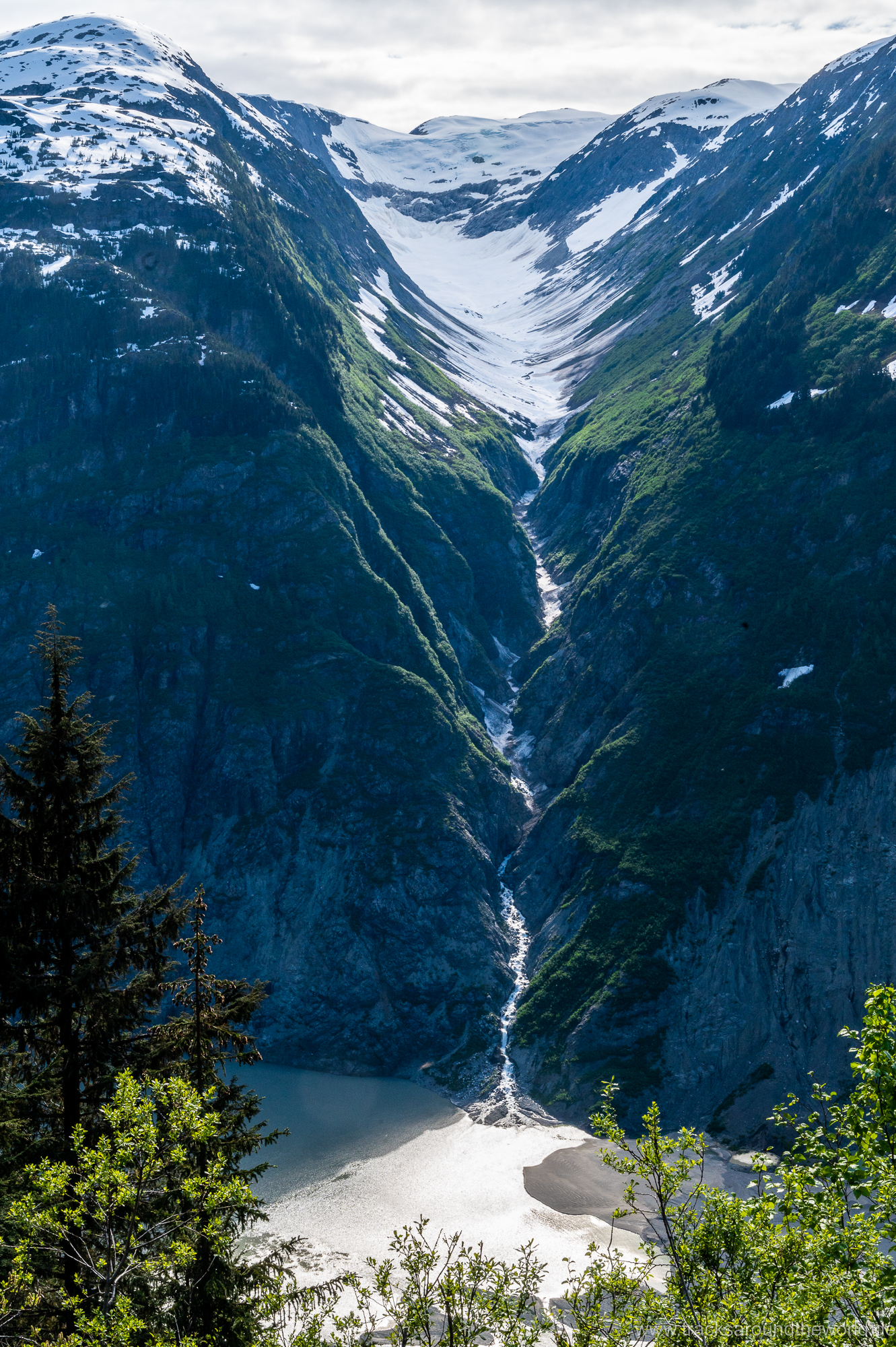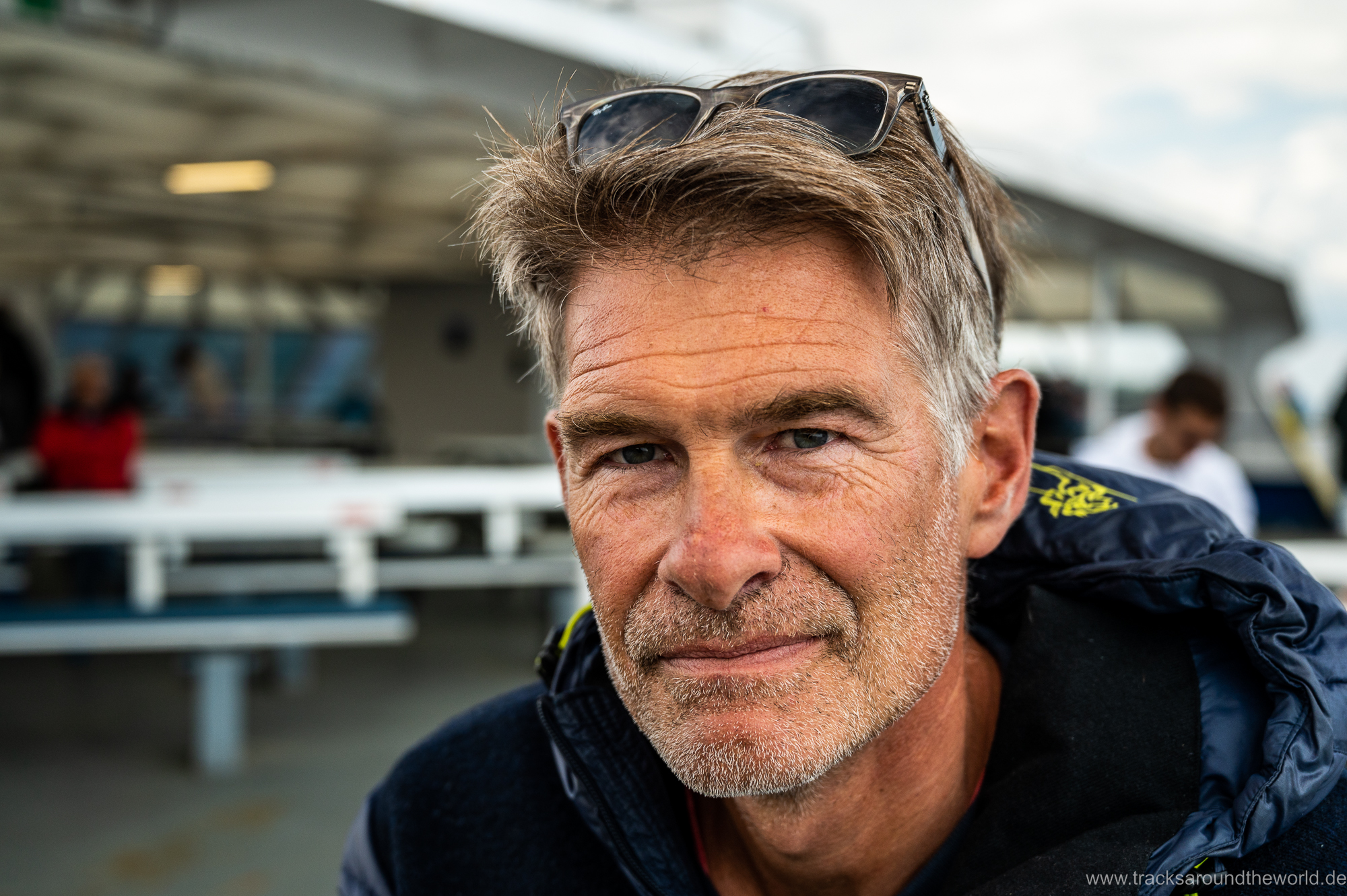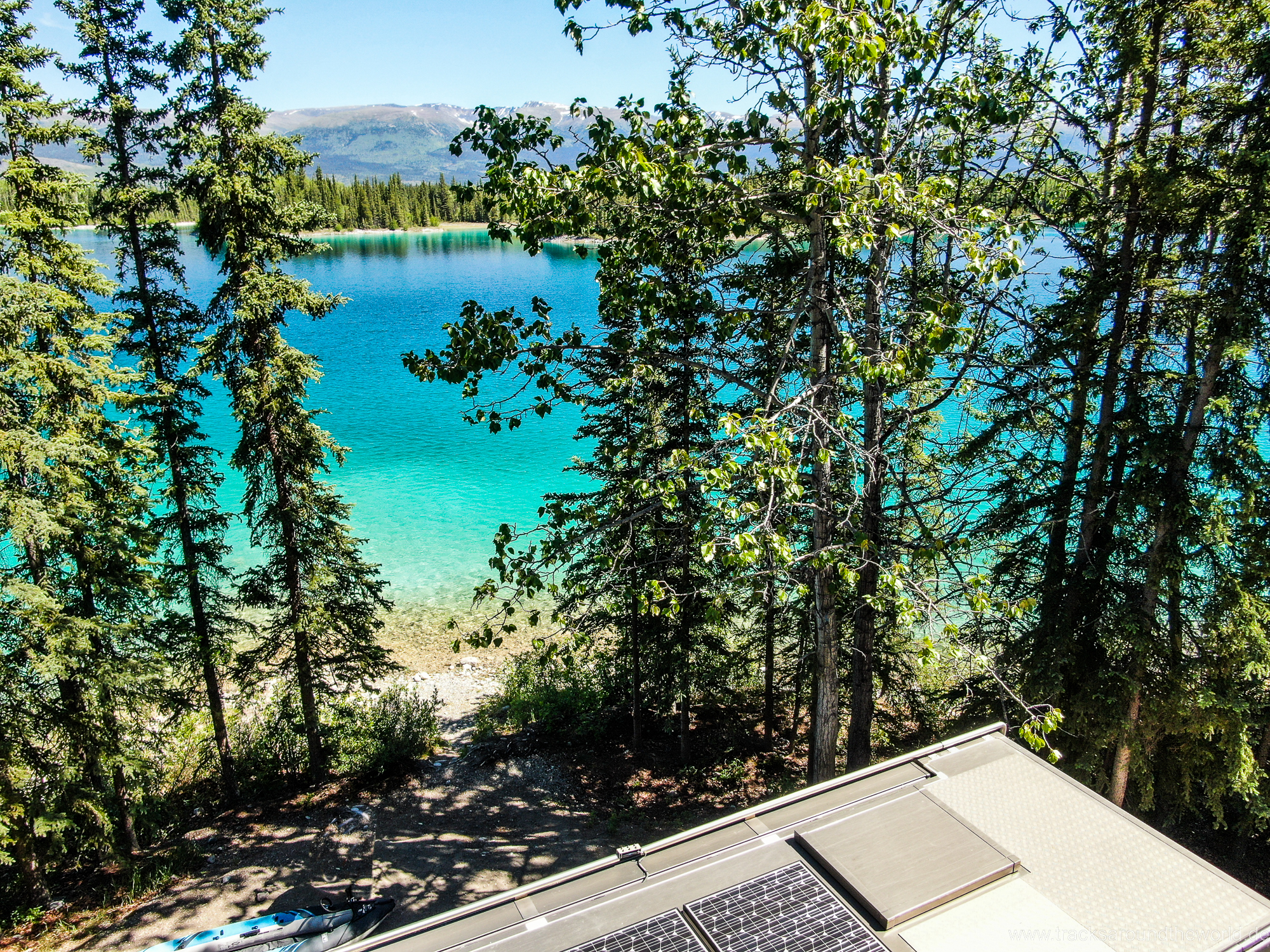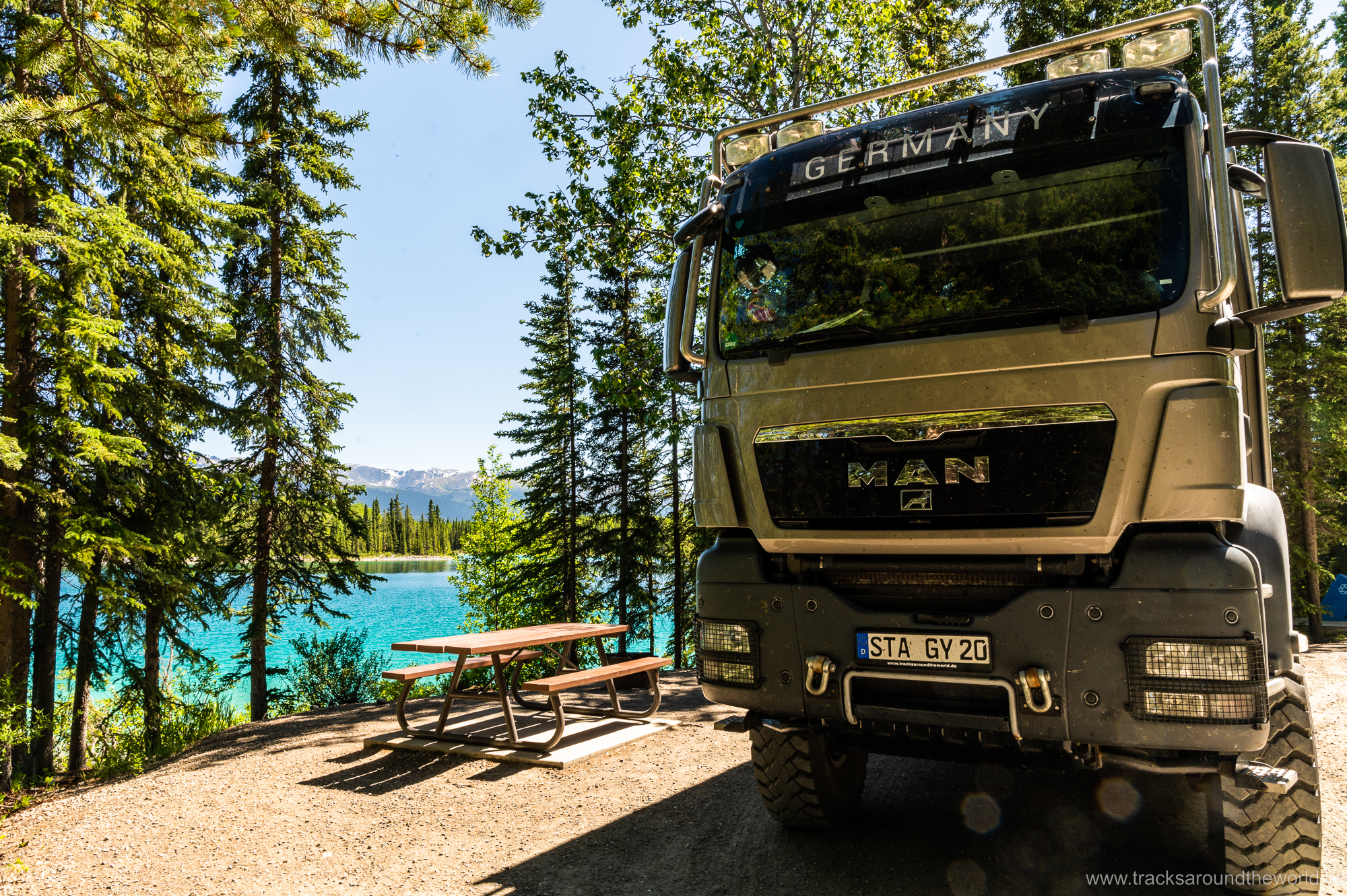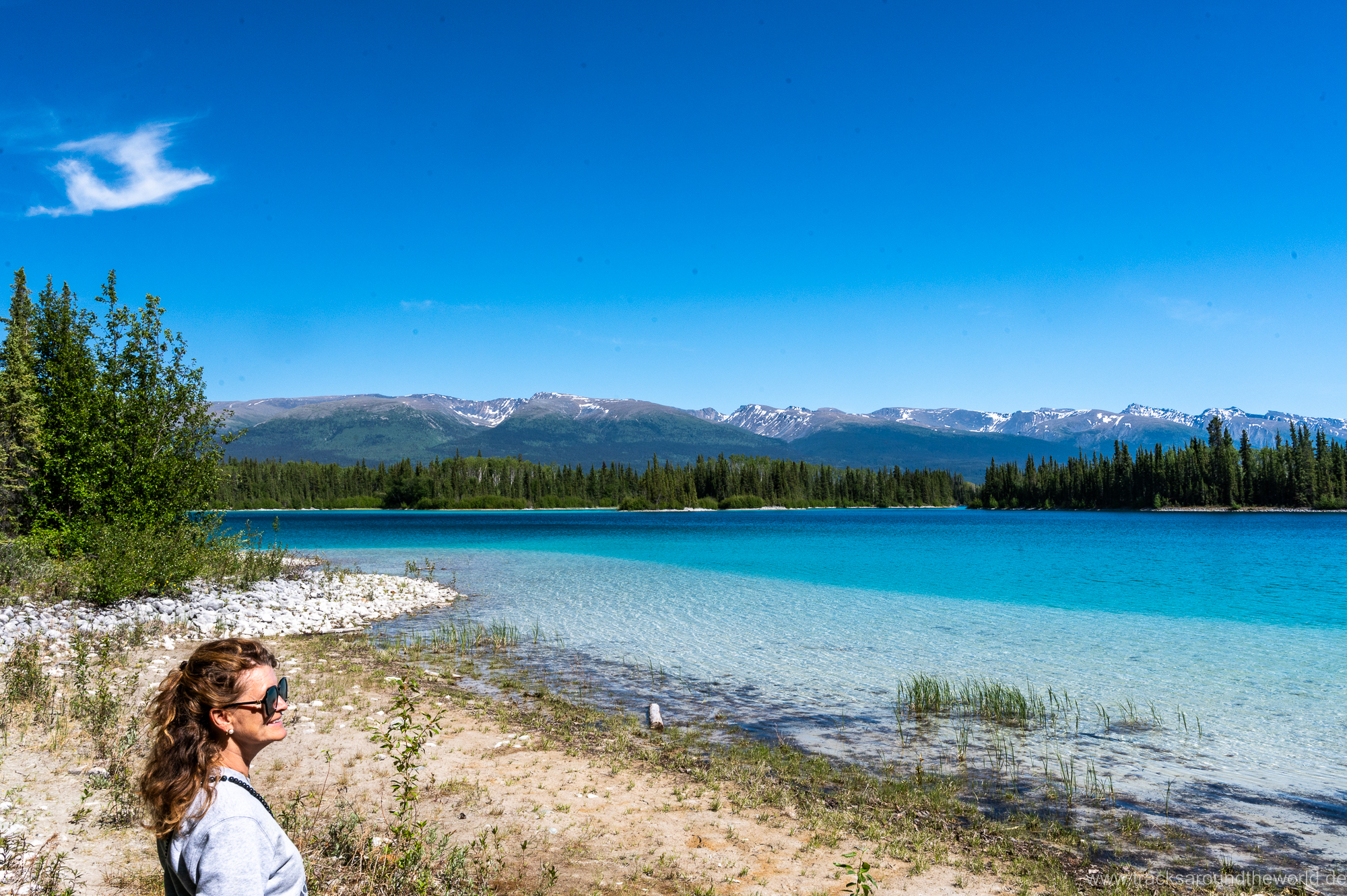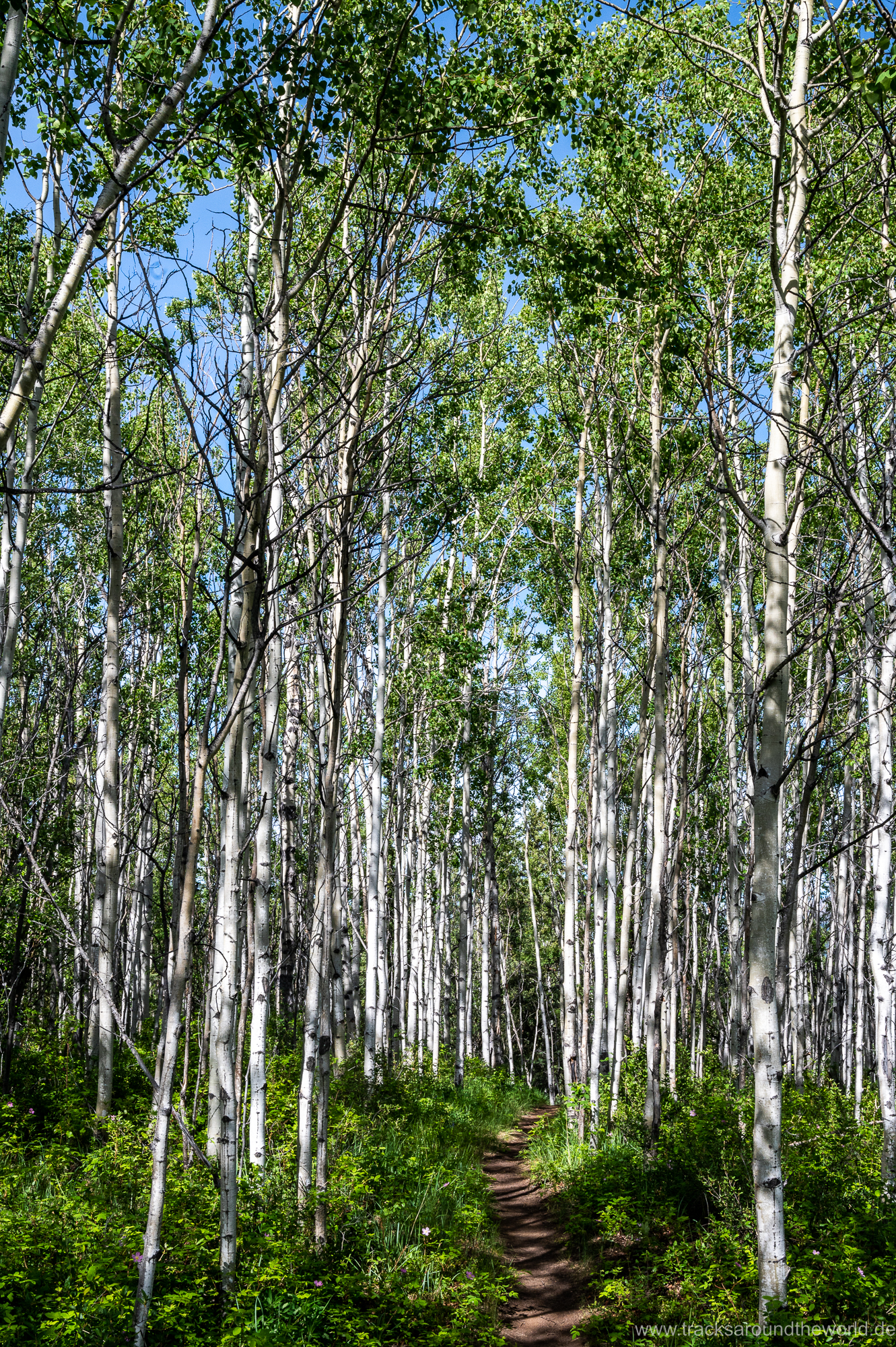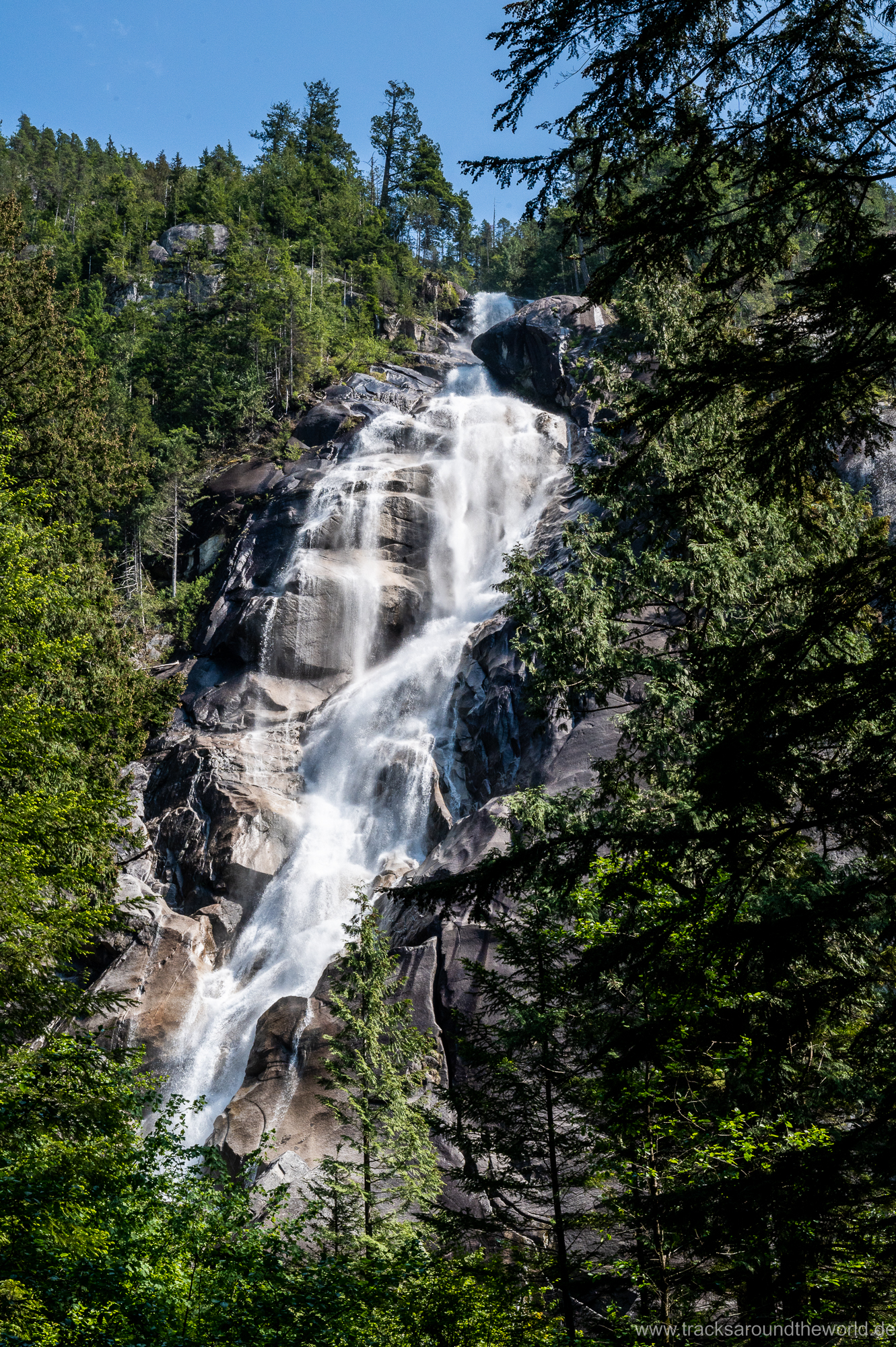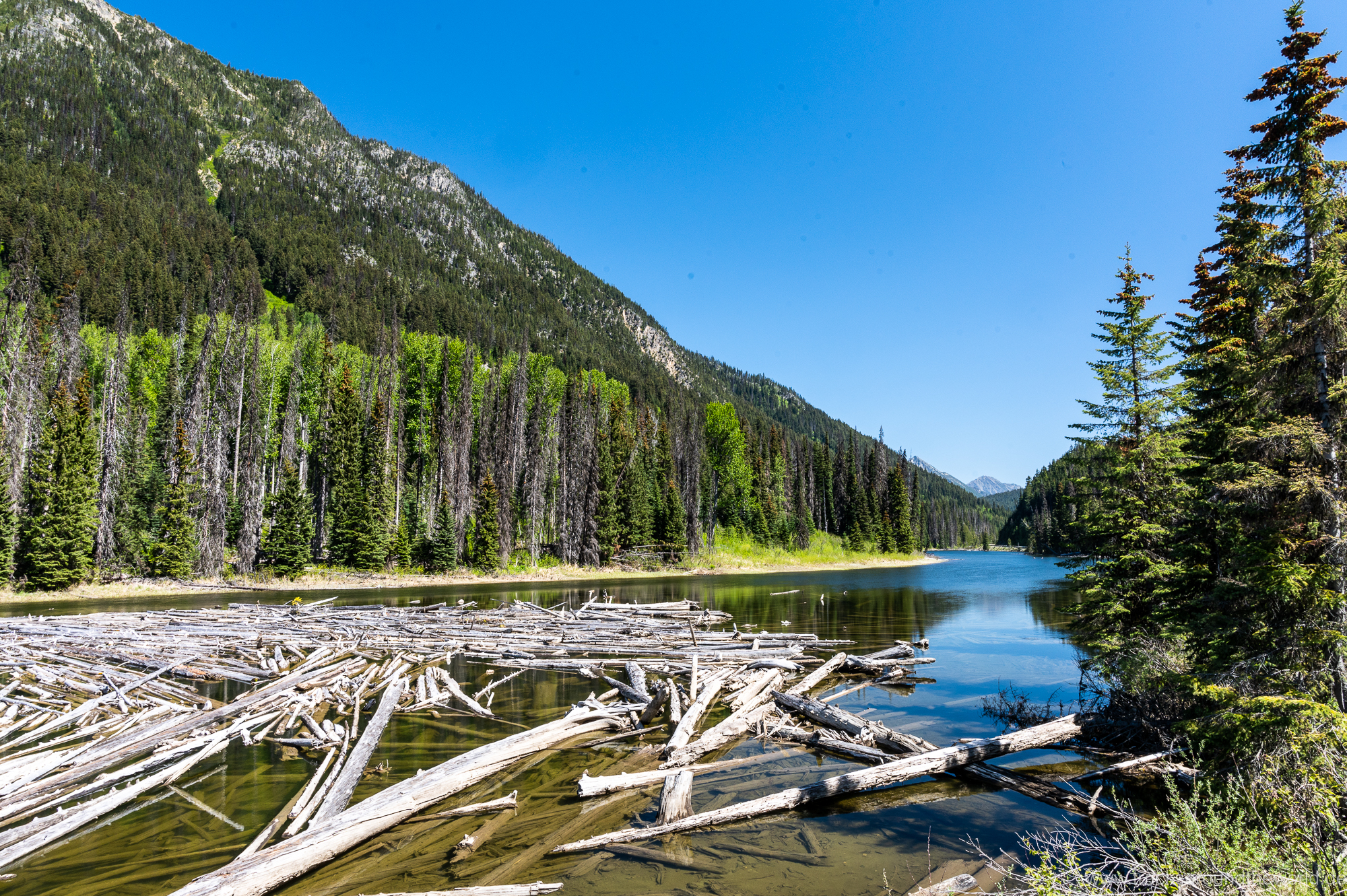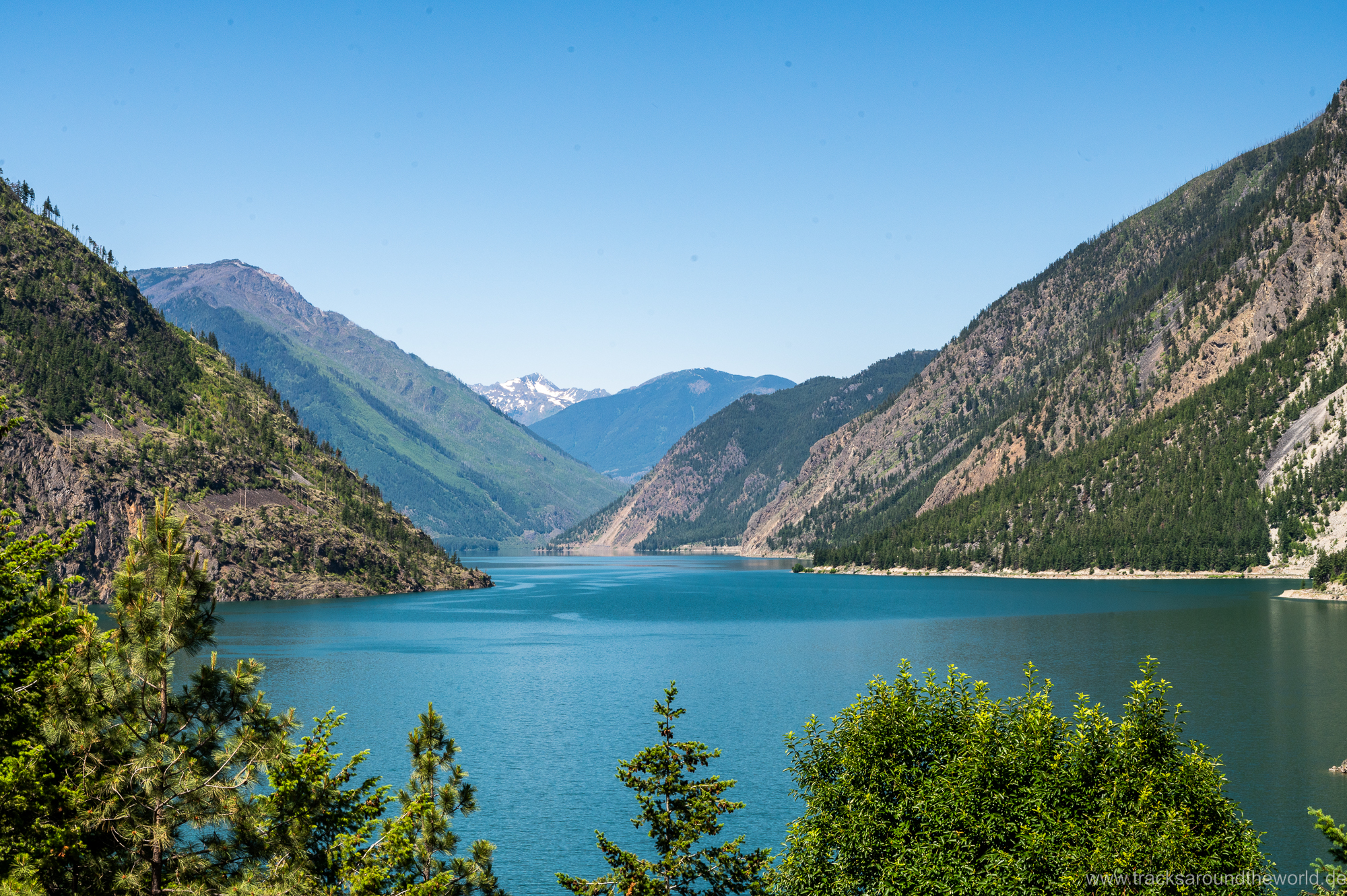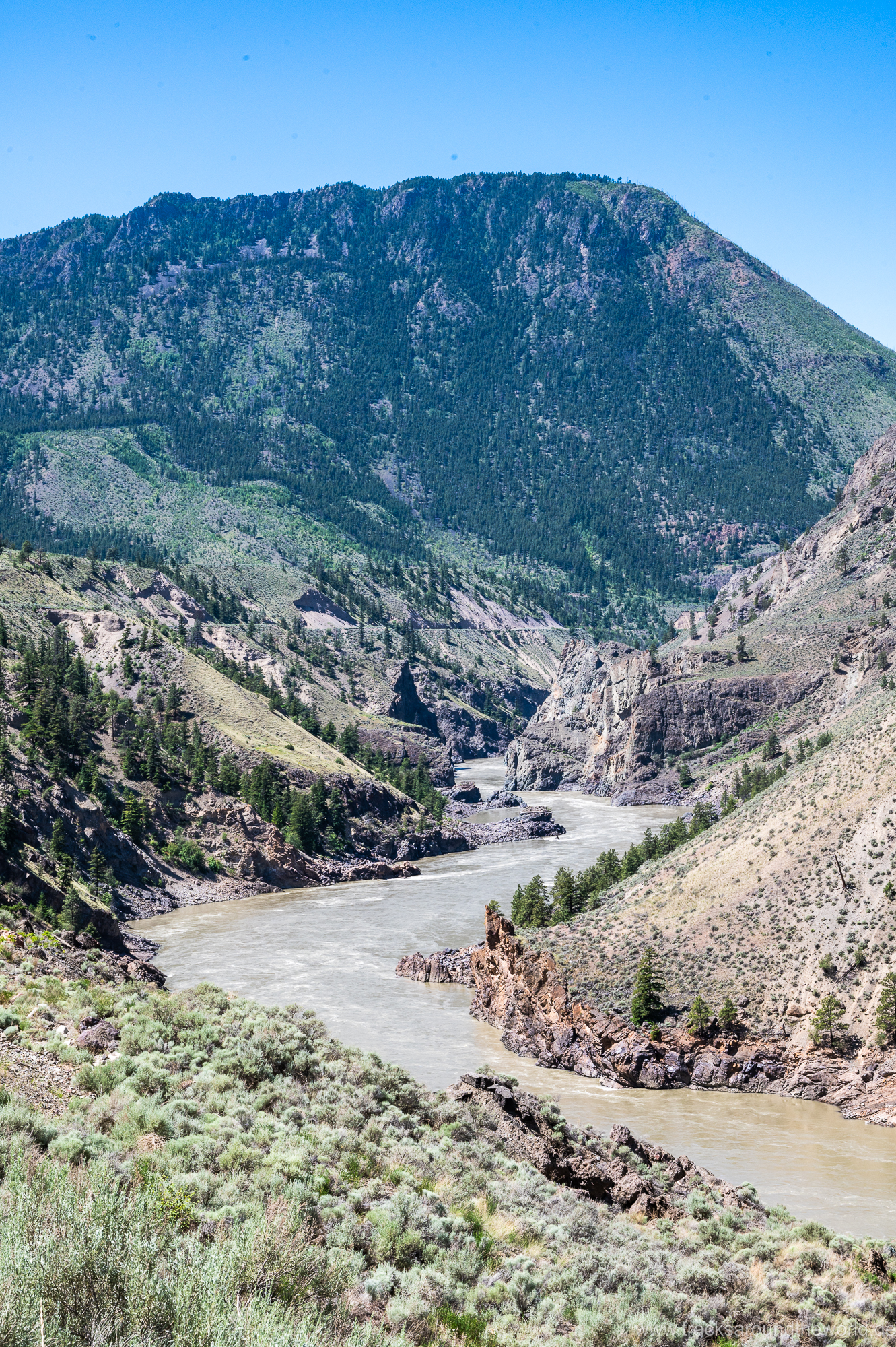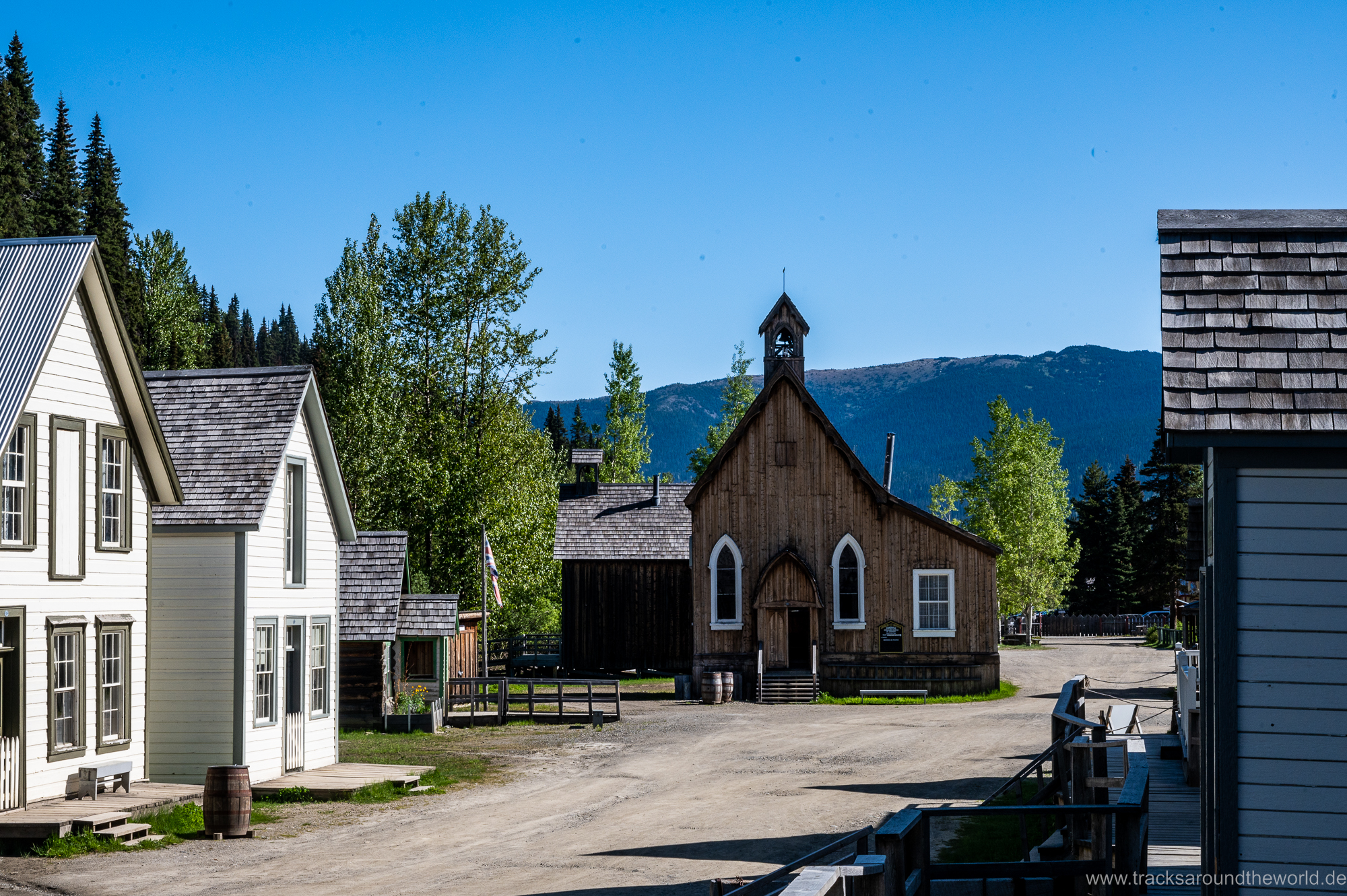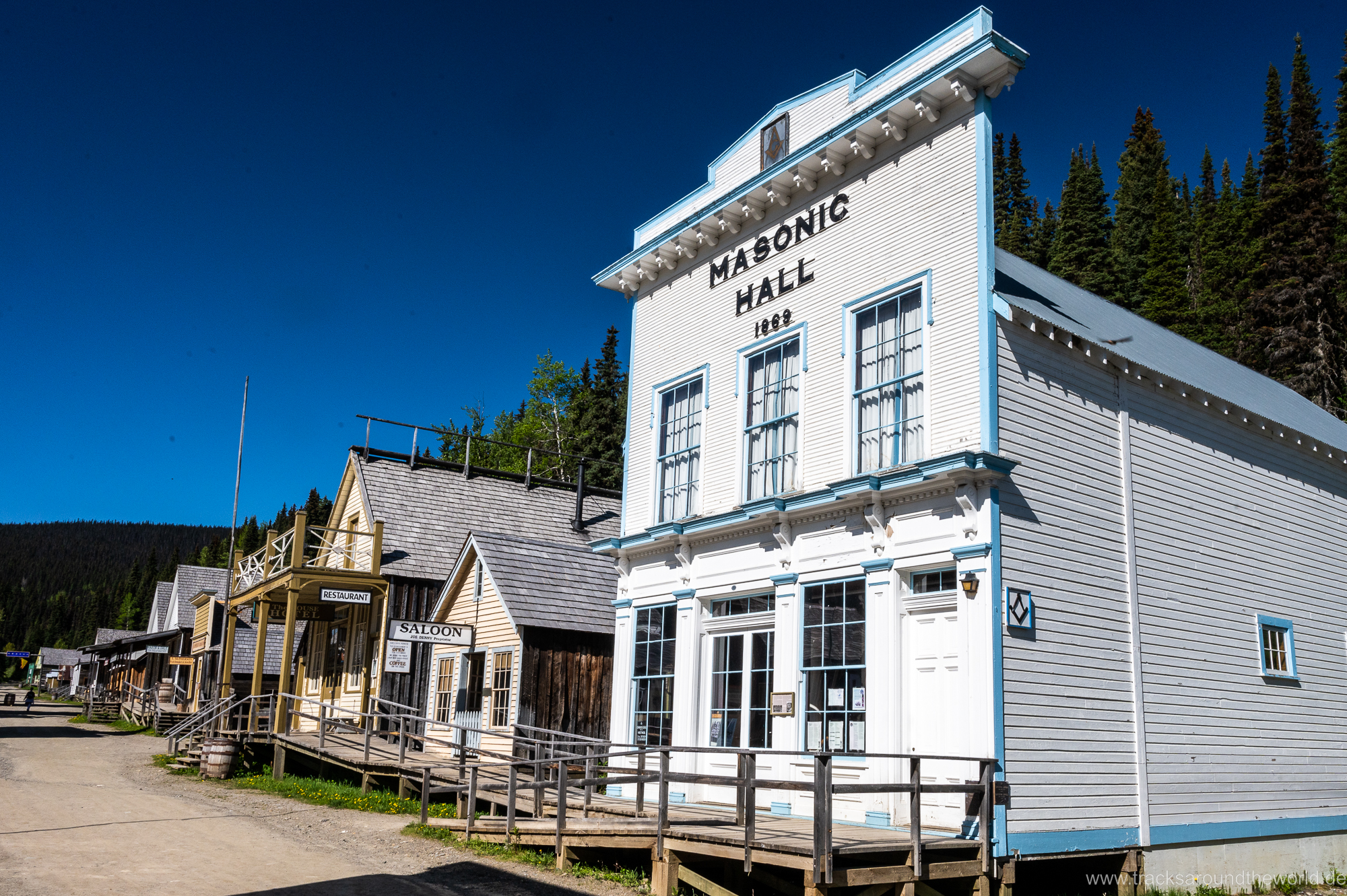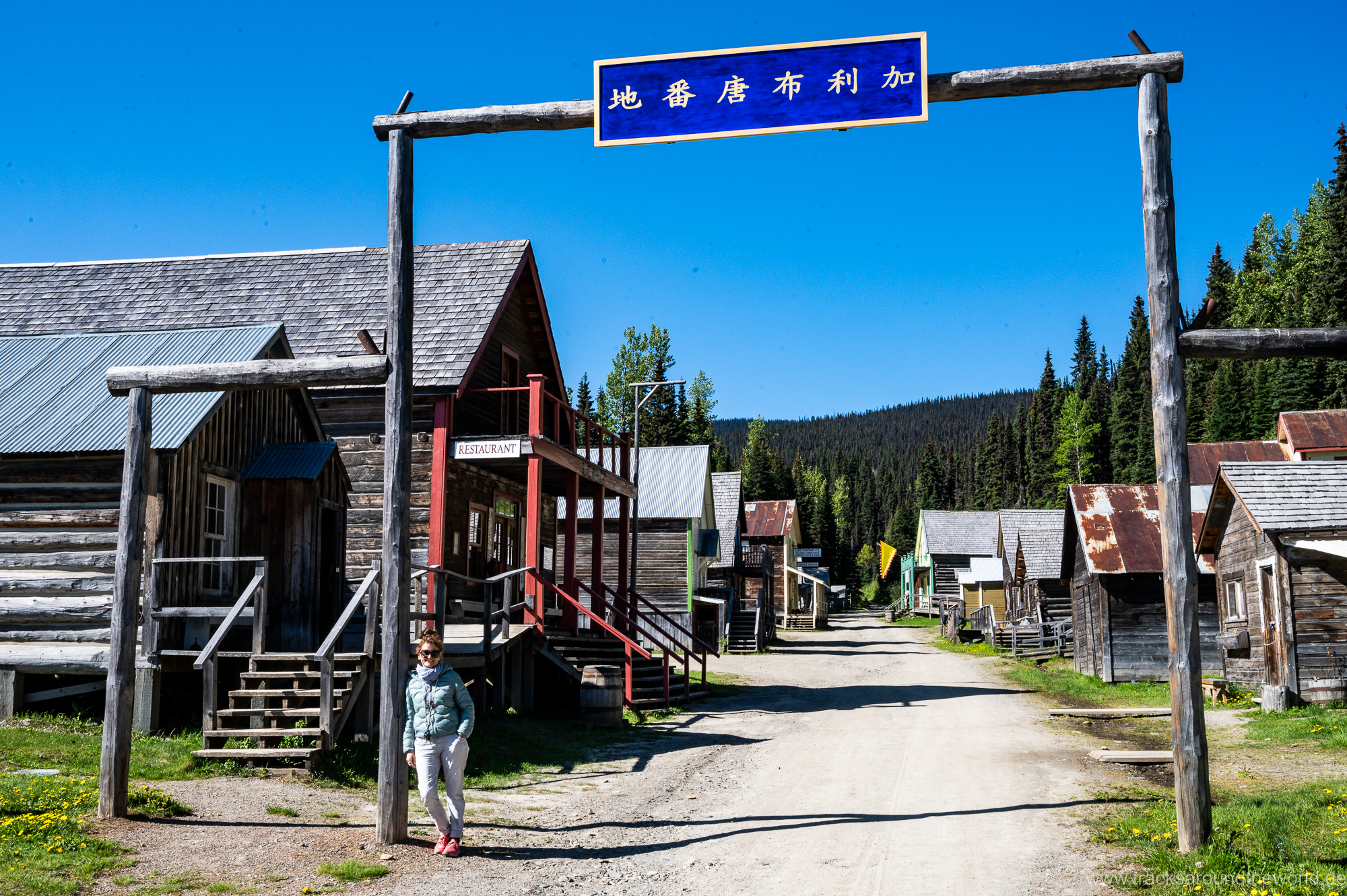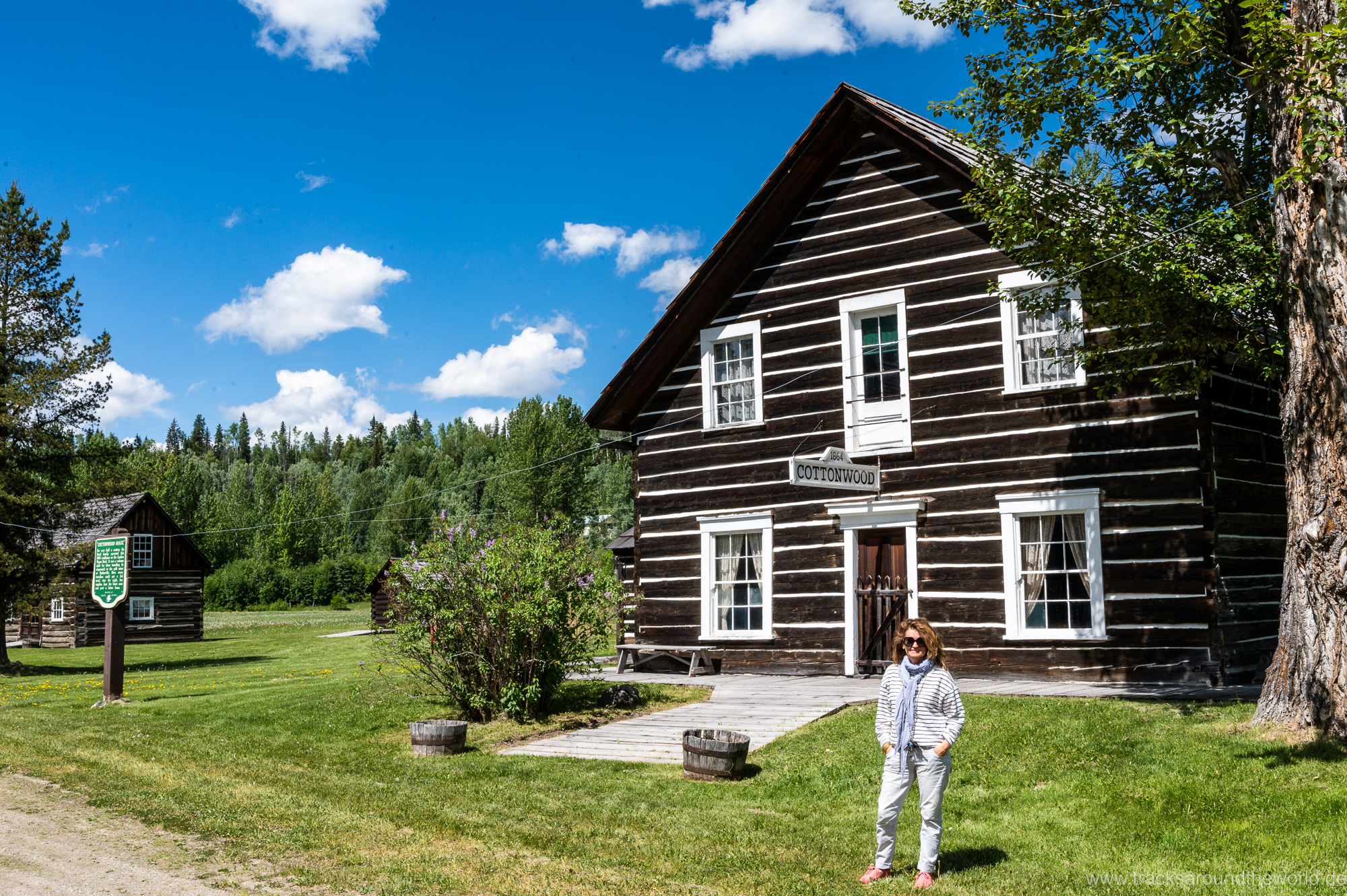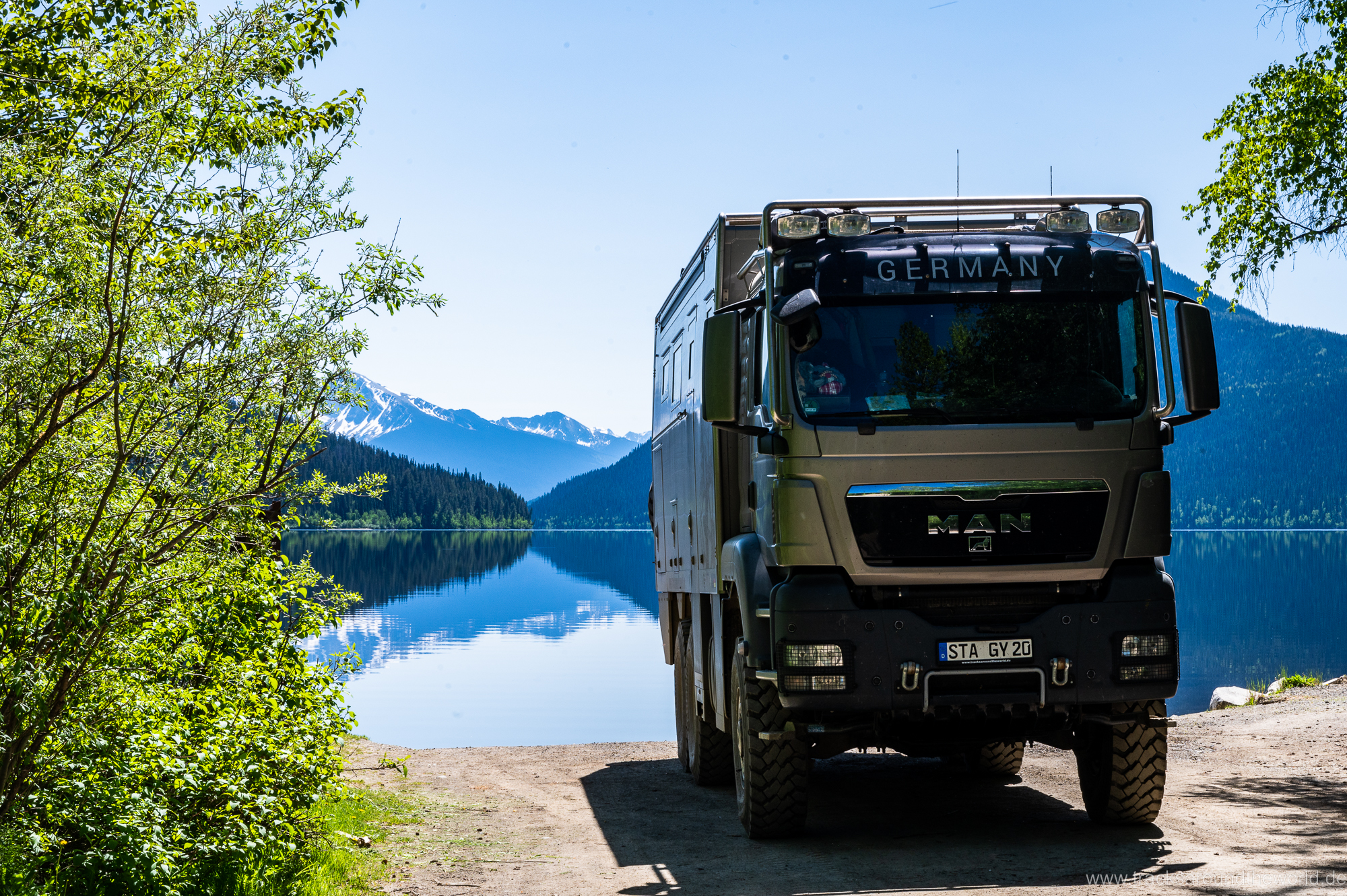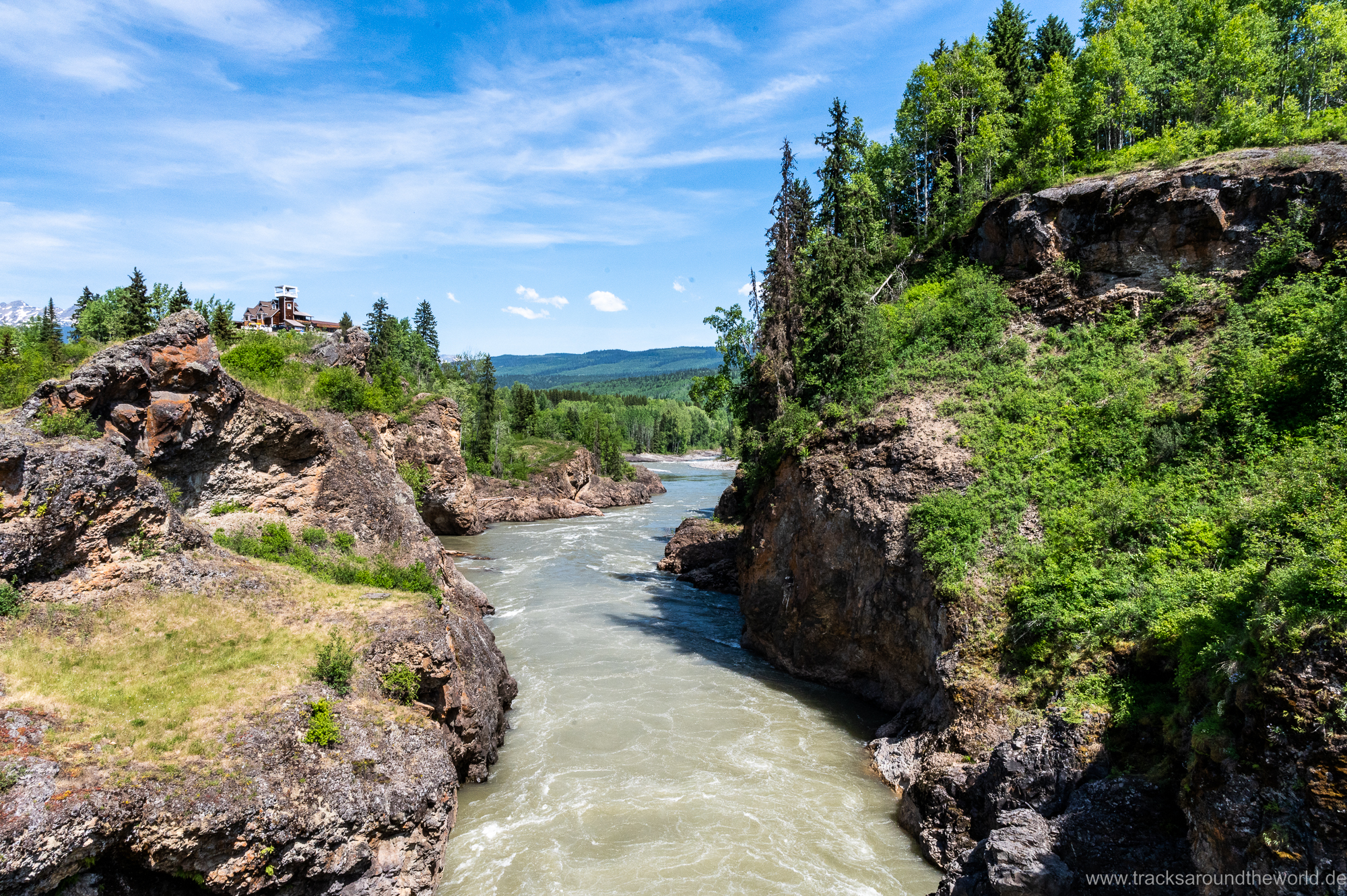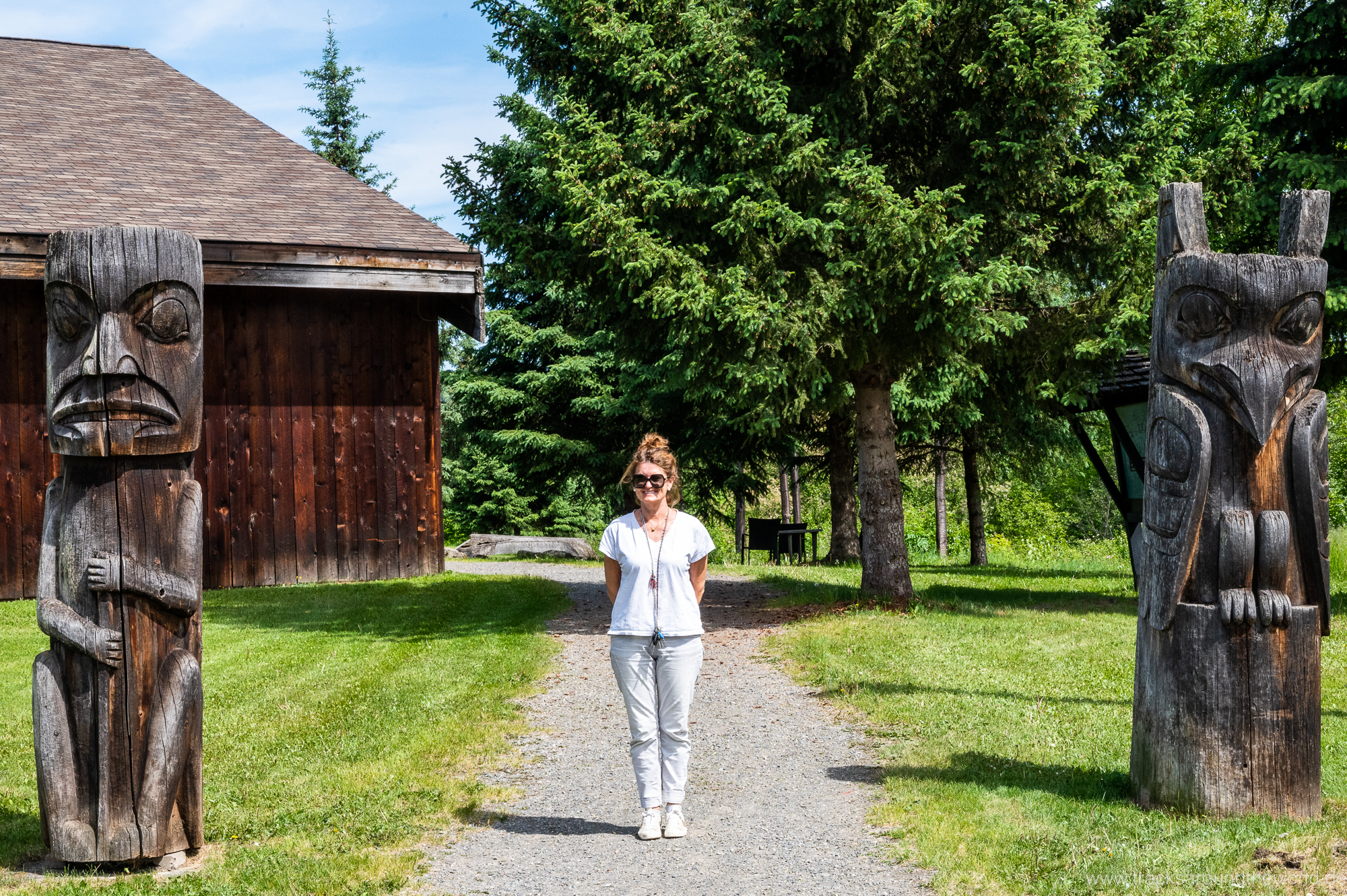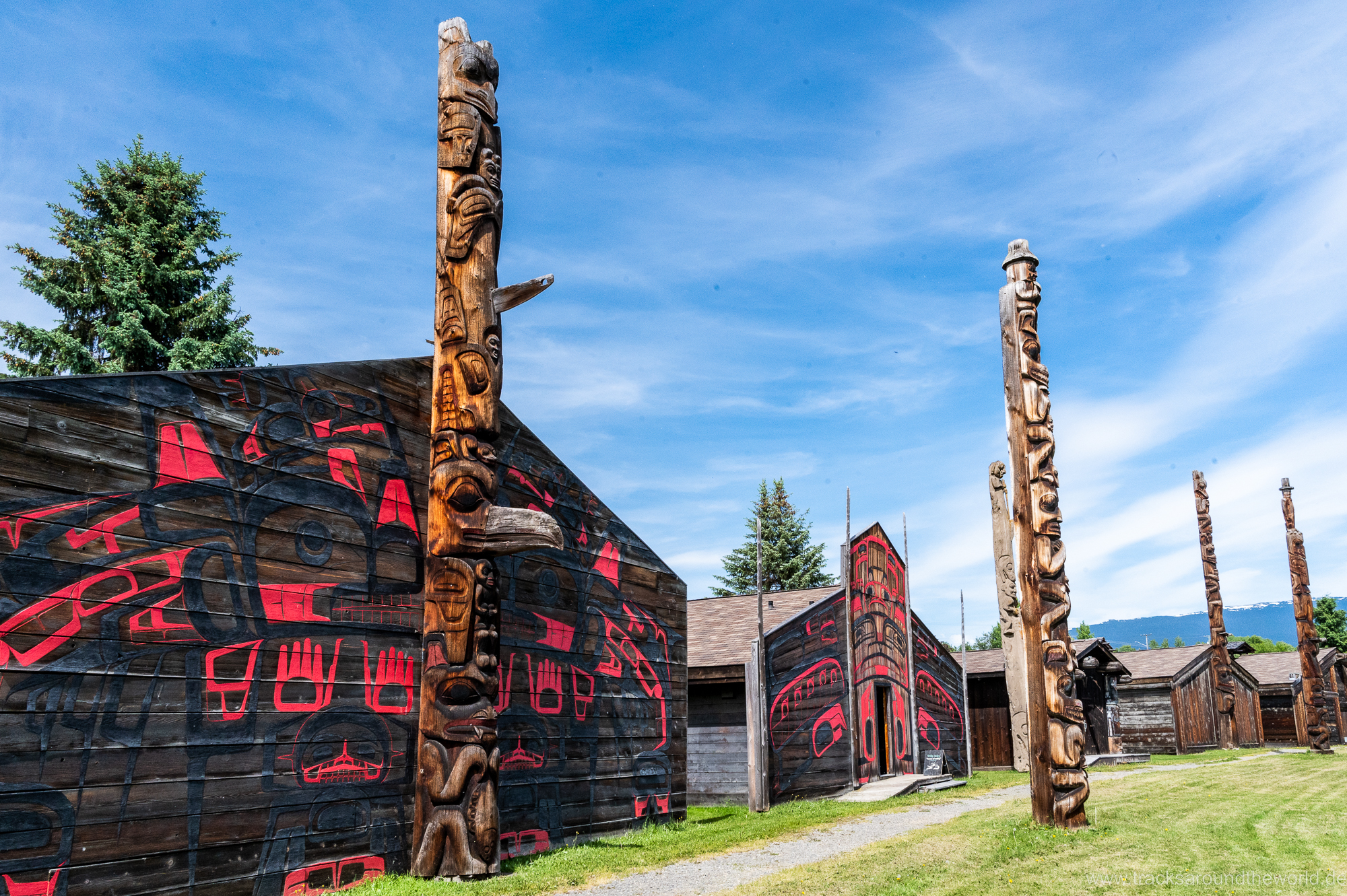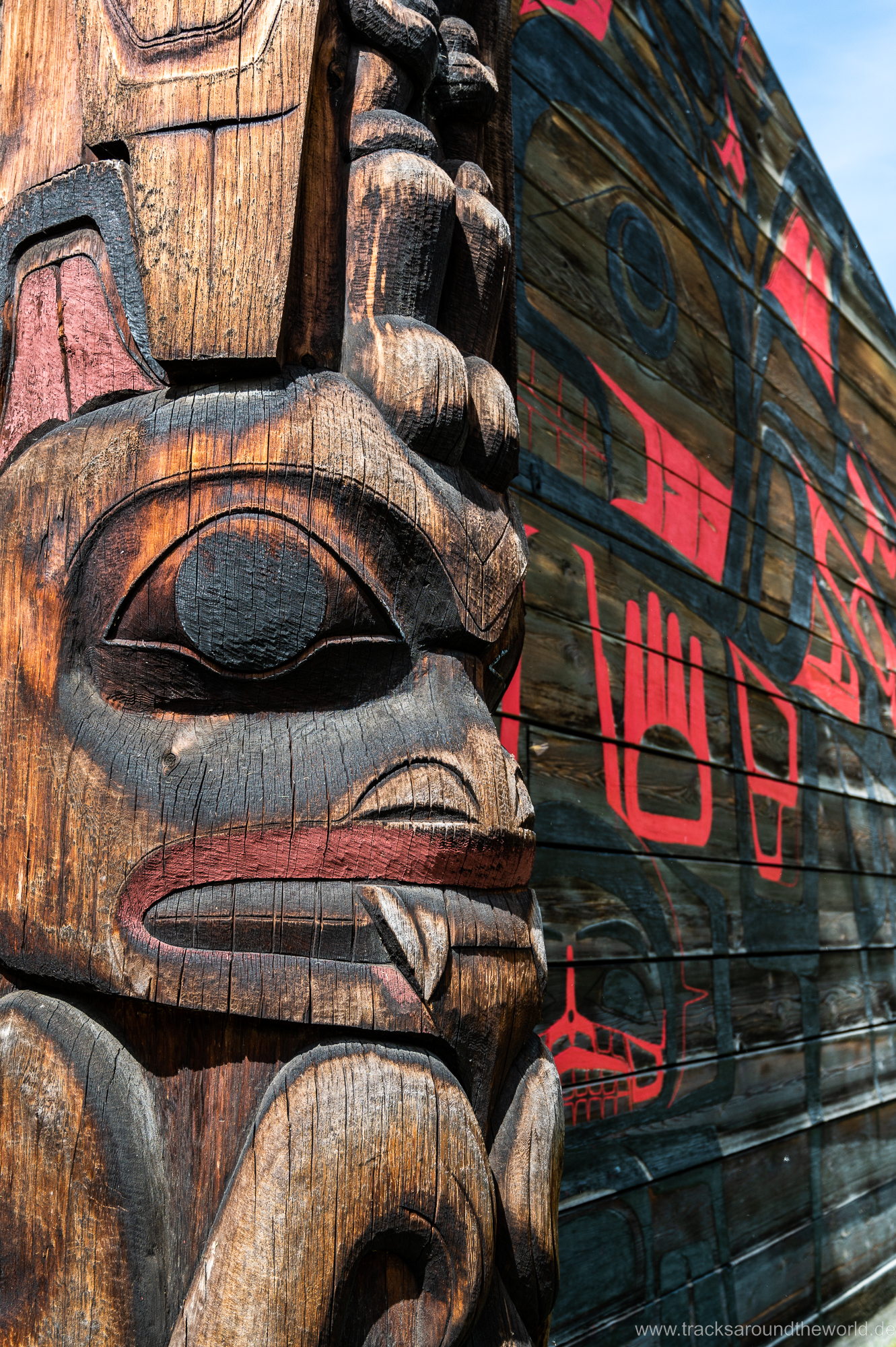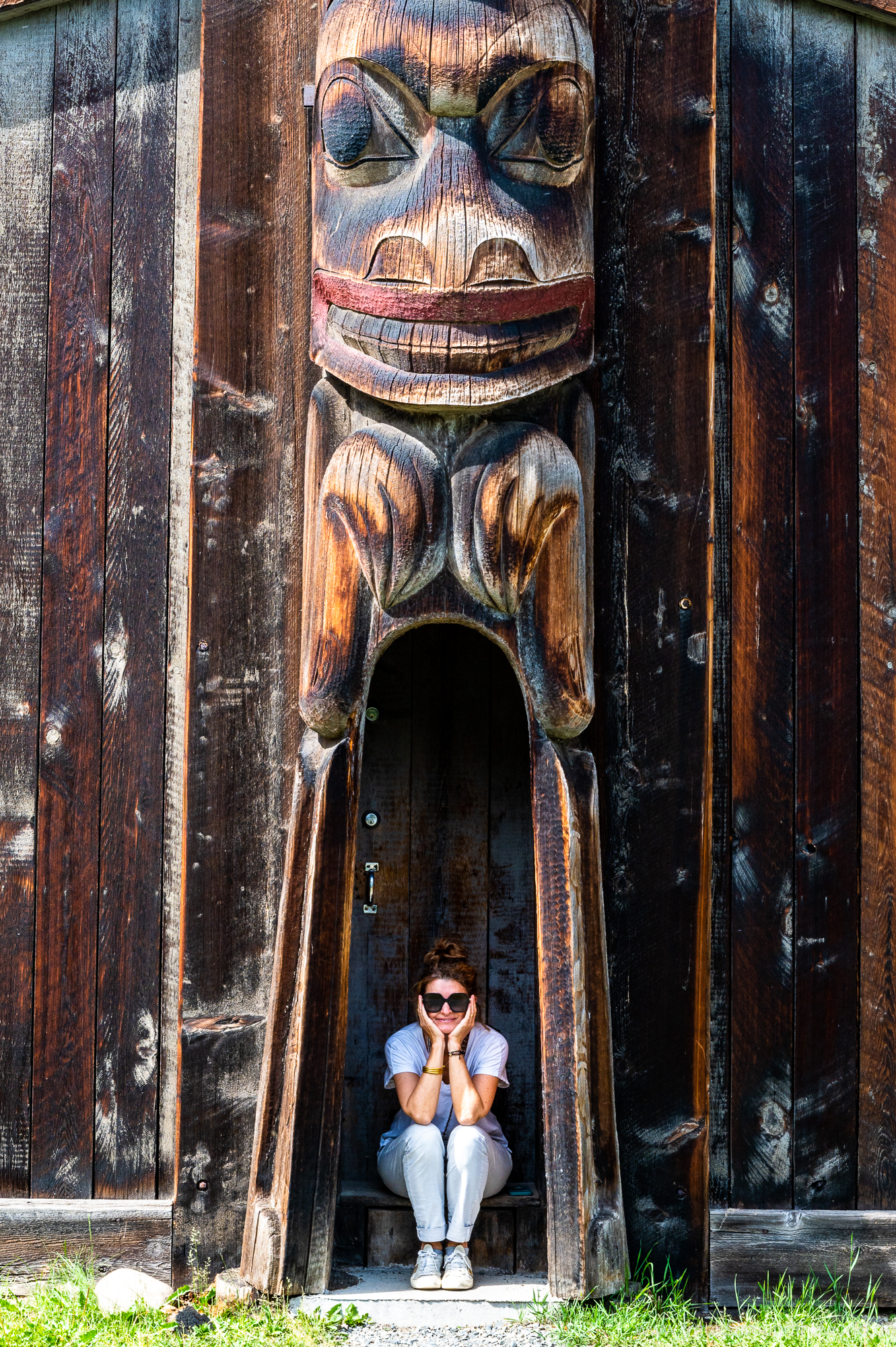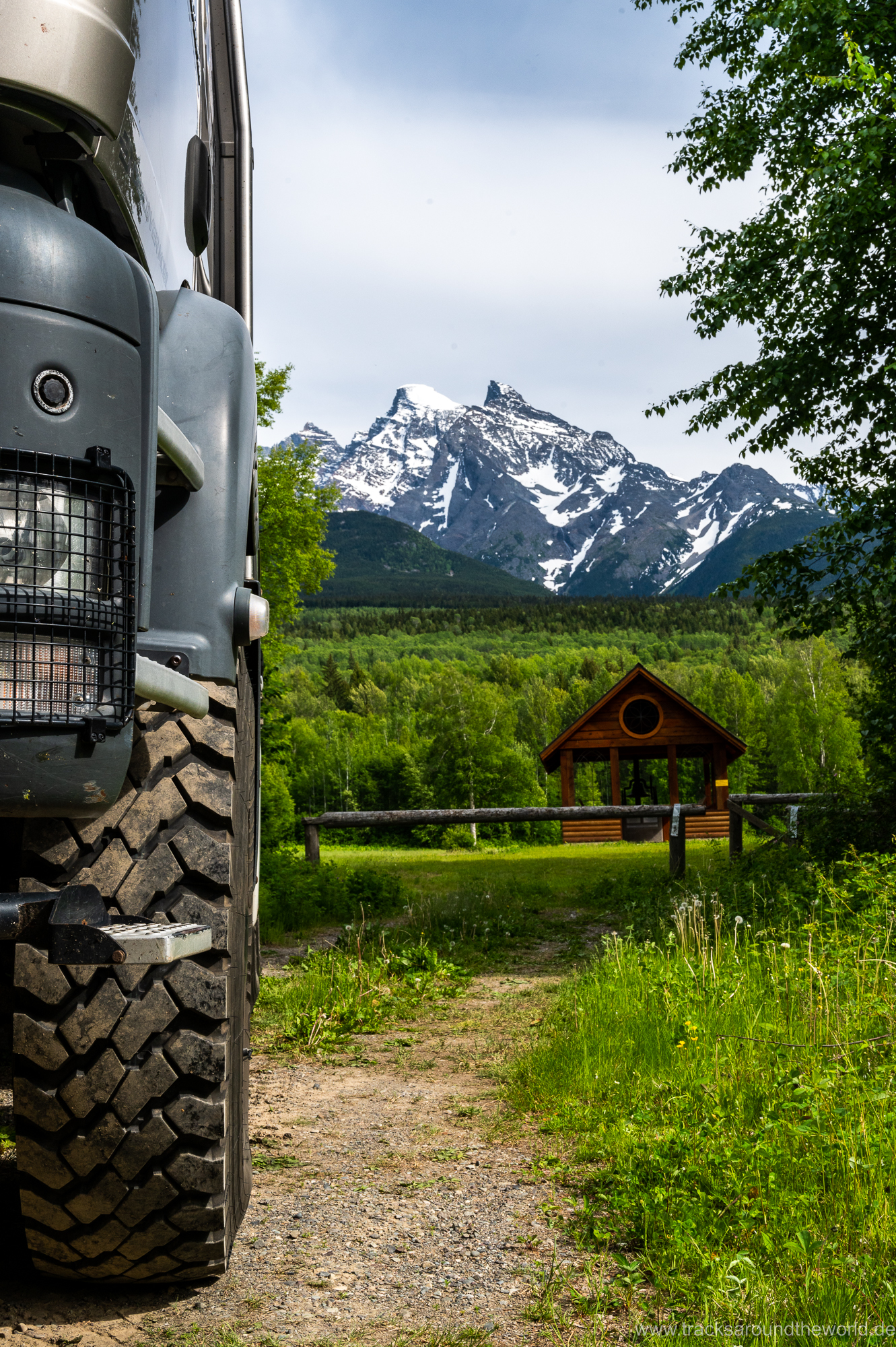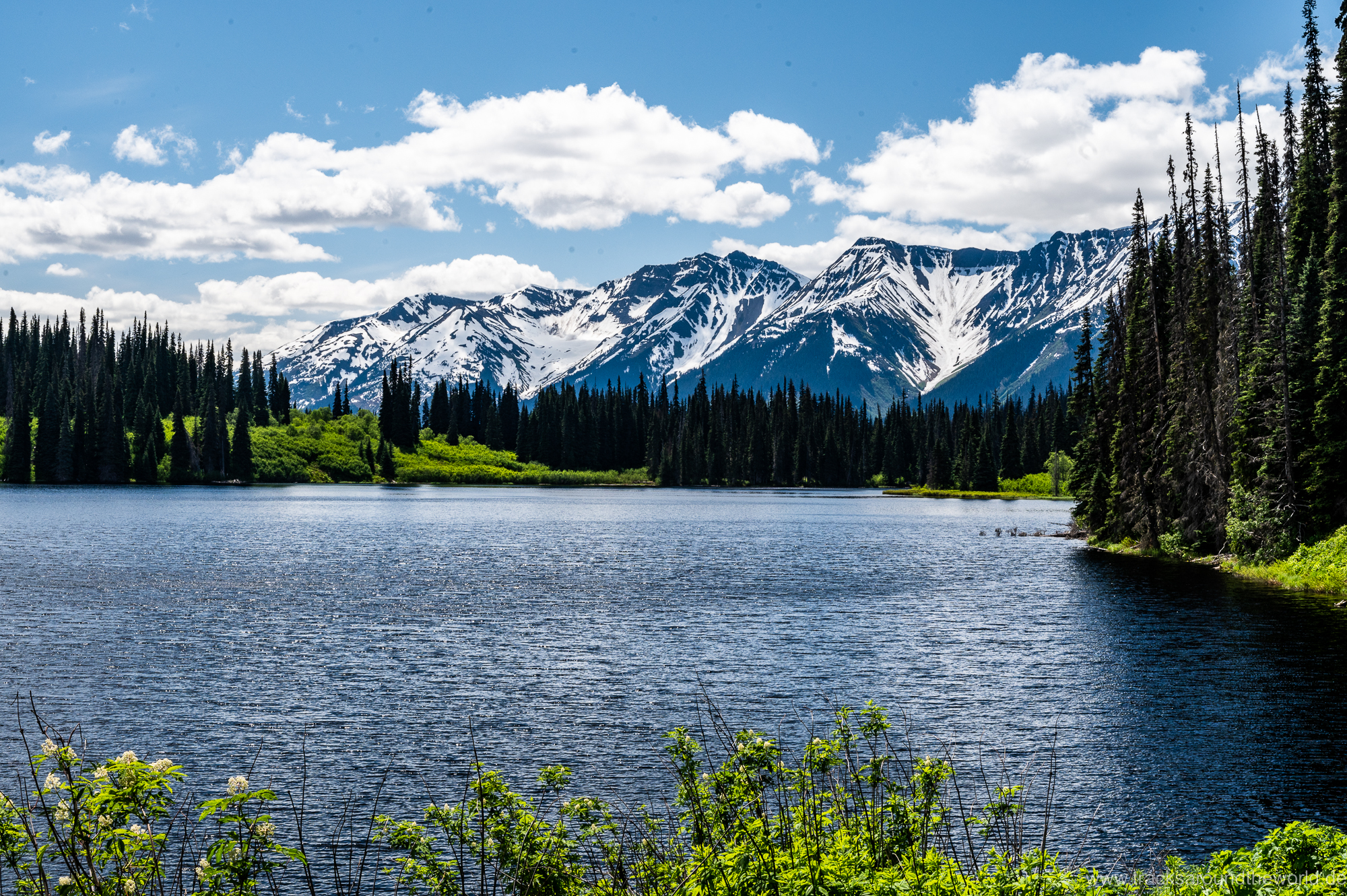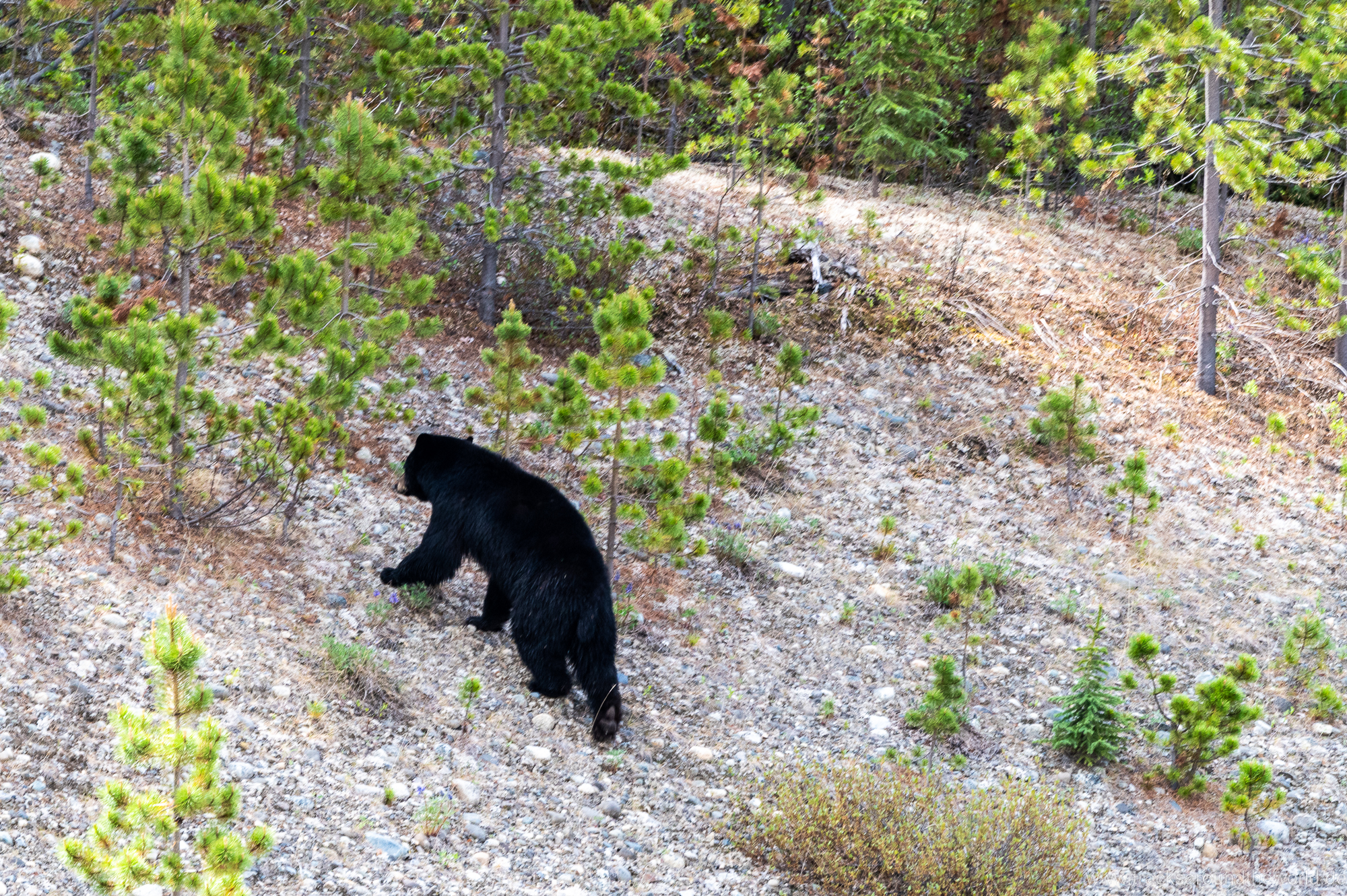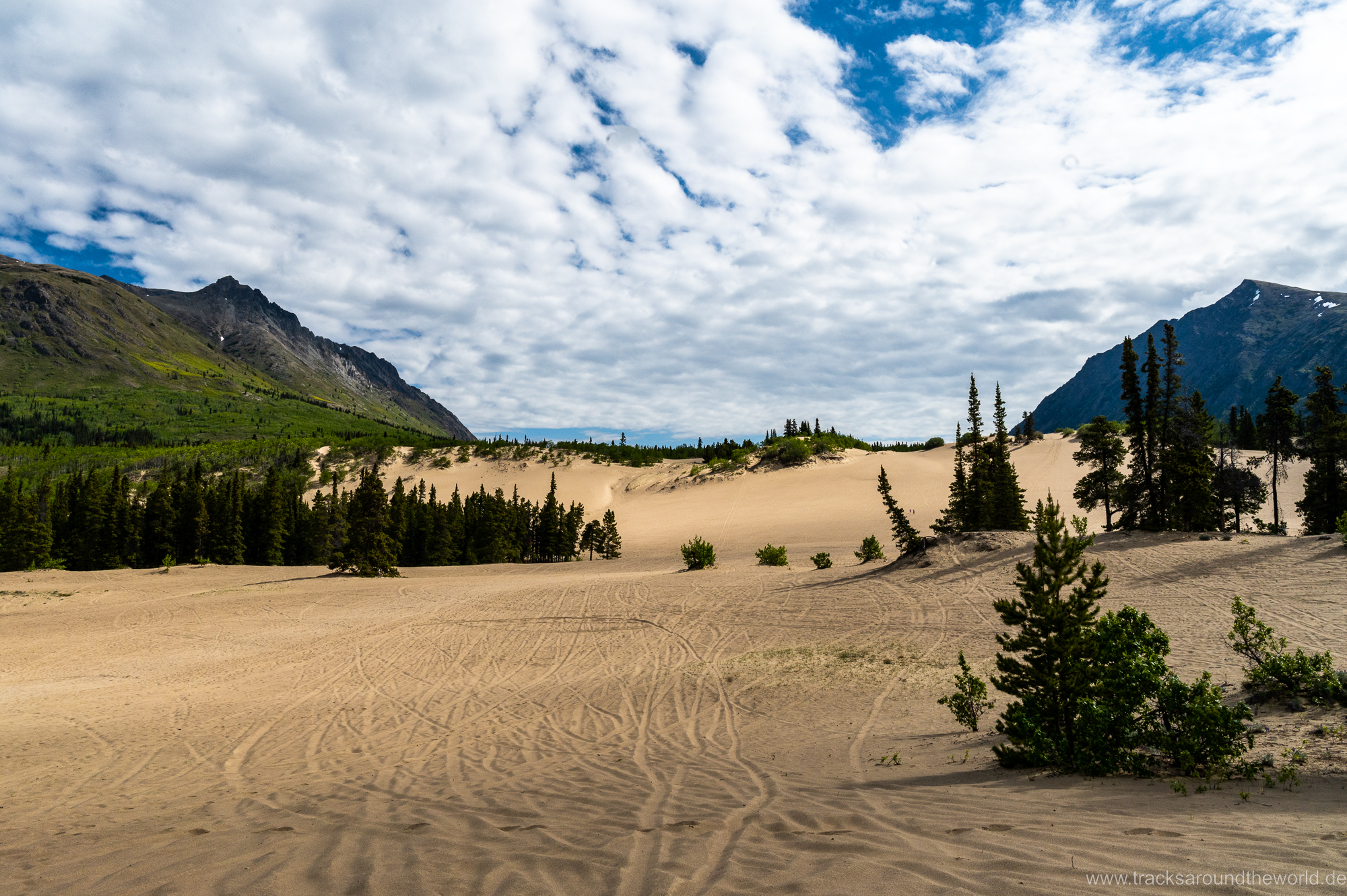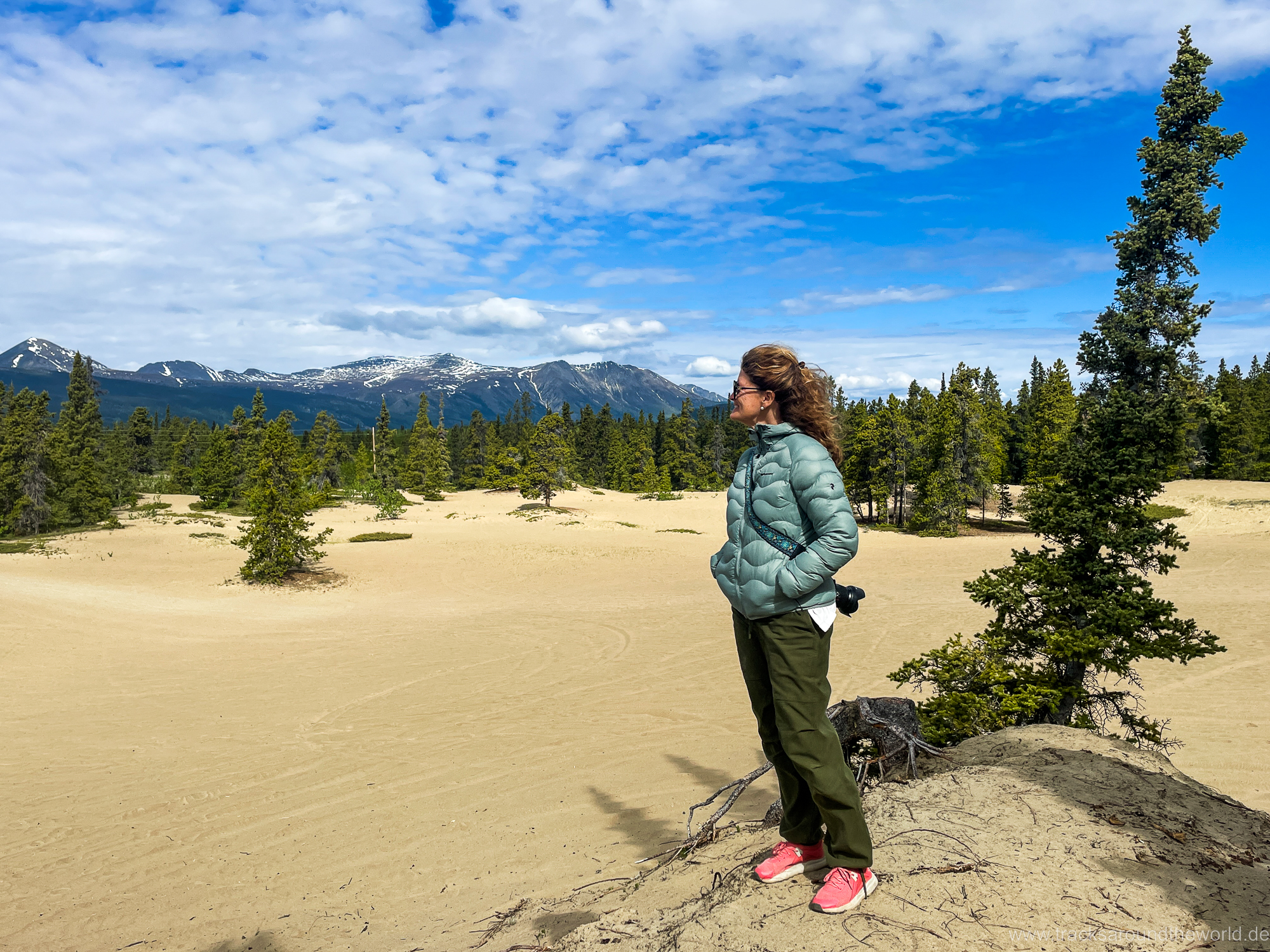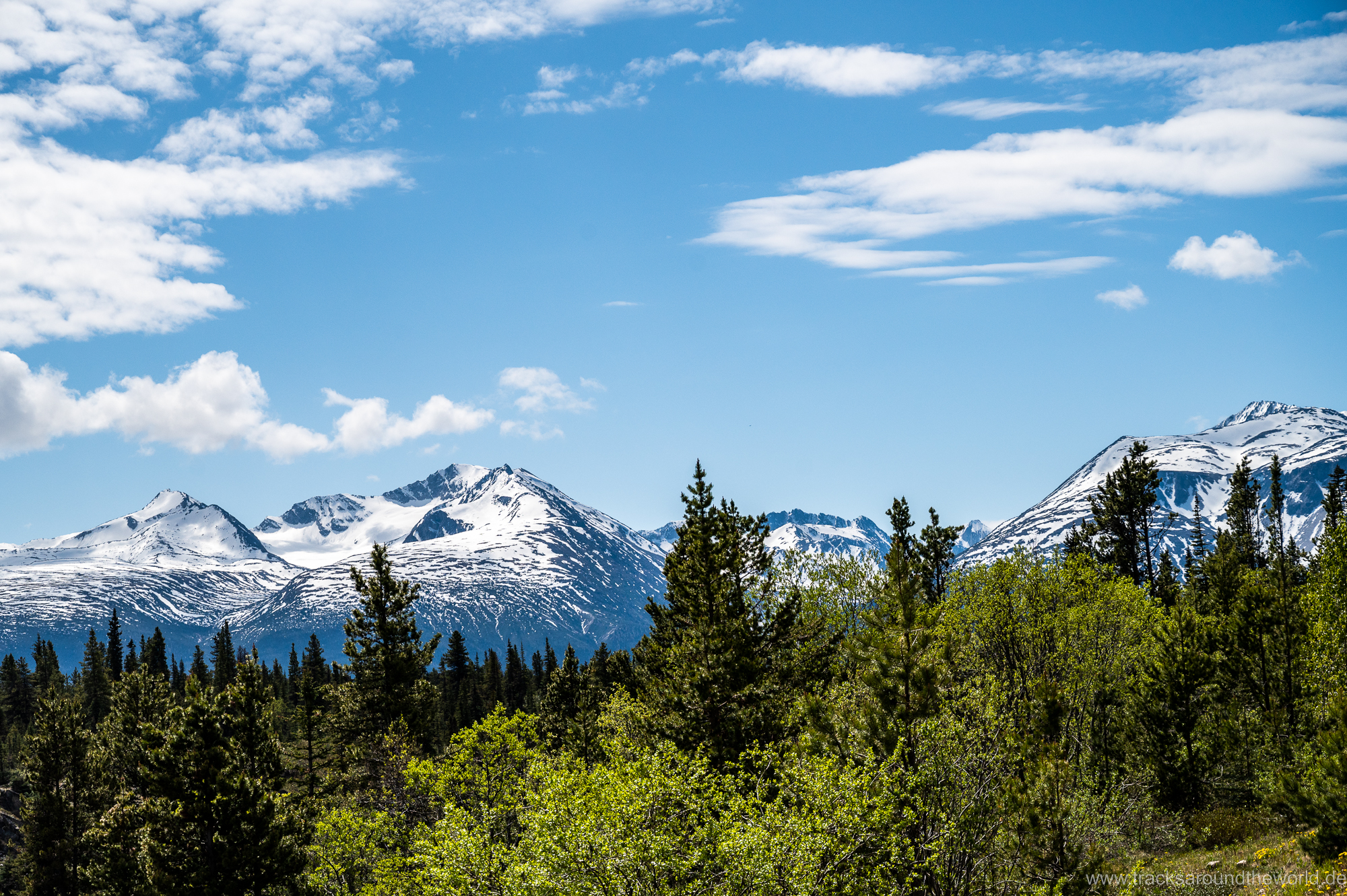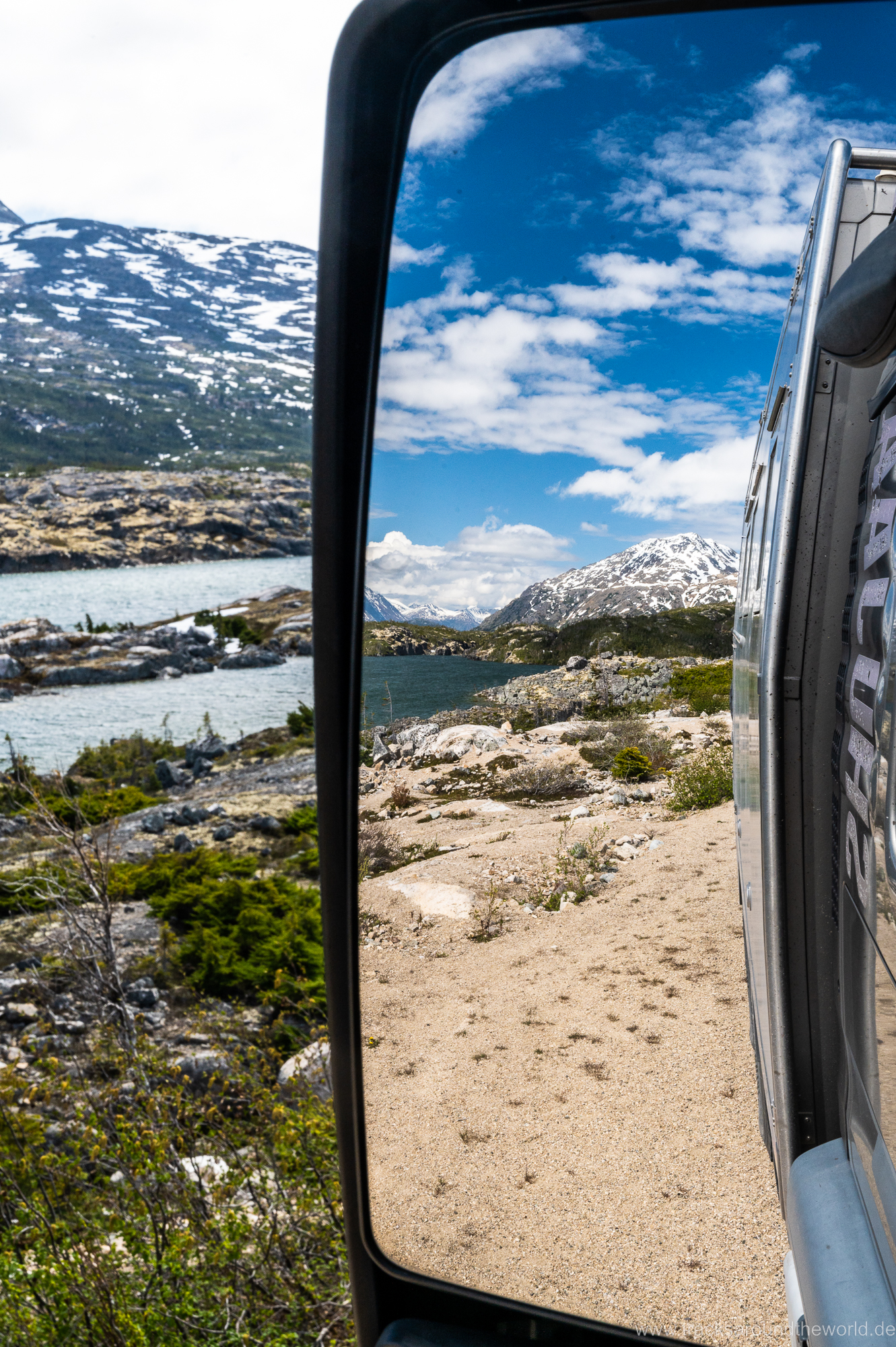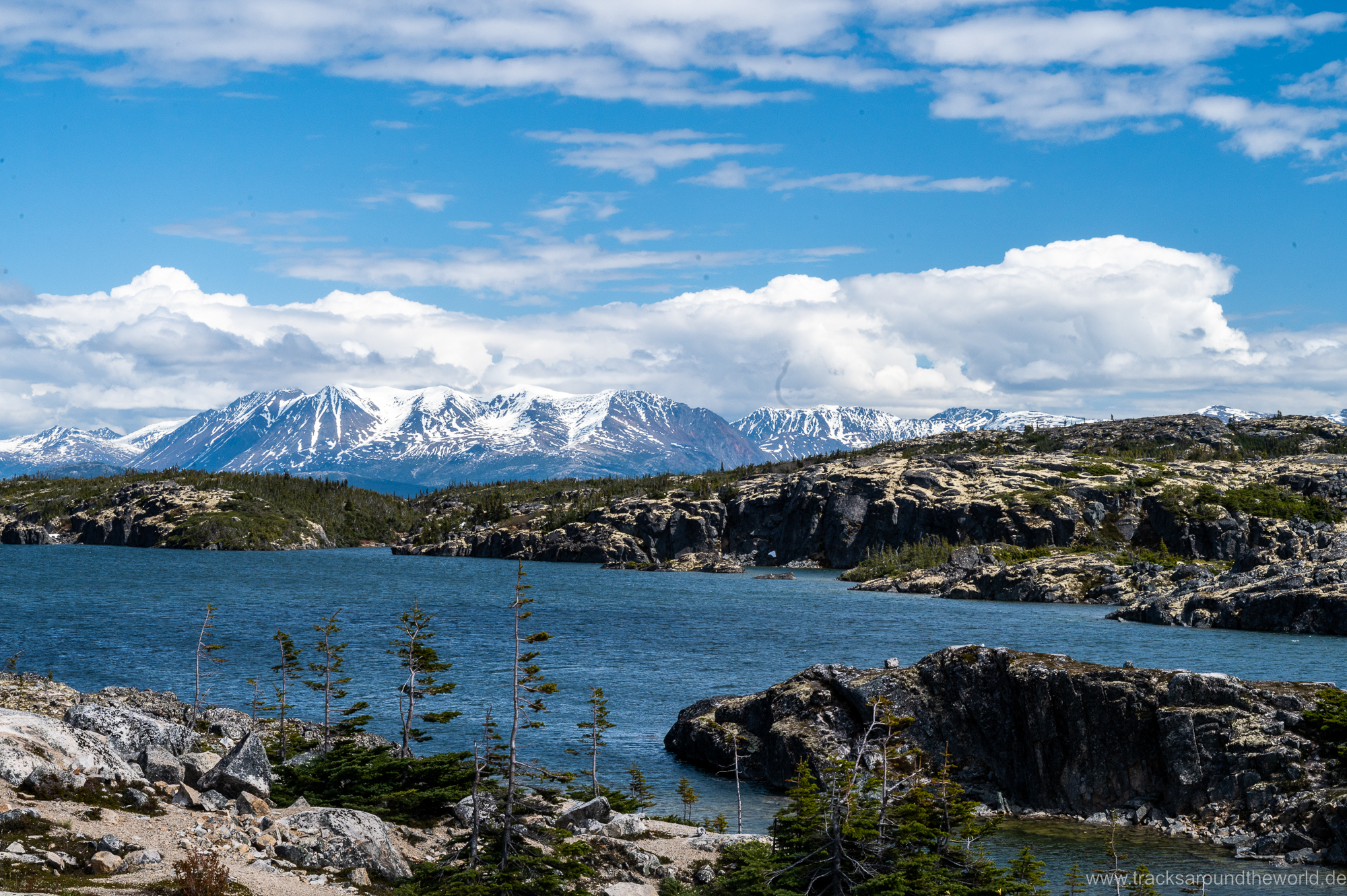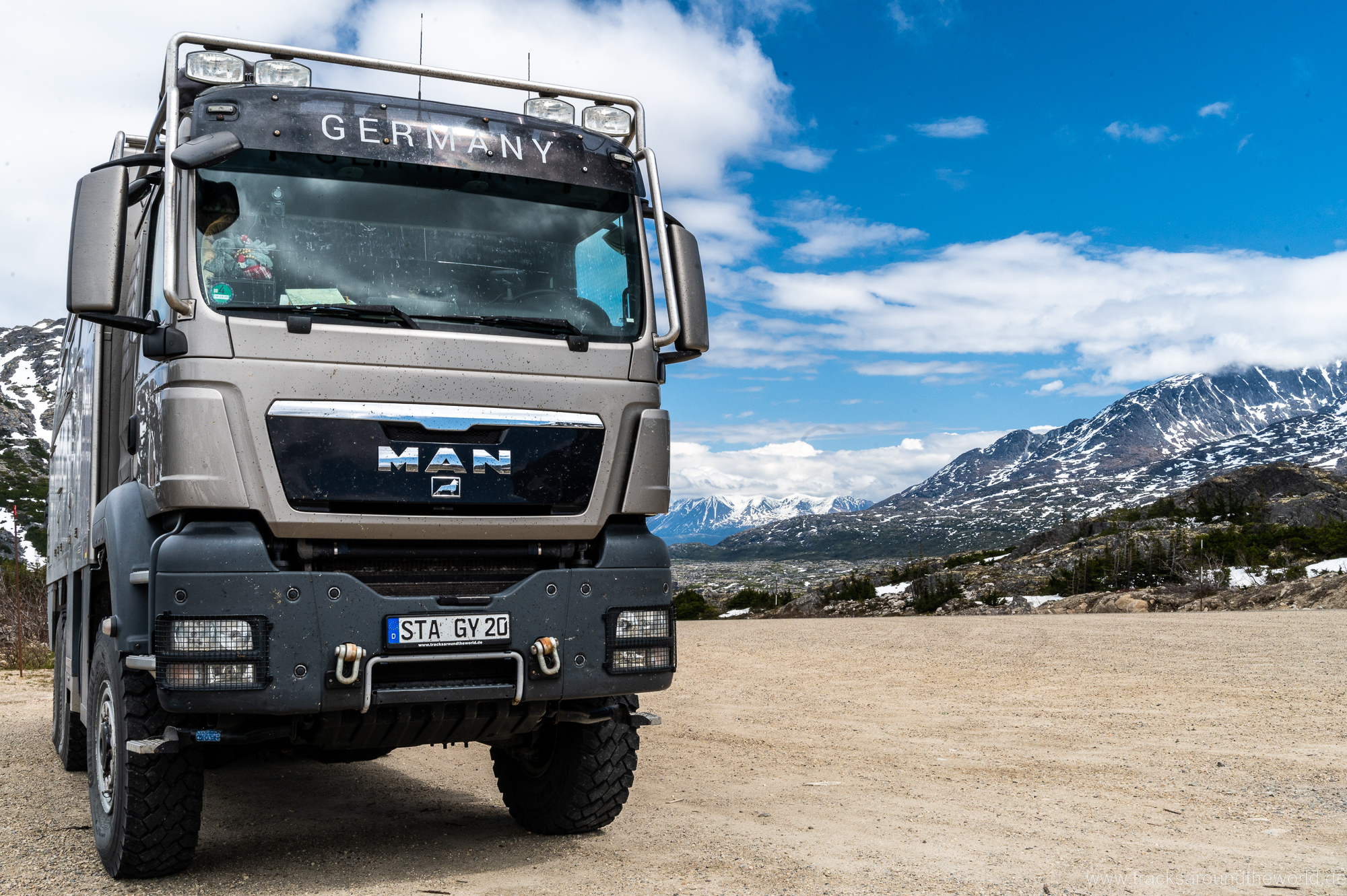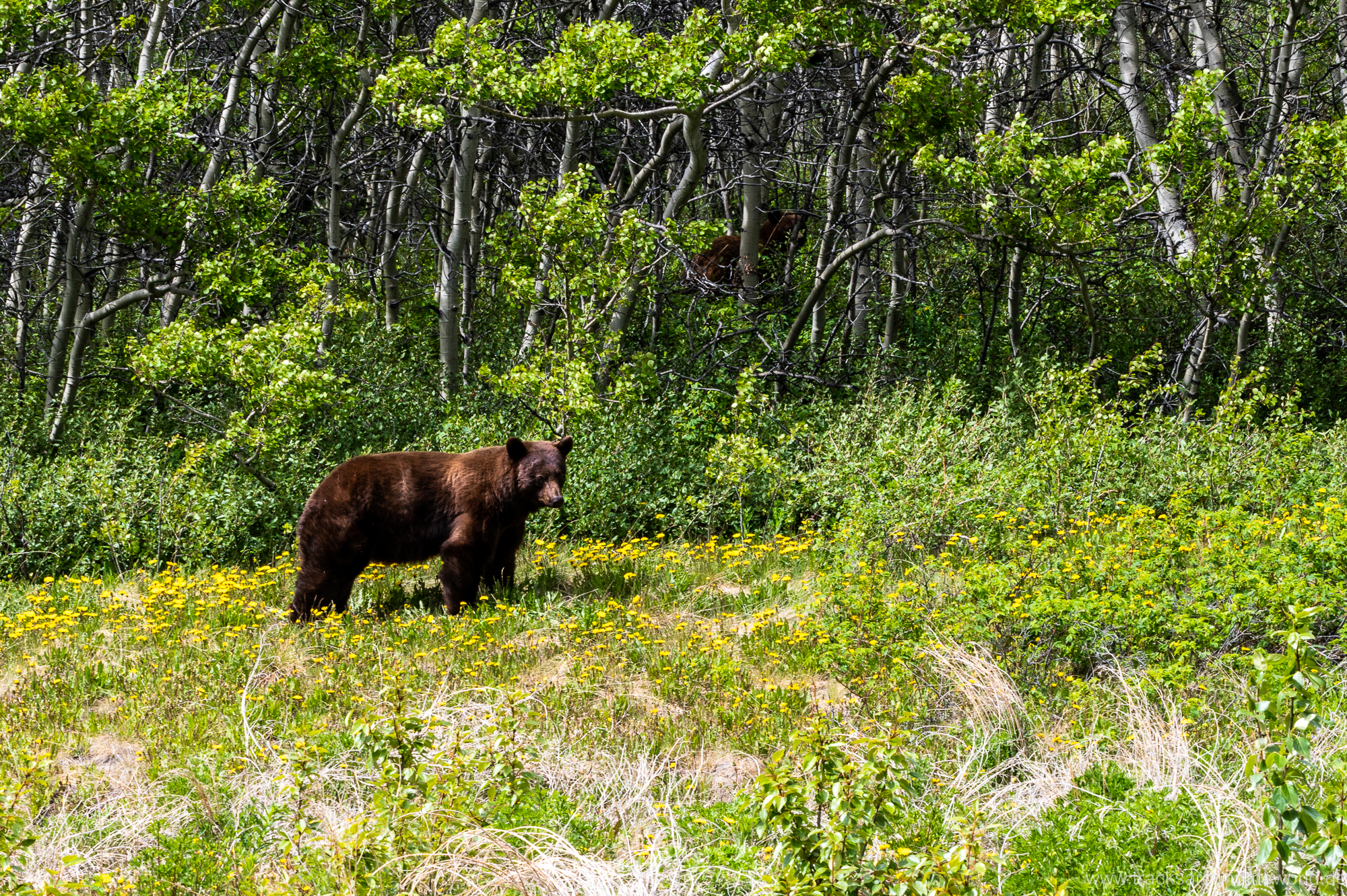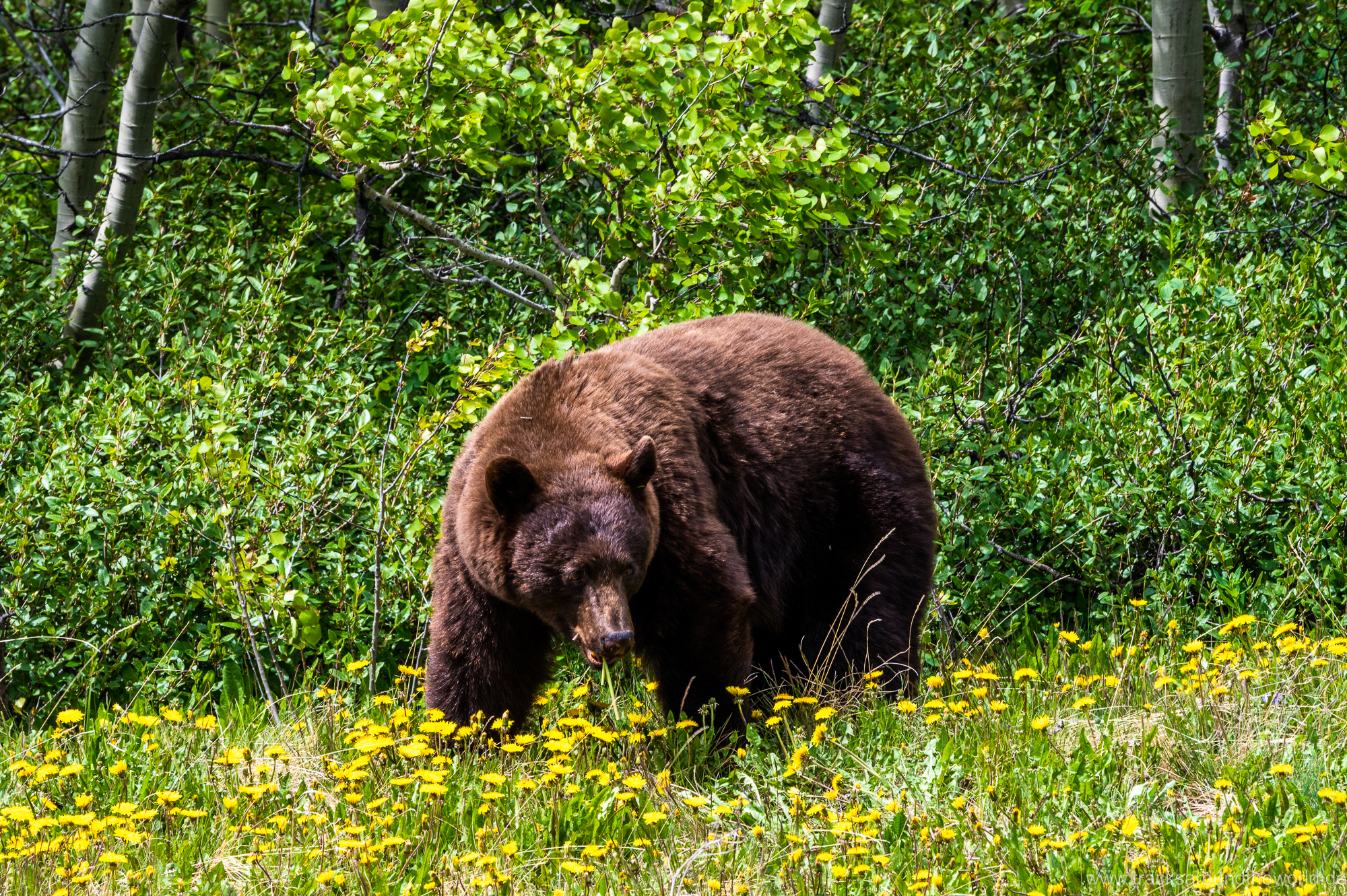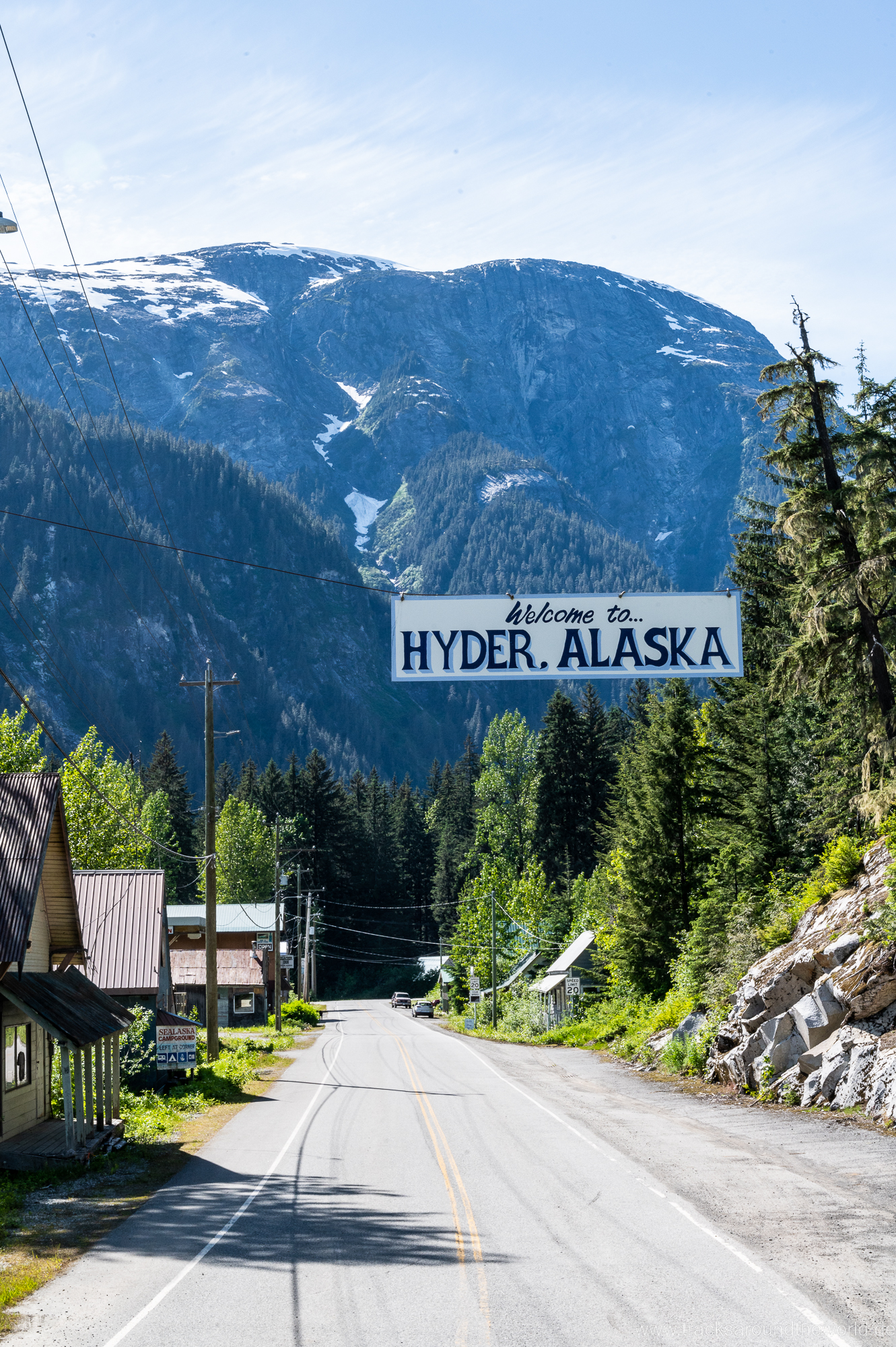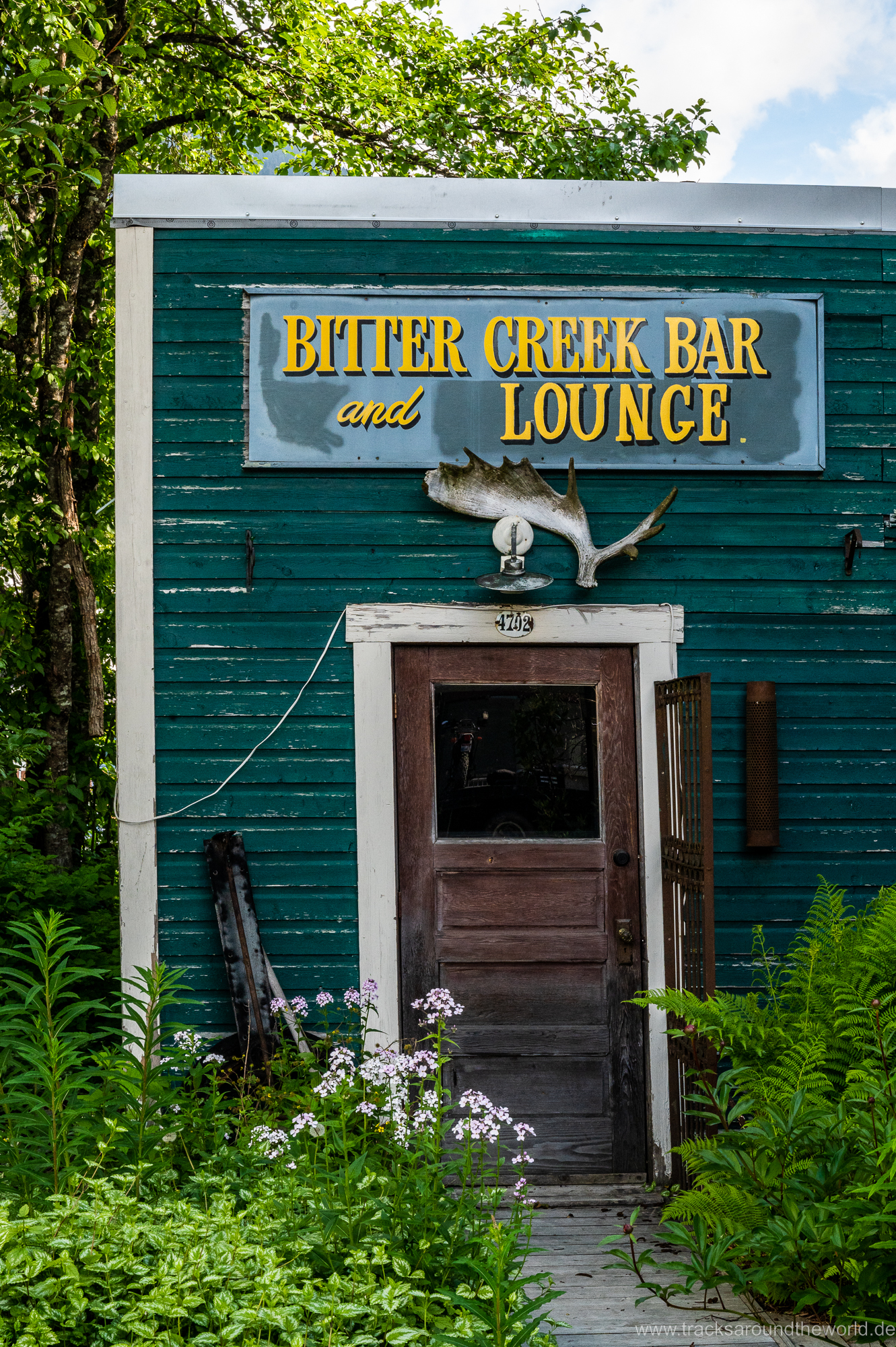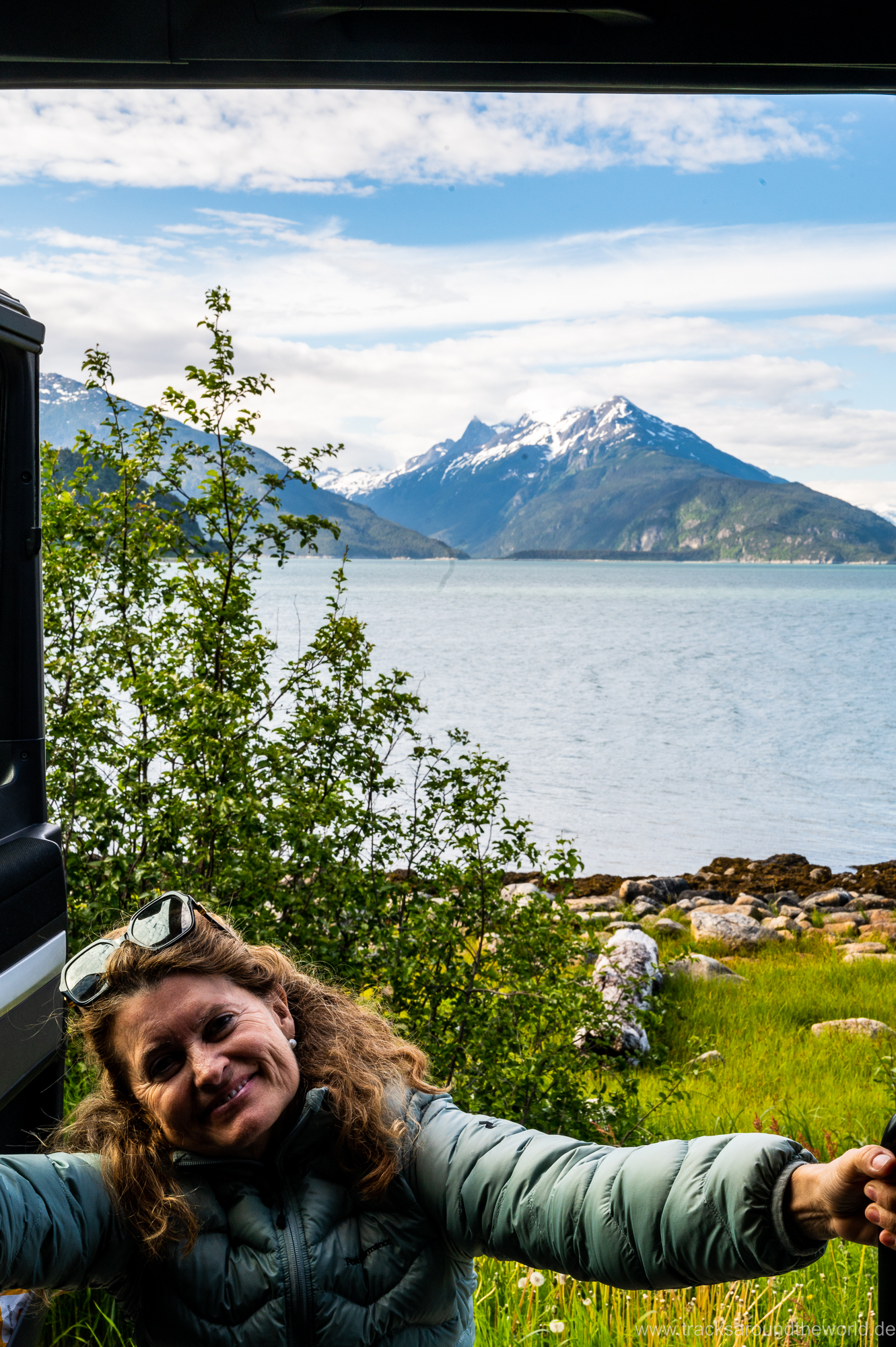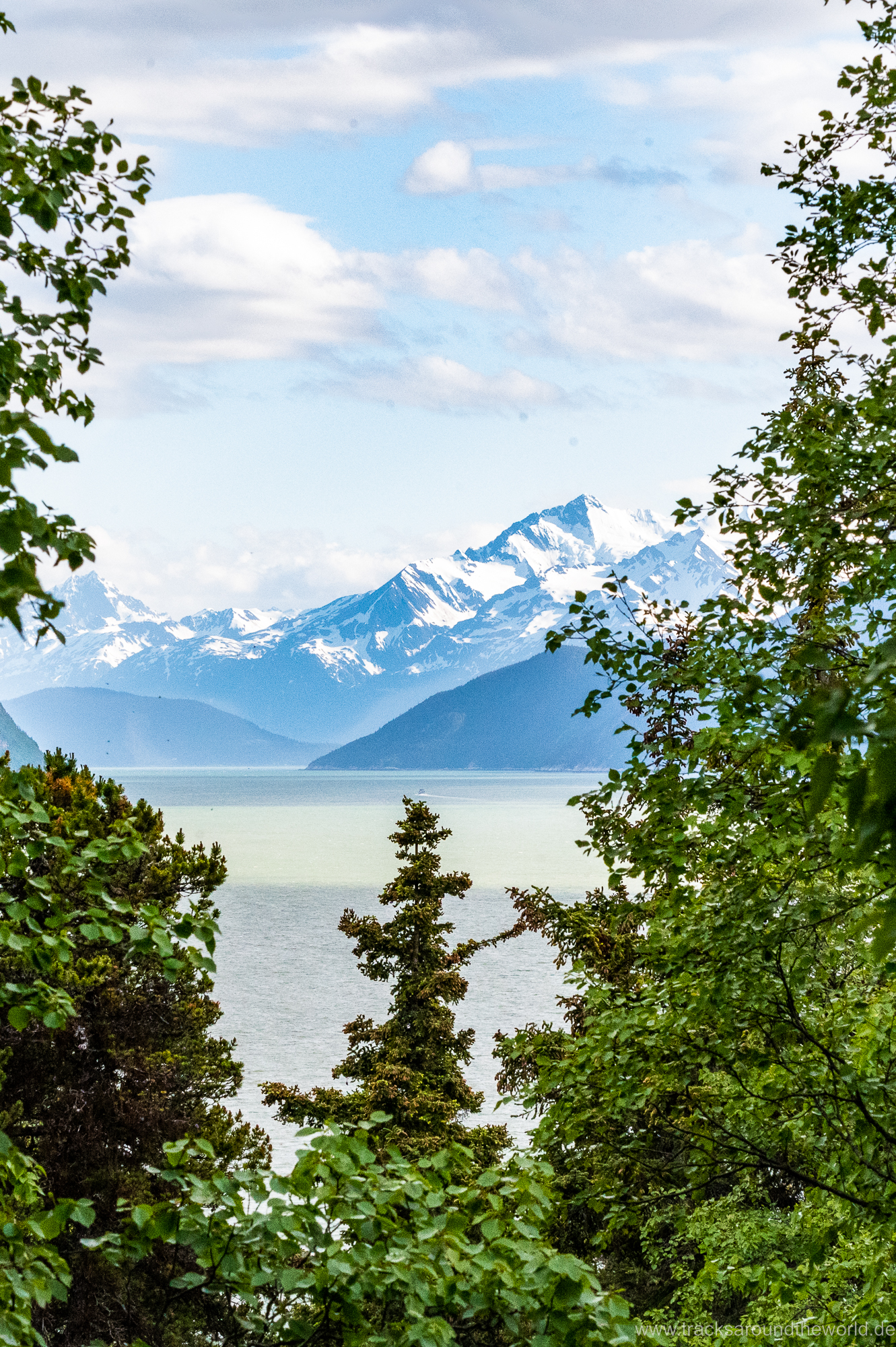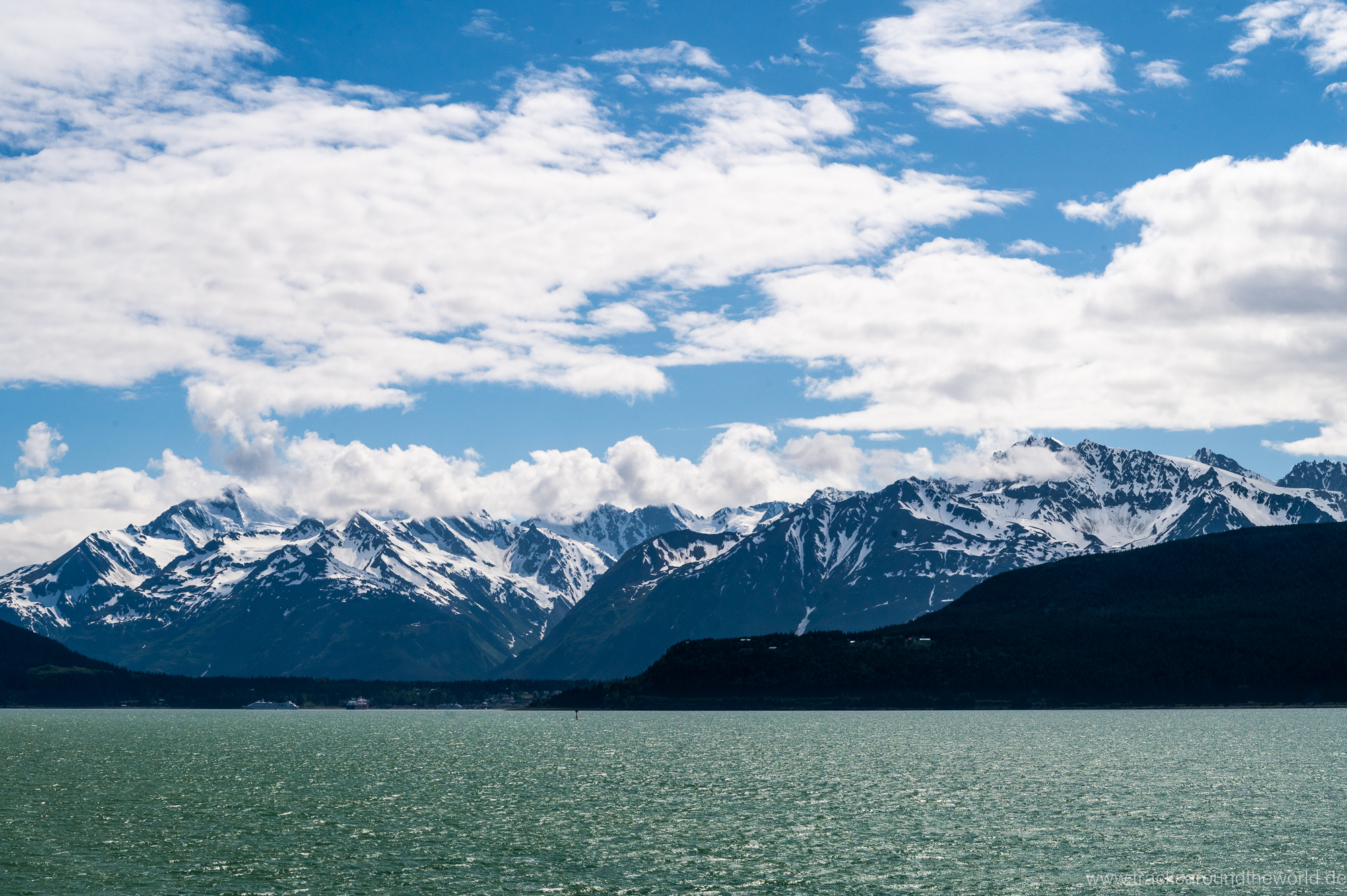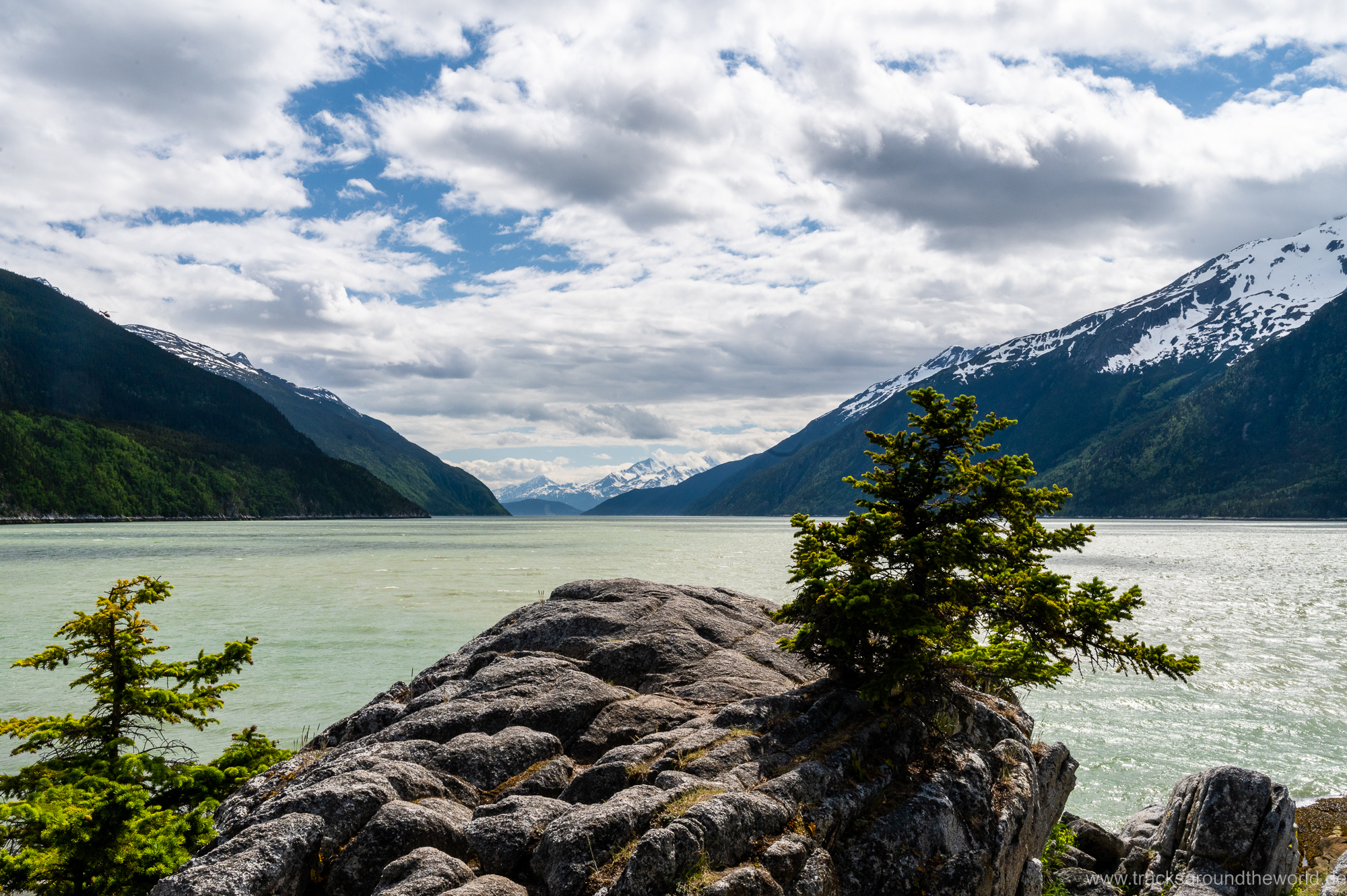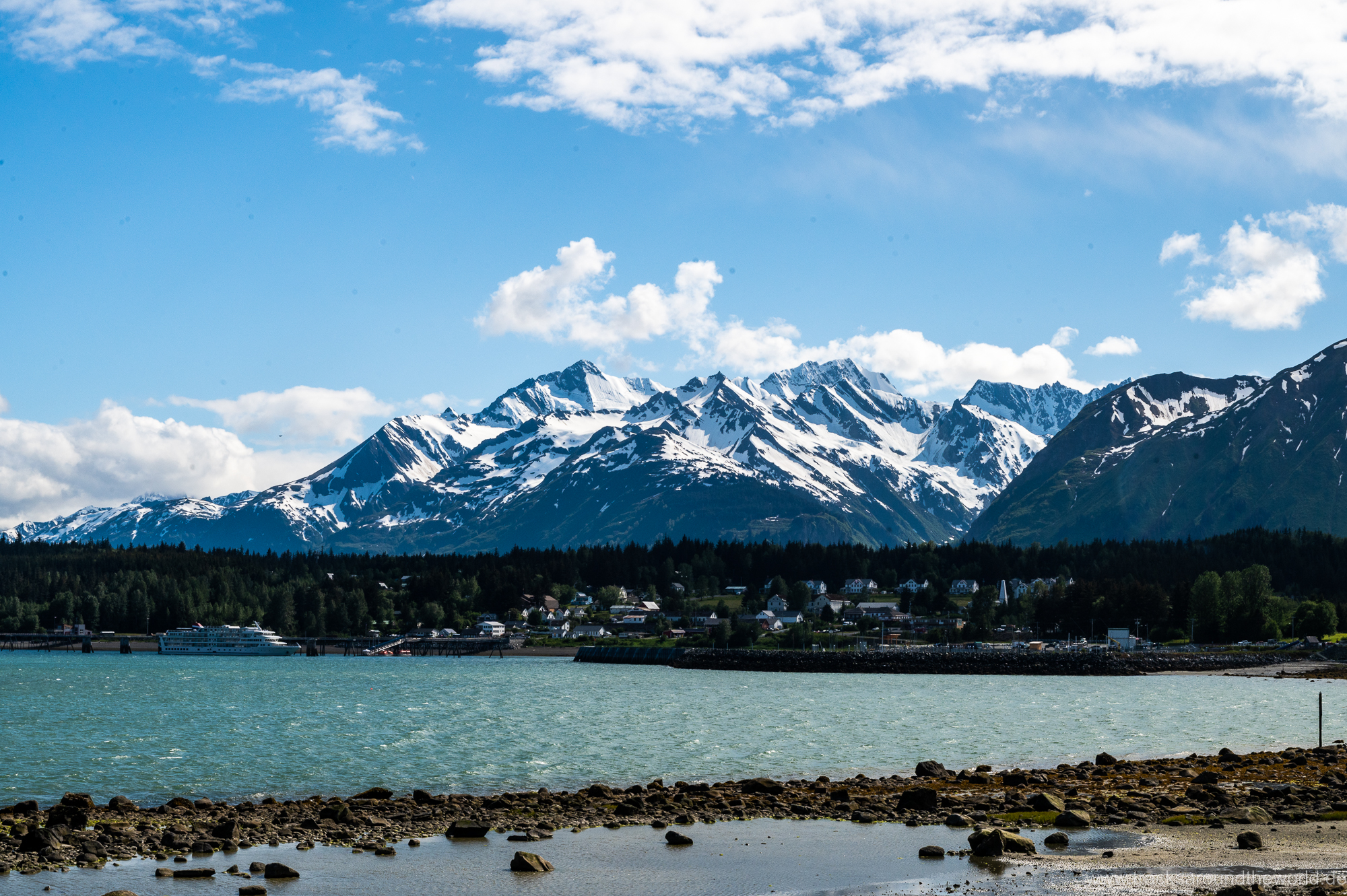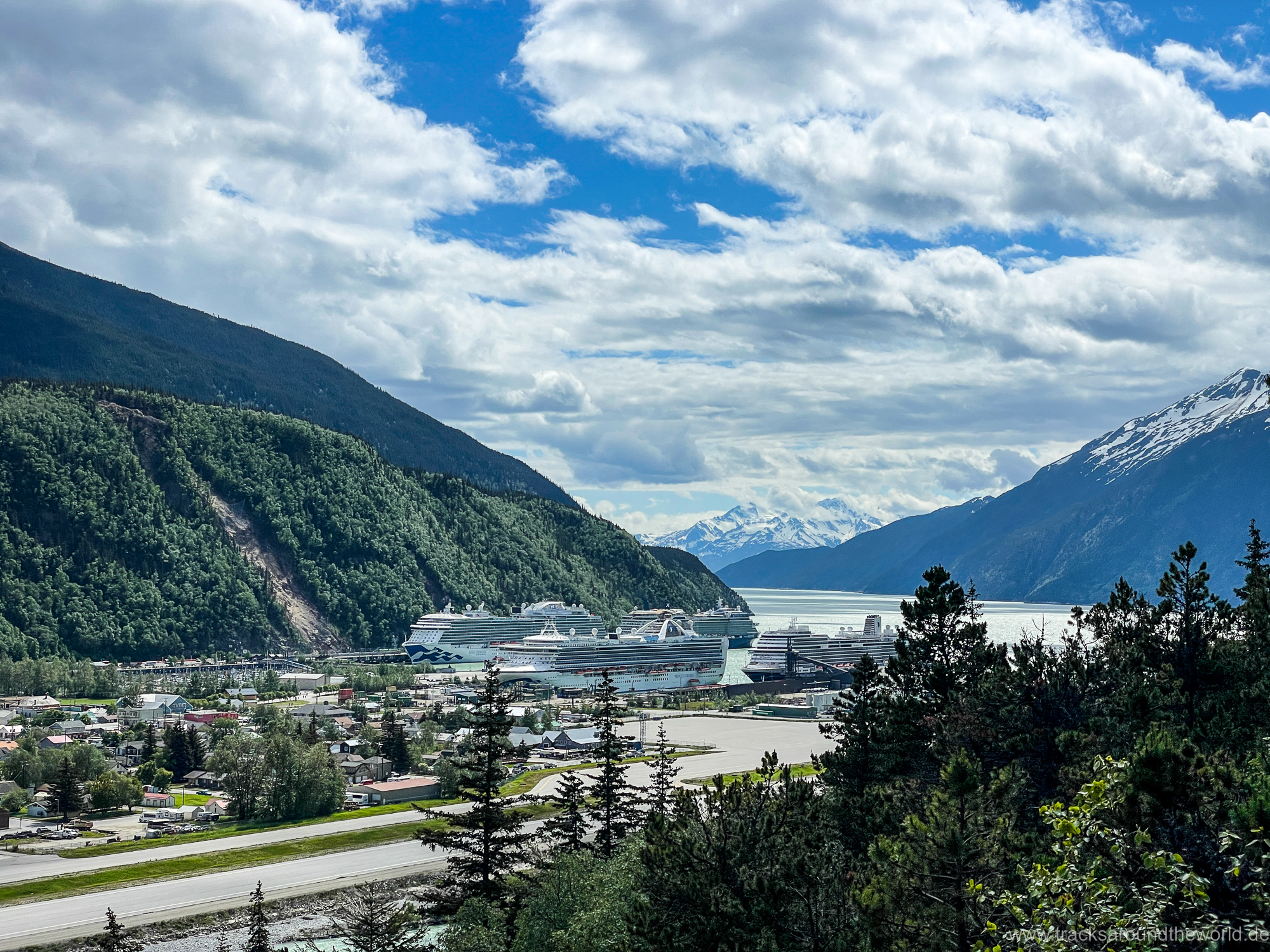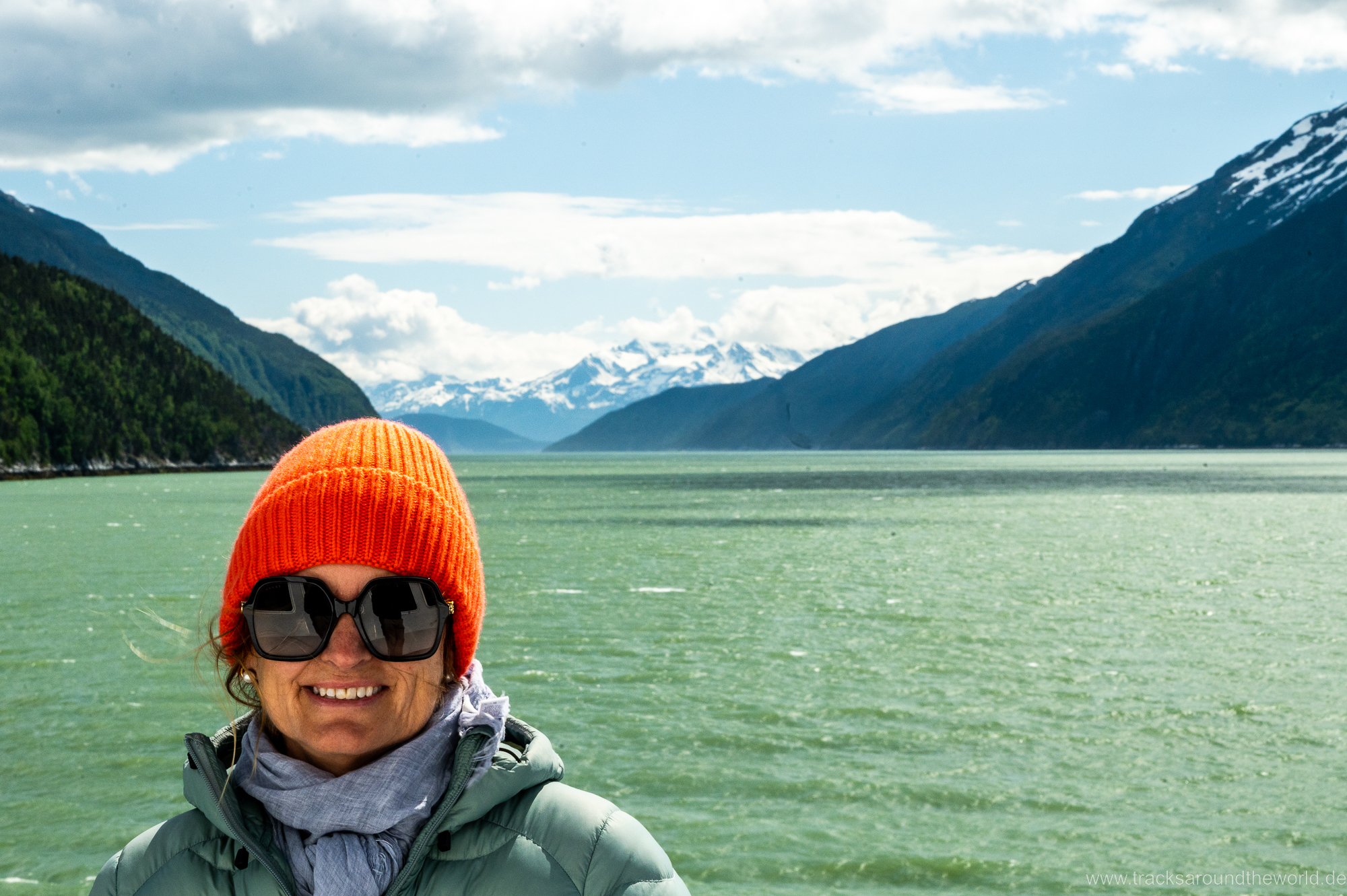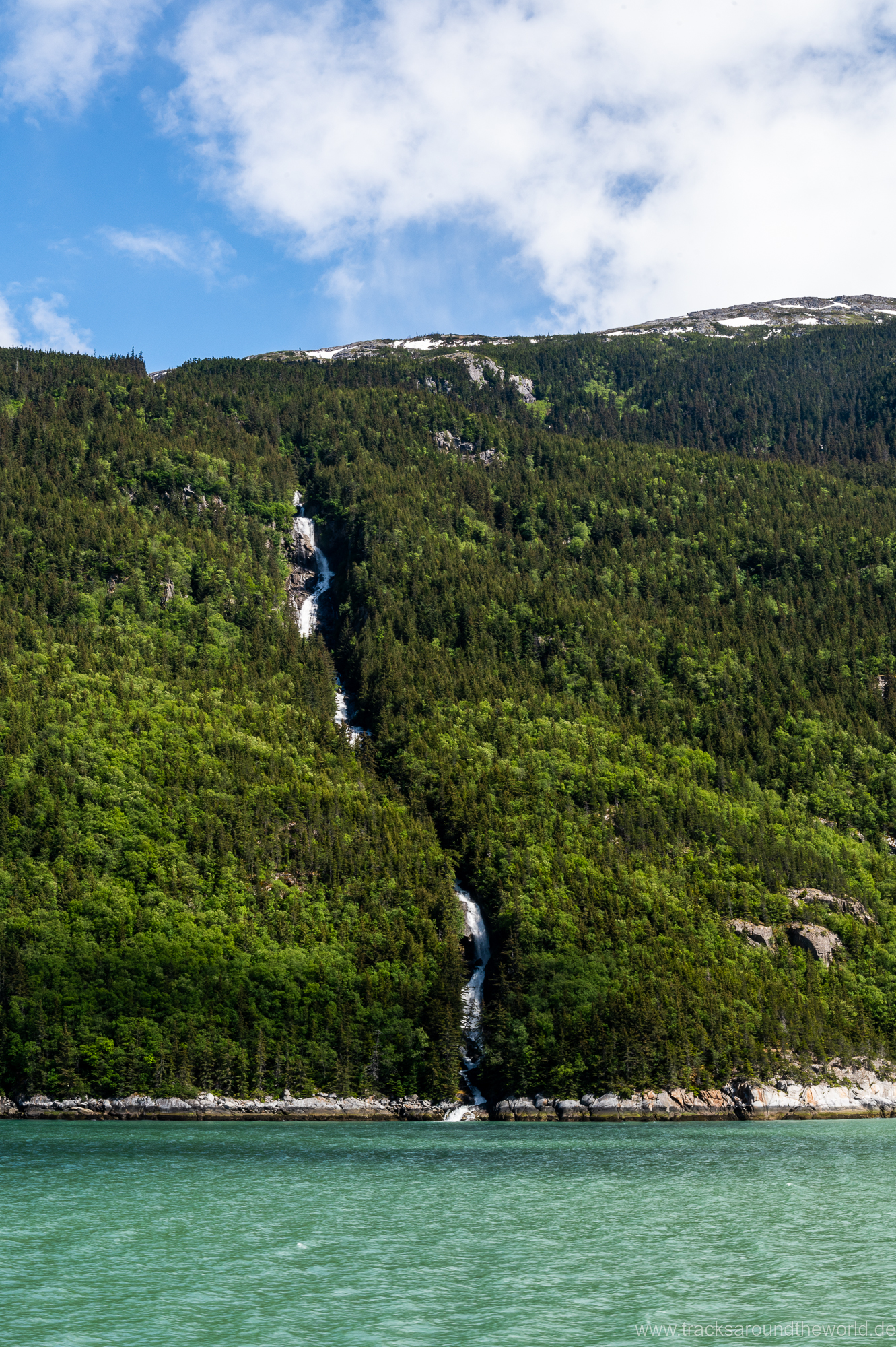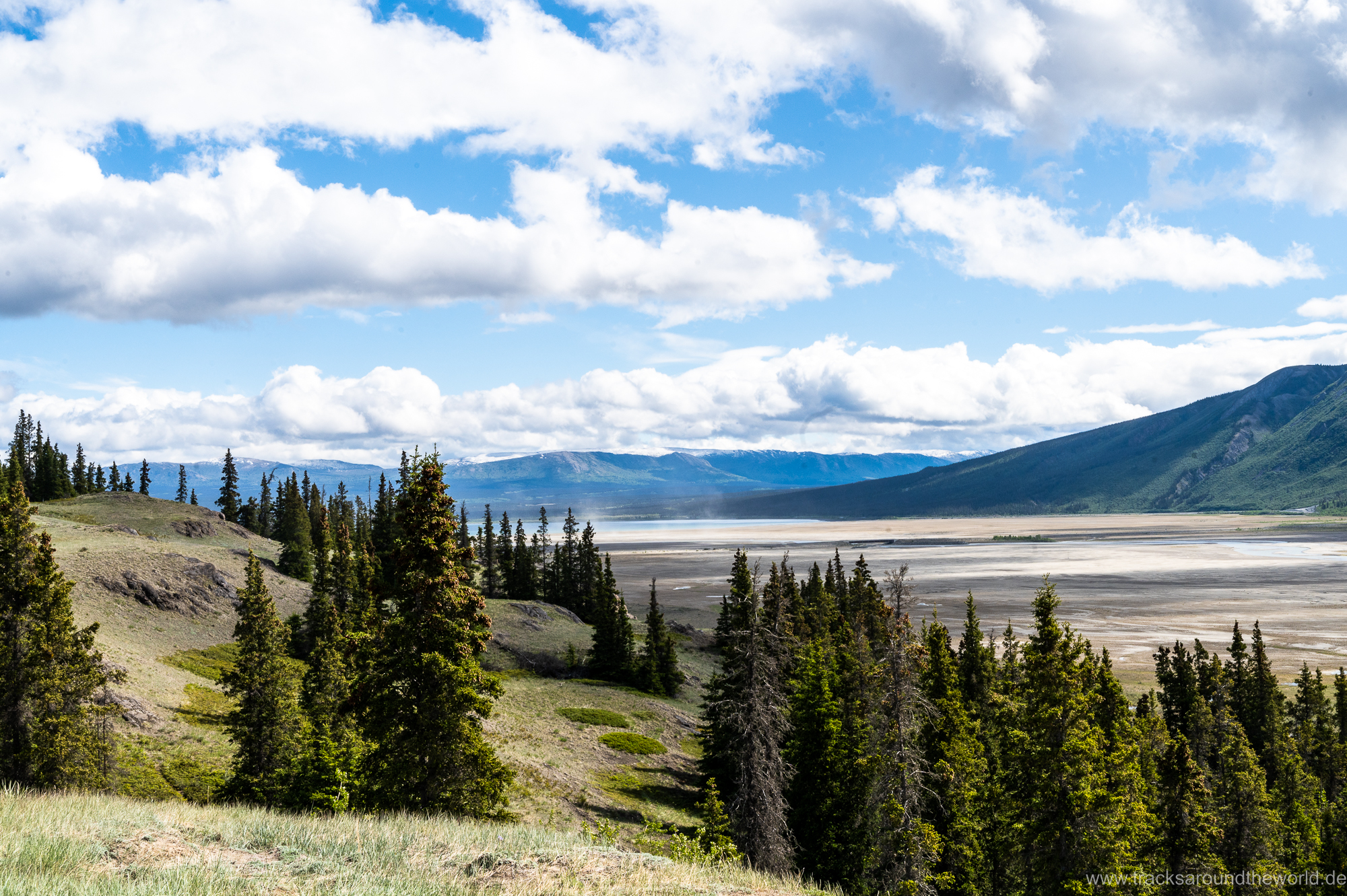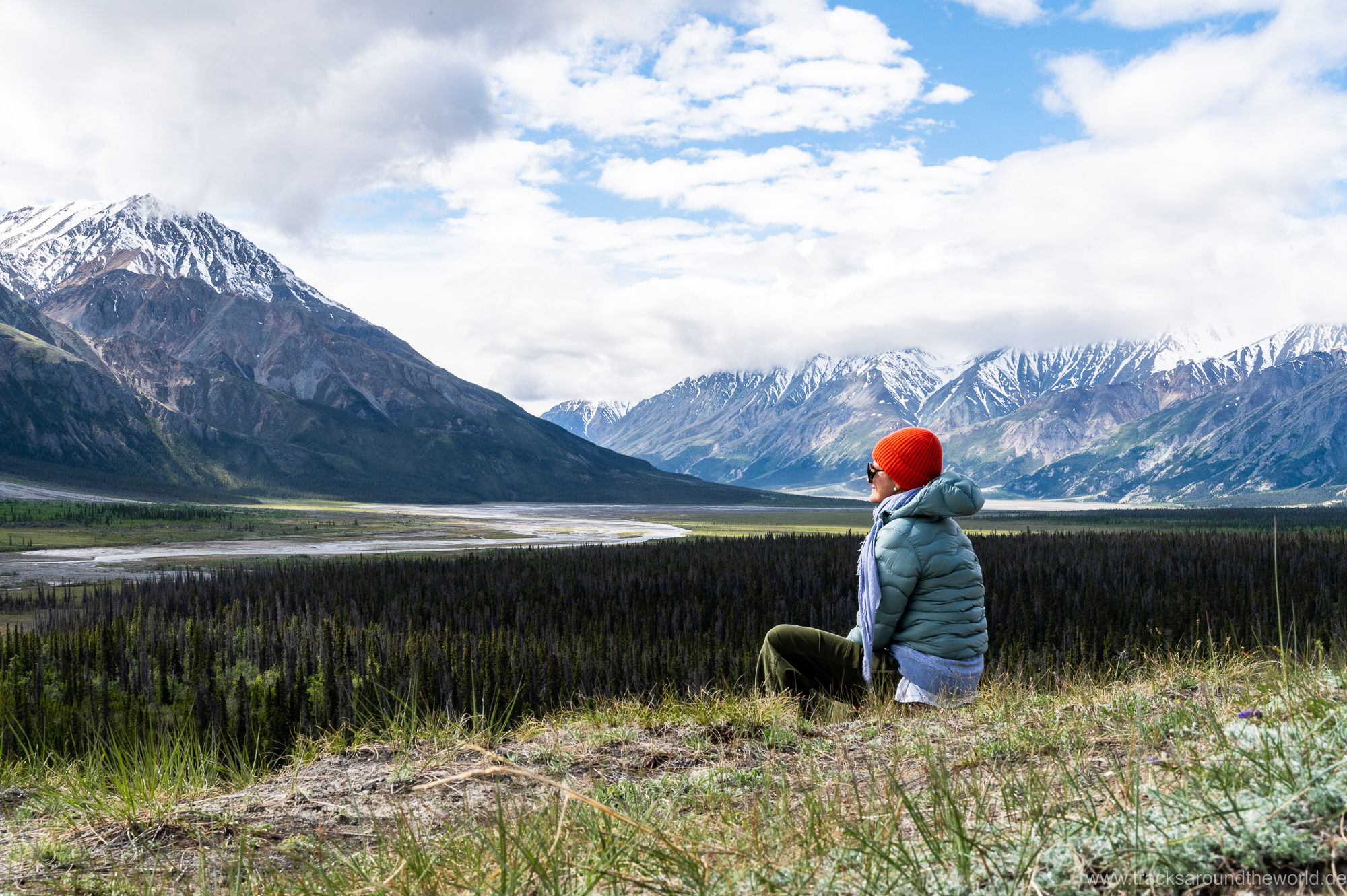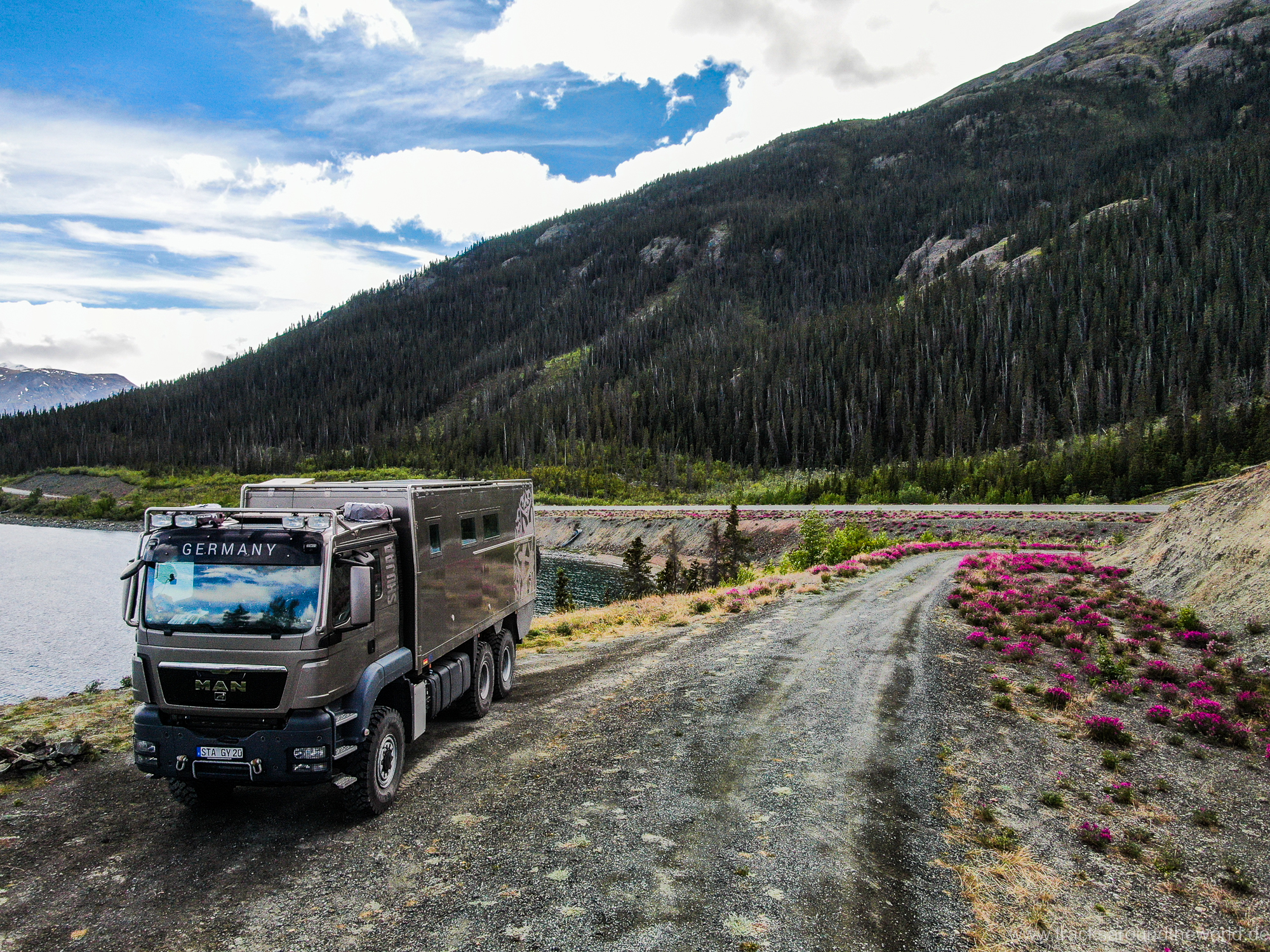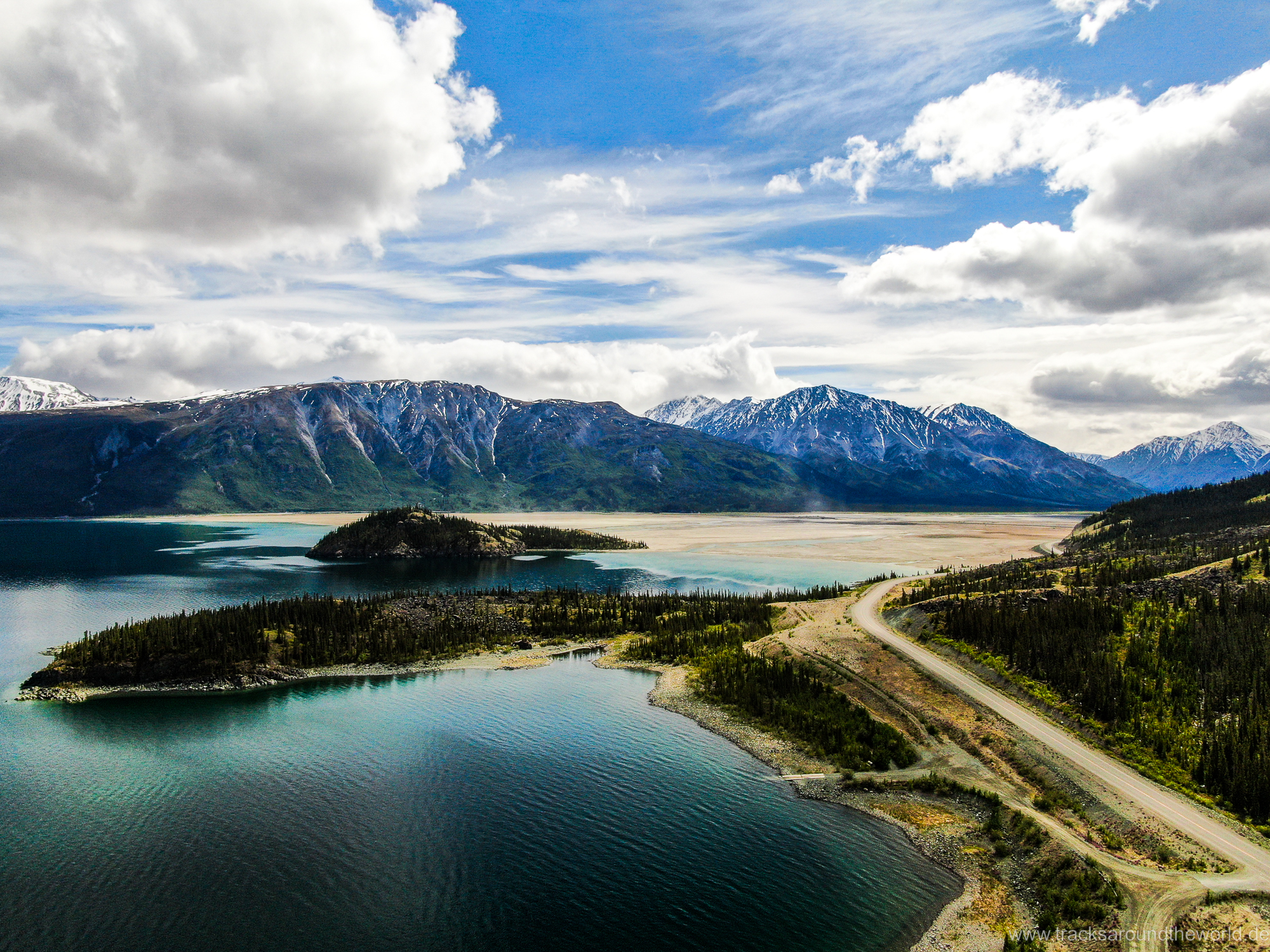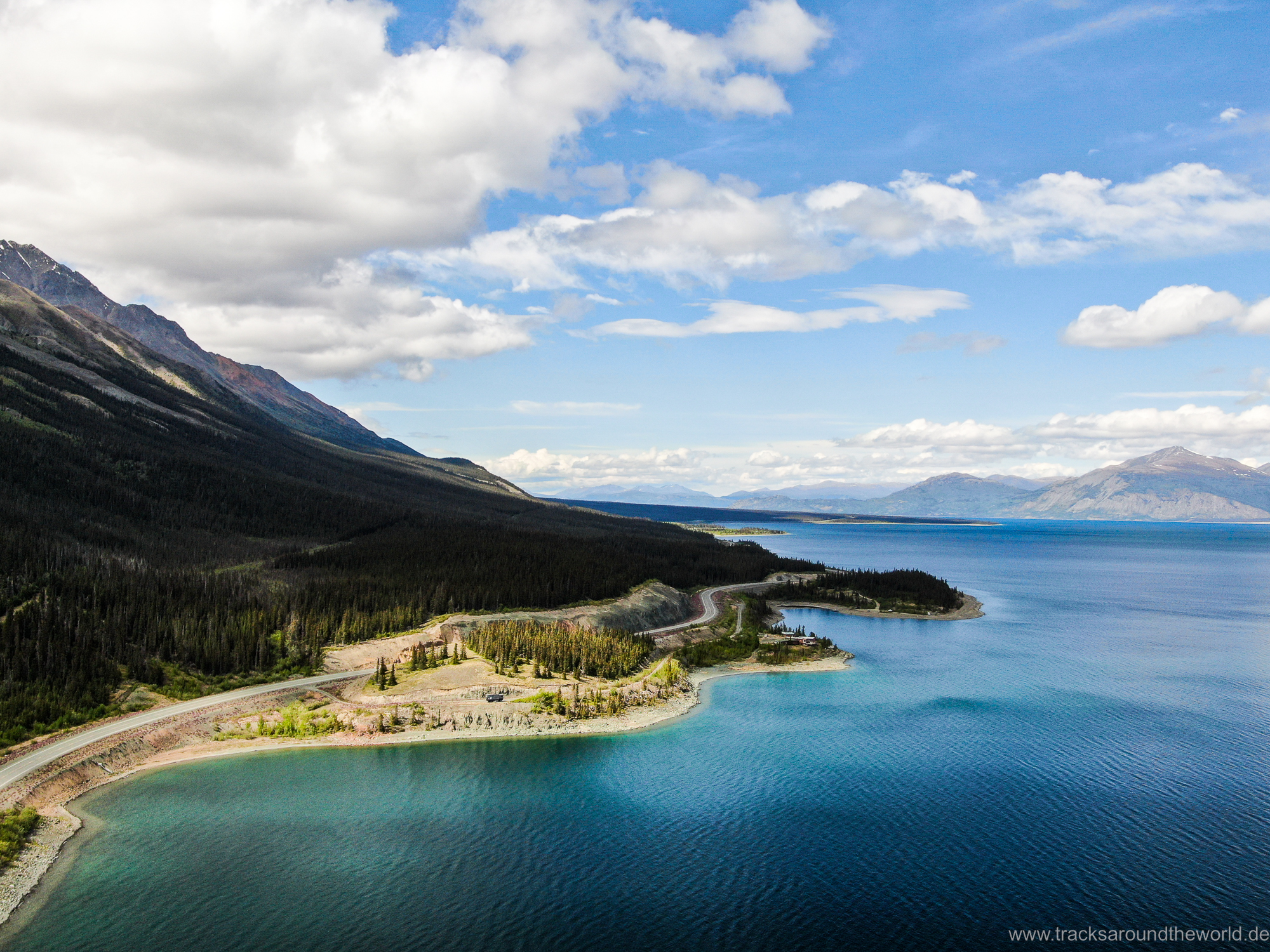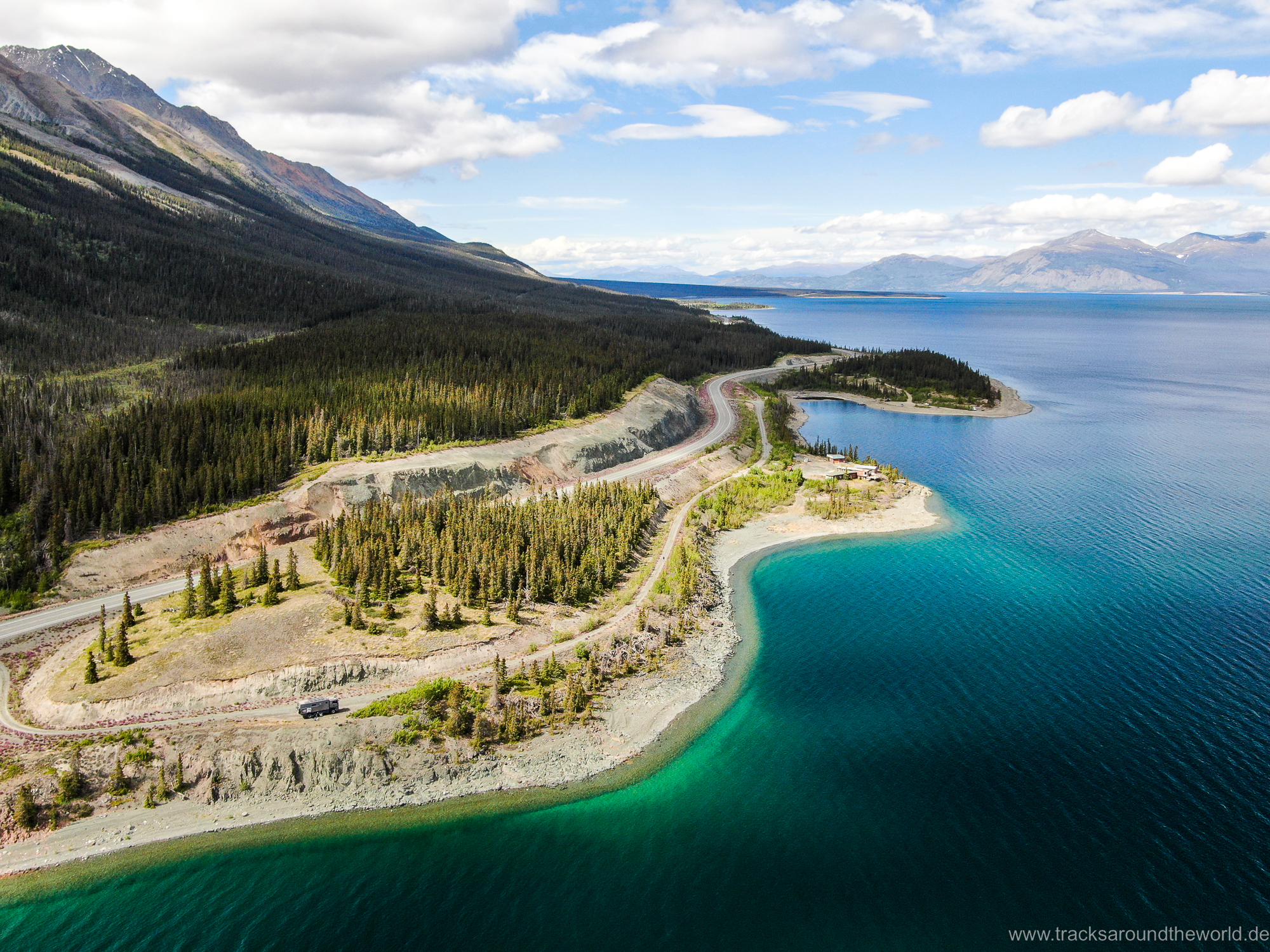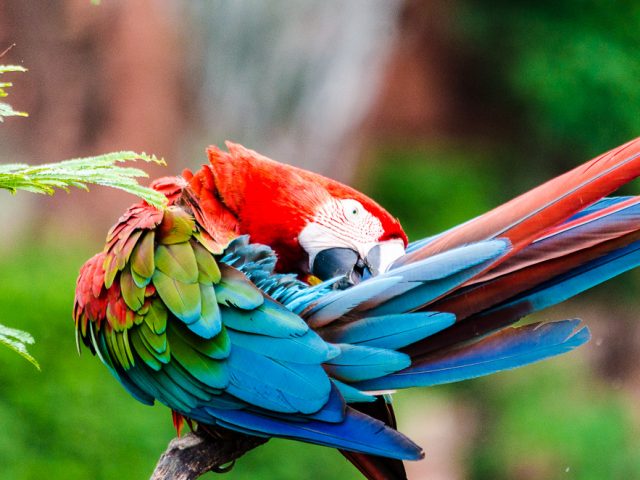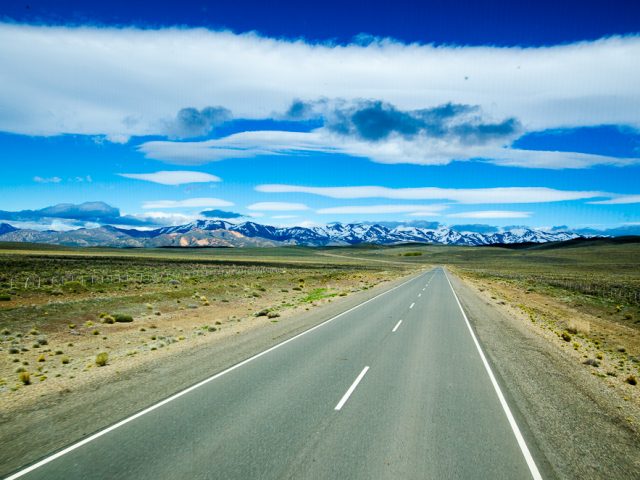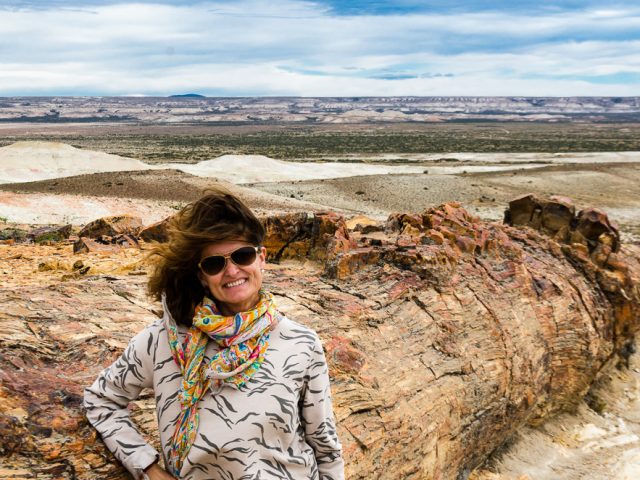We take the ferry to the capital of Vancouver Island – Victoria. Entering Canada with its friendly border officials is much easier and less complicated than it was into the U.S.A. three weeks ago at San Francisco Airport and we immediately feel more comfortable and welcome: be it the more reserved people, the more tasteful shops or the more relaxed “vibe“ without unnecessary regulations… Canada is somehow more ours! Victoria has nice old houses and a great location by the sea with a view on the snow-capped mountains of the Olympic Mountains in the U.S.A. However, as always, we quickly get through with the sightseeing of the city and head north along the surprisingly touristy east coast of Vancouver Island.
In Corwichan Bay we are fascinated by wall paintings of artists from all over Canada, which show former lumberjack work… after a paper mill, which was the largest employer in the town, had to close the idea was born to establish tourism here as a new economic basis! We find pure nature on the bubbling Taylor River, west of Port Alberni, before heading to Long Beach on the rugged Pacific coast and its pretty town of Tofino. We leave out the spotting of killer whales in the very north, as this would mean a detour of almost 800 km.
Vancouver City – again reached by a short ferry crossing from Vancouver Island – inspires us with its location, but downtown seems pretty deserted to us… lots of empty shops and homeless people. Is there a similar downturn ahead as is currently happening in downtown San Francisco? Therefore, we rather prefer to use the time to have a nice meal and to extend our travel family with “Flipper”…, an inflatable kayak so that we are prepared to exploring the endless waters of Canada and Alaska.
The well-known winter sports resort of Whistler inspires me with its extreme mountain bike downhill trails (which you get a lot of respect for as a more uphill-oriented biker without wearing dozens of protectors) before we then try out Flipper for the first time at “Green Lake”.
The further north we go, the more lonely and the landscape becomes. In Barkerville we visit an originally preserved former gold mining town, which even has a small “Chinatown”. Exciting to spend some time here and to put yourself back into this time over a century ago. Interesting how self-sufficient, but also rapidly growing (and dying again) these cities were back in the gold rush days: Barkerville was the largest city north of San Francisco and west of Chicago with 30,000 inhabitants! At the nearby Bowron Lake we go on a big kayak excursion with Flipper (the area is considered one of the most beautiful areas in the world by kayak enthusiasts and of course we with our own equipment we now consider ourselves to be part of this insider group😉). Here we can watch a moose taking a bath and after more than four hours of paddling our arms almost fall off!
For a long time, Prince George is the last city in civilization with Walmart & Co. before continuing west past various Indian settlements (e.g. Hazelton). The “Cassiar Highway” – a second connecting route to the north built in 1979 as an addition to the much more frequented “Alaska Highway” – is a paved forest road and takes us 750 km through dreamlike landscapes and solitude: for the first time we really realize the endless wideness and solitude of Northern Canada. A short detour from there to a lava field that was formed 200 years ago and via the mini-towns of Steward and Hyder to the south-eastern tip of Alaska with its famous Salmon Glacier should not be missed. Even if the last kilometers to the glacier viewpoint are still impassable due to old snow residue, we still have spectacular views and hike the area. We’re seeing our first roadside black bears, but the grizzlies that one can find in abundance at the Salmon River during salmon season aren’t here yet… salmon season doesn’t start until mid-July! We therefore see grizzlies in other situations: preferably sitting on sunny flower meadows and chewing flowers to replenish their vitamin shortness after a long winter.
The First Nations make up a significant portion of the population here. We also come across beautiful cultural sites from time to time and can marvel at many totems that have their home in this region.
The turquoise Boya Lake with its countless islands is again a great area for our kayak “Flipper”. We are glad that we made the purchase after a long consideration! The experience of paddling through this breathtakingly beautiful lake world is simply unforgettable.
The subsequent “Alaska Highway” was built in 1942 in a record time of just eight months to ensure the military defense of Alaska during World War II after the Japanese had occupied a chain of islands there. It’s a bit bigger and busier again than the “Cassiar Highway”, but no less spectacular. After this loneliness and another very unfriendly border crossing into the U.S.A./Alaska, the town of Skagway brings us back to the reality of the tourism age: up to six huge cruise ships are in port here at the same time. The actually very beautiful former gold digger town is so congested and the offered commercial activities from helicopter sightseeing flights to rafting, guided mountain bike tours and horseback riding have no limits. It’s amazing how the Americans have commercialized the location!
So we are glad that after a wonderful ferry ride along a fjord surrounded by glaciers we arrive in Haines and are back in the lonely surroundings we love. Via the Chilkoot Pass – another well-known, former gold prospector route – we travel back to the more tranquil Canada (with its friendly border officials 😉) and continue our journey north. In Kluane N.P. with numerous five-thousand peaks and the largest contiguous glacier area outside the pool regions, we make a great hike and in the evening we have the first rain after five weeks of traveling with almost exclusively sunny weather.


